Quick filters:
Sabz Stock Photos and Images
 Sabz Burj, octagonal Mughal mausoleum, Nizamuddin, Delhi, India, Asia Stock Photohttps://www.alamy.com/image-license-details/?v=1https://www.alamy.com/sabz-burj-octagonal-mughal-mausoleum-nizamuddin-delhi-india-asia-image236106550.html
Sabz Burj, octagonal Mughal mausoleum, Nizamuddin, Delhi, India, Asia Stock Photohttps://www.alamy.com/image-license-details/?v=1https://www.alamy.com/sabz-burj-octagonal-mughal-mausoleum-nizamuddin-delhi-india-asia-image236106550.htmlRMRM3G8P–Sabz Burj, octagonal Mughal mausoleum, Nizamuddin, Delhi, India, Asia
 Sabz Burj, a Persian-influenced dome in Delhi, India has Persian-blue coloured tiles on its outer surface. located close to the Humayun’s Tomb Complex. The tower is referred to as “Neeli Chattri” (Blue umbrella). supposedly built in between 1530-50 A.D. influenced by Central Asian architecture. Stock Photohttps://www.alamy.com/image-license-details/?v=1https://www.alamy.com/stock-image-sabz-burj-a-persian-influenced-dome-in-delhi-india-has-persian-blue-166080313.html
Sabz Burj, a Persian-influenced dome in Delhi, India has Persian-blue coloured tiles on its outer surface. located close to the Humayun’s Tomb Complex. The tower is referred to as “Neeli Chattri” (Blue umbrella). supposedly built in between 1530-50 A.D. influenced by Central Asian architecture. Stock Photohttps://www.alamy.com/image-license-details/?v=1https://www.alamy.com/stock-image-sabz-burj-a-persian-influenced-dome-in-delhi-india-has-persian-blue-166080313.htmlRMKJ5H3N–Sabz Burj, a Persian-influenced dome in Delhi, India has Persian-blue coloured tiles on its outer surface. located close to the Humayun’s Tomb Complex. The tower is referred to as “Neeli Chattri” (Blue umbrella). supposedly built in between 1530-50 A.D. influenced by Central Asian architecture.
 Jug in the form of a recumbent Bull Ceramic western Iran Luristan Chekka Sabz 1st millennium B.C. Iranian Stock Photohttps://www.alamy.com/image-license-details/?v=1https://www.alamy.com/stock-photo-jug-in-the-form-of-a-recumbent-bull-ceramic-western-iran-luristan-51072866.html
Jug in the form of a recumbent Bull Ceramic western Iran Luristan Chekka Sabz 1st millennium B.C. Iranian Stock Photohttps://www.alamy.com/image-license-details/?v=1https://www.alamy.com/stock-photo-jug-in-the-form-of-a-recumbent-bull-ceramic-western-iran-luristan-51072866.htmlRMCY2FXX–Jug in the form of a recumbent Bull Ceramic western Iran Luristan Chekka Sabz 1st millennium B.C. Iranian
 Man's surcoat, late 1800s. Uzbekistan, Shahr-i Sabz. Embroidery, cross-stitch: silk; overall: 150 x 218.4 cm (59 1/16 x 86 in Stock Photohttps://www.alamy.com/image-license-details/?v=1https://www.alamy.com/mans-surcoat-late-1800s-uzbekistan-shahr-i-sabz-embroidery-cross-stitch-silk-overall-150-x-2184-cm-59-116-x-86-in-image240383697.html
Man's surcoat, late 1800s. Uzbekistan, Shahr-i Sabz. Embroidery, cross-stitch: silk; overall: 150 x 218.4 cm (59 1/16 x 86 in Stock Photohttps://www.alamy.com/image-license-details/?v=1https://www.alamy.com/mans-surcoat-late-1800s-uzbekistan-shahr-i-sabz-embroidery-cross-stitch-silk-overall-150-x-2184-cm-59-116-x-86-in-image240383697.htmlRMRY2BT1–Man's surcoat, late 1800s. Uzbekistan, Shahr-i Sabz. Embroidery, cross-stitch: silk; overall: 150 x 218.4 cm (59 1/16 x 86 in
 Sabz Burj tomb Delhi India Stock Photohttps://www.alamy.com/image-license-details/?v=1https://www.alamy.com/stock-photo-sabz-burj-tomb-delhi-india-39937192.html
Sabz Burj tomb Delhi India Stock Photohttps://www.alamy.com/image-license-details/?v=1https://www.alamy.com/stock-photo-sabz-burj-tomb-delhi-india-39937192.htmlRMC8Y888–Sabz Burj tomb Delhi India
 Vessel in form of horned quadruped, Iran, Iron Age III, Date ca. 700–550 B.C., Iran, Luristan, Chekka Sabz, Iran, Ceramic, 15 in. (38.1 cm), Ceramics-Vessels Stock Photohttps://www.alamy.com/image-license-details/?v=1https://www.alamy.com/vessel-in-form-of-horned-quadruped-iran-iron-age-iii-date-ca-700550-bc-iran-luristan-chekka-sabz-iran-ceramic-15-in-381-cm-ceramics-vessels-image344667554.html
Vessel in form of horned quadruped, Iran, Iron Age III, Date ca. 700–550 B.C., Iran, Luristan, Chekka Sabz, Iran, Ceramic, 15 in. (38.1 cm), Ceramics-Vessels Stock Photohttps://www.alamy.com/image-license-details/?v=1https://www.alamy.com/vessel-in-form-of-horned-quadruped-iran-iron-age-iii-date-ca-700550-bc-iran-luristan-chekka-sabz-iran-ceramic-15-in-381-cm-ceramics-vessels-image344667554.htmlRM2B0MXYE–Vessel in form of horned quadruped, Iran, Iron Age III, Date ca. 700–550 B.C., Iran, Luristan, Chekka Sabz, Iran, Ceramic, 15 in. (38.1 cm), Ceramics-Vessels
 Aq Saray, Timur's palace, Shahr-i Sabz, Uzbekistan Stock Photohttps://www.alamy.com/image-license-details/?v=1https://www.alamy.com/stock-photo-aq-saray-timurs-palace-shahr-i-sabz-uzbekistan-50752616.html
Aq Saray, Timur's palace, Shahr-i Sabz, Uzbekistan Stock Photohttps://www.alamy.com/image-license-details/?v=1https://www.alamy.com/stock-photo-aq-saray-timurs-palace-shahr-i-sabz-uzbekistan-50752616.htmlRMCXFYDC–Aq Saray, Timur's palace, Shahr-i Sabz, Uzbekistan
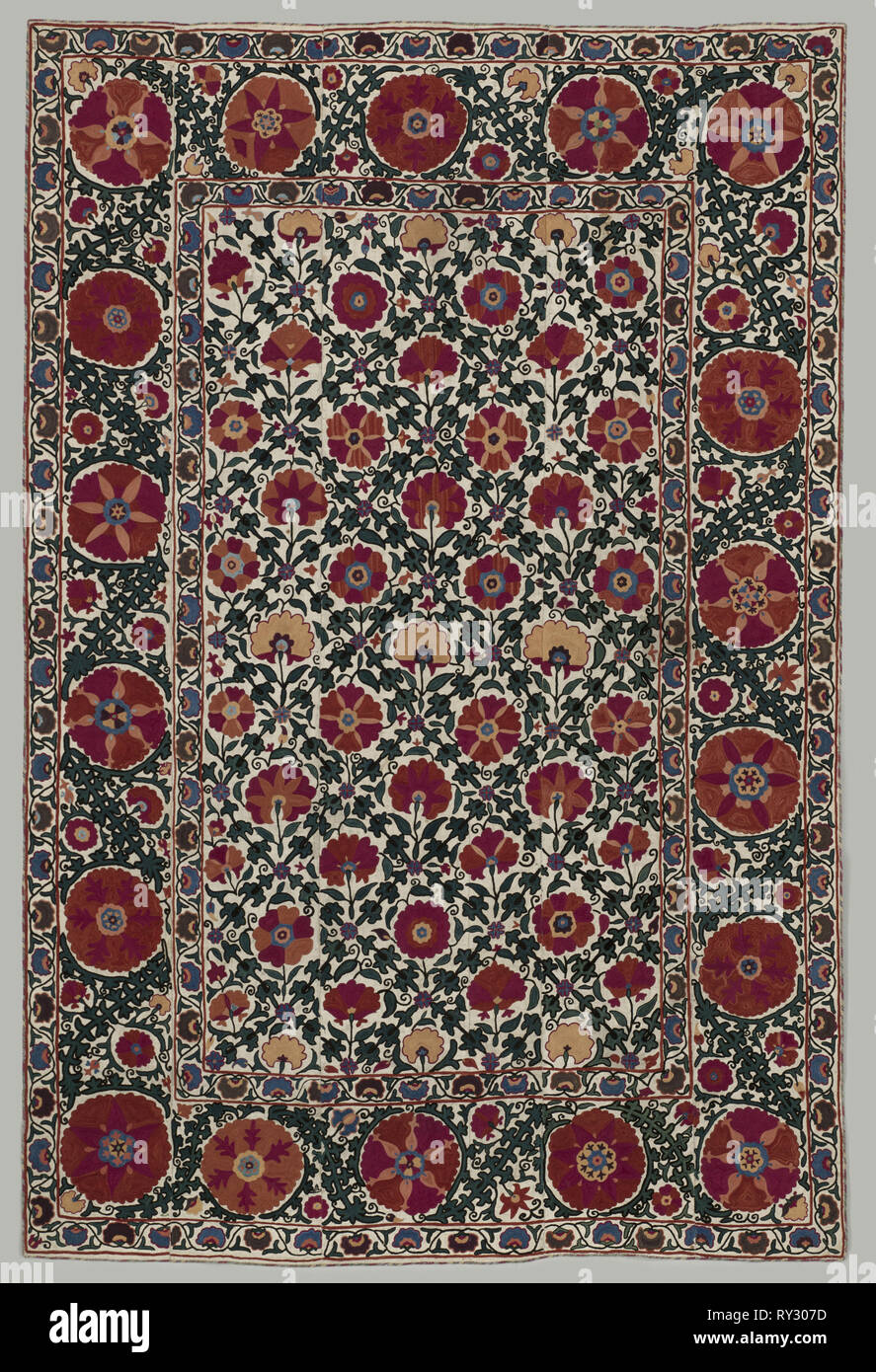 Wall Hanging, 1850-1899. Uzbekistan, Bukhara or Shahr-i Sabz, 19th century. Silk, cotton; plain weave, embroidery, tambour chain stitch; average: 248.5 x 161.3 cm (97 13/16 x 63 1/2 in Stock Photohttps://www.alamy.com/image-license-details/?v=1https://www.alamy.com/wall-hanging-1850-1899-uzbekistan-bukhara-or-shahr-i-sabz-19th-century-silk-cotton-plain-weave-embroidery-tambour-chain-stitch-average-2485-x-1613-cm-97-1316-x-63-12-in-image240396561.html
Wall Hanging, 1850-1899. Uzbekistan, Bukhara or Shahr-i Sabz, 19th century. Silk, cotton; plain weave, embroidery, tambour chain stitch; average: 248.5 x 161.3 cm (97 13/16 x 63 1/2 in Stock Photohttps://www.alamy.com/image-license-details/?v=1https://www.alamy.com/wall-hanging-1850-1899-uzbekistan-bukhara-or-shahr-i-sabz-19th-century-silk-cotton-plain-weave-embroidery-tambour-chain-stitch-average-2485-x-1613-cm-97-1316-x-63-12-in-image240396561.htmlRMRY307D–Wall Hanging, 1850-1899. Uzbekistan, Bukhara or Shahr-i Sabz, 19th century. Silk, cotton; plain weave, embroidery, tambour chain stitch; average: 248.5 x 161.3 cm (97 13/16 x 63 1/2 in
 Iran Khorasan province Mashad Gombad é Sabz Mausoleum Stock Photohttps://www.alamy.com/image-license-details/?v=1https://www.alamy.com/iran-khorasan-province-mashad-gombad-sabz-mausoleum-image8869188.html
Iran Khorasan province Mashad Gombad é Sabz Mausoleum Stock Photohttps://www.alamy.com/image-license-details/?v=1https://www.alamy.com/iran-khorasan-province-mashad-gombad-sabz-mausoleum-image8869188.htmlRMANGCM5–Iran Khorasan province Mashad Gombad é Sabz Mausoleum
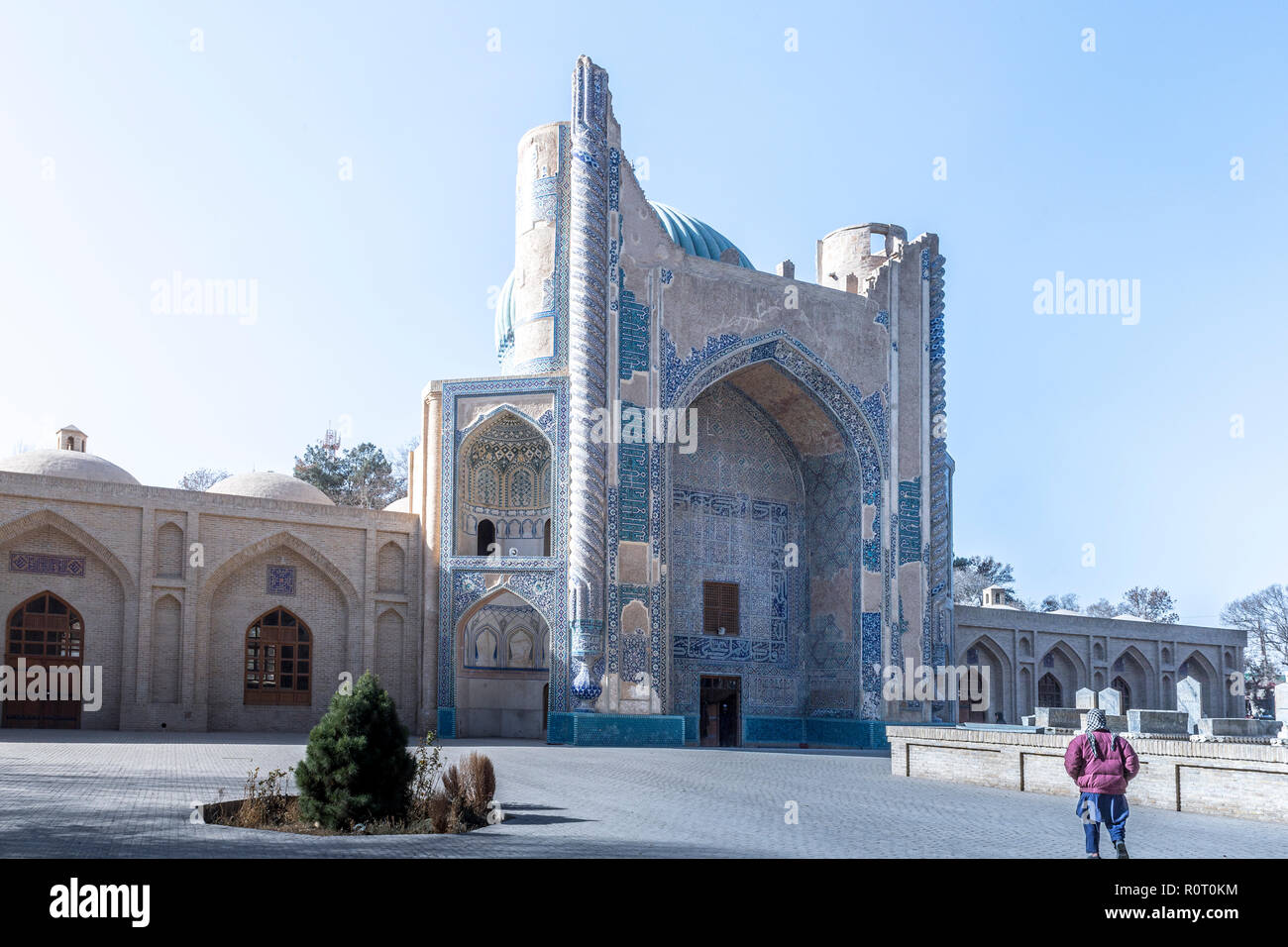 The Green Mosque (Masjid Sabz), Balkh city, Balkh Province, North Afghanistan Stock Photohttps://www.alamy.com/image-license-details/?v=1https://www.alamy.com/the-green-mosque-masjid-sabz-balkh-city-balkh-province-north-afghanistan-image224262184.html
The Green Mosque (Masjid Sabz), Balkh city, Balkh Province, North Afghanistan Stock Photohttps://www.alamy.com/image-license-details/?v=1https://www.alamy.com/the-green-mosque-masjid-sabz-balkh-city-balkh-province-north-afghanistan-image224262184.htmlRMR0T0KM–The Green Mosque (Masjid Sabz), Balkh city, Balkh Province, North Afghanistan
 Ornate ceiling in the Timurid Mausoleum, Shakhrisabz, Shar-e Sabz or Shahrisabz, Uzbekistan Stock Photohttps://www.alamy.com/image-license-details/?v=1https://www.alamy.com/stock-photo-ornate-ceiling-in-the-timurid-mausoleum-shakhrisabz-shar-e-sabz-or-71793600.html
Ornate ceiling in the Timurid Mausoleum, Shakhrisabz, Shar-e Sabz or Shahrisabz, Uzbekistan Stock Photohttps://www.alamy.com/image-license-details/?v=1https://www.alamy.com/stock-photo-ornate-ceiling-in-the-timurid-mausoleum-shakhrisabz-shar-e-sabz-or-71793600.htmlRME4PDD4–Ornate ceiling in the Timurid Mausoleum, Shakhrisabz, Shar-e Sabz or Shahrisabz, Uzbekistan
 Geometric tiles on the exterior of the Green Mosque (Masjid Sabz) in Balkh, northern Afghanistan. Stock Photohttps://www.alamy.com/image-license-details/?v=1https://www.alamy.com/geometric-tiles-on-the-exterior-of-the-green-mosque-masjid-sabz-in-balkh-northern-afghanistan-image614732160.html
Geometric tiles on the exterior of the Green Mosque (Masjid Sabz) in Balkh, northern Afghanistan. Stock Photohttps://www.alamy.com/image-license-details/?v=1https://www.alamy.com/geometric-tiles-on-the-exterior-of-the-green-mosque-masjid-sabz-in-balkh-northern-afghanistan-image614732160.htmlRF2XM3D40–Geometric tiles on the exterior of the Green Mosque (Masjid Sabz) in Balkh, northern Afghanistan.
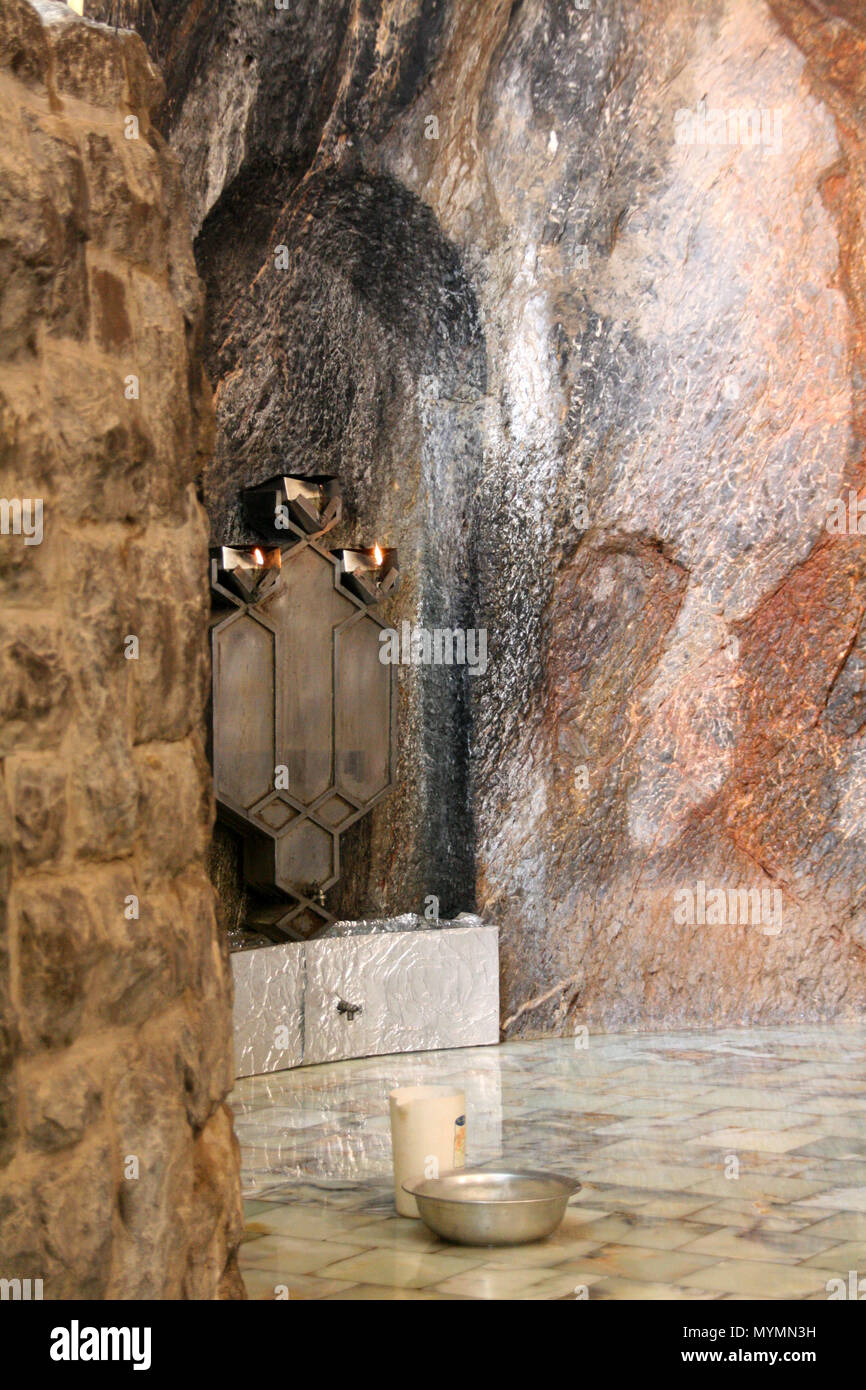 Chak Chak - Pir-e Sabz - Holy shrine of Zoroastrianism, near Ardakan,Yazd Province,Iran Stock Photohttps://www.alamy.com/image-license-details/?v=1https://www.alamy.com/chak-chak-pir-e-sabz-holy-shrine-of-zoroastrianism-near-ardakanyazd-provinceiran-image189154997.html
Chak Chak - Pir-e Sabz - Holy shrine of Zoroastrianism, near Ardakan,Yazd Province,Iran Stock Photohttps://www.alamy.com/image-license-details/?v=1https://www.alamy.com/chak-chak-pir-e-sabz-holy-shrine-of-zoroastrianism-near-ardakanyazd-provinceiran-image189154997.htmlRMMYMN3H–Chak Chak - Pir-e Sabz - Holy shrine of Zoroastrianism, near Ardakan,Yazd Province,Iran
 Delhi, India : A vendor stands at a lime juice stall net to the 16th century Sabz Burj ('Green Dome') mausoleum. An octagonal tomb situated in Mathura Stock Photohttps://www.alamy.com/image-license-details/?v=1https://www.alamy.com/delhi-india-a-vendor-stands-at-a-lime-juice-stall-net-to-the-16th-century-sabz-burj-green-dome-mausoleum-an-octagonal-tomb-situated-in-mathura-image484405863.html
Delhi, India : A vendor stands at a lime juice stall net to the 16th century Sabz Burj ('Green Dome') mausoleum. An octagonal tomb situated in Mathura Stock Photohttps://www.alamy.com/image-license-details/?v=1https://www.alamy.com/delhi-india-a-vendor-stands-at-a-lime-juice-stall-net-to-the-16th-century-sabz-burj-green-dome-mausoleum-an-octagonal-tomb-situated-in-mathura-image484405863.htmlRM2K42GHB–Delhi, India : A vendor stands at a lime juice stall net to the 16th century Sabz Burj ('Green Dome') mausoleum. An octagonal tomb situated in Mathura
 India, Delhi, Humayun's Tomb, Sabz BurjI in grounds of 16th Century mosque, showing blue dome Stock Photohttps://www.alamy.com/image-license-details/?v=1https://www.alamy.com/india-delhi-humayuns-tomb-sabz-burji-in-grounds-of-16th-century-mosque-showing-blue-dome-image216248313.html
India, Delhi, Humayun's Tomb, Sabz BurjI in grounds of 16th Century mosque, showing blue dome Stock Photohttps://www.alamy.com/image-license-details/?v=1https://www.alamy.com/india-delhi-humayuns-tomb-sabz-burji-in-grounds-of-16th-century-mosque-showing-blue-dome-image216248313.htmlRMPFPXX1–India, Delhi, Humayun's Tomb, Sabz BurjI in grounds of 16th Century mosque, showing blue dome
 Wall Painting with Female Figure. Dimensions: H. 9 1/2 in. (24.1 cm) W. 10 1/4 in. (26 cm) mount: H. 11 in. (27.9 cm) W. 10 5/16 (26.2 cm). Date: 9th-10th century. Along with several other intriguing fragments, this piece of wall painting was discovered in the drain in one of the houses of the Sabz Pushan neighborhood. All of the discarded fragments bore images of people or demon-like figures, but in their broken state, it was difficult to determine what kind of scene they originally composed. Wall paintings are fragile and rarely survive, but evidence from sites throughout Iran and Centr Stock Photohttps://www.alamy.com/image-license-details/?v=1https://www.alamy.com/wall-painting-with-female-figure-dimensions-h-9-12-in-241-cm-w-10-14-in-26-cm-mount-h-11-in-279-cm-w-10-516-262-cm-date-9th-10th-century-along-with-several-other-intriguing-fragments-this-piece-of-wall-painting-was-discovered-in-the-drain-in-one-of-the-houses-of-the-sabz-pushan-neighborhood-all-of-the-discarded-fragments-bore-images-of-people-or-demon-like-figures-but-in-their-broken-state-it-was-difficult-to-determine-what-kind-of-scene-they-originally-composed-wall-paintings-are-fragile-and-rarely-survive-but-evidence-from-sites-throughout-iran-and-centr-image212901585.html
Wall Painting with Female Figure. Dimensions: H. 9 1/2 in. (24.1 cm) W. 10 1/4 in. (26 cm) mount: H. 11 in. (27.9 cm) W. 10 5/16 (26.2 cm). Date: 9th-10th century. Along with several other intriguing fragments, this piece of wall painting was discovered in the drain in one of the houses of the Sabz Pushan neighborhood. All of the discarded fragments bore images of people or demon-like figures, but in their broken state, it was difficult to determine what kind of scene they originally composed. Wall paintings are fragile and rarely survive, but evidence from sites throughout Iran and Centr Stock Photohttps://www.alamy.com/image-license-details/?v=1https://www.alamy.com/wall-painting-with-female-figure-dimensions-h-9-12-in-241-cm-w-10-14-in-26-cm-mount-h-11-in-279-cm-w-10-516-262-cm-date-9th-10th-century-along-with-several-other-intriguing-fragments-this-piece-of-wall-painting-was-discovered-in-the-drain-in-one-of-the-houses-of-the-sabz-pushan-neighborhood-all-of-the-discarded-fragments-bore-images-of-people-or-demon-like-figures-but-in-their-broken-state-it-was-difficult-to-determine-what-kind-of-scene-they-originally-composed-wall-paintings-are-fragile-and-rarely-survive-but-evidence-from-sites-throughout-iran-and-centr-image212901585.htmlRMPAAE41–Wall Painting with Female Figure. Dimensions: H. 9 1/2 in. (24.1 cm) W. 10 1/4 in. (26 cm) mount: H. 11 in. (27.9 cm) W. 10 5/16 (26.2 cm). Date: 9th-10th century. Along with several other intriguing fragments, this piece of wall painting was discovered in the drain in one of the houses of the Sabz Pushan neighborhood. All of the discarded fragments bore images of people or demon-like figures, but in their broken state, it was difficult to determine what kind of scene they originally composed. Wall paintings are fragile and rarely survive, but evidence from sites throughout Iran and Centr
 The ancient place in the mountains nearby Ardakan. The sacred place for all Zoroastrians. The place where princess Nikbanu, the daughter of the last p Stock Photohttps://www.alamy.com/image-license-details/?v=1https://www.alamy.com/the-ancient-place-in-the-mountains-nearby-ardakan-the-sacred-place-for-all-zoroastrians-the-place-where-princess-nikbanu-the-daughter-of-the-last-p-image383081112.html
The ancient place in the mountains nearby Ardakan. The sacred place for all Zoroastrians. The place where princess Nikbanu, the daughter of the last p Stock Photohttps://www.alamy.com/image-license-details/?v=1https://www.alamy.com/the-ancient-place-in-the-mountains-nearby-ardakan-the-sacred-place-for-all-zoroastrians-the-place-where-princess-nikbanu-the-daughter-of-the-last-p-image383081112.htmlRM2D76RT8–The ancient place in the mountains nearby Ardakan. The sacred place for all Zoroastrians. The place where princess Nikbanu, the daughter of the last p
 Gates in Shahrisabz Usbekistan Stock Photohttps://www.alamy.com/image-license-details/?v=1https://www.alamy.com/stock-image-gates-in-shahrisabz-usbekistan-169792904.html
Gates in Shahrisabz Usbekistan Stock Photohttps://www.alamy.com/image-license-details/?v=1https://www.alamy.com/stock-image-gates-in-shahrisabz-usbekistan-169792904.htmlRMKT6MG8–Gates in Shahrisabz Usbekistan
 Monument at roadside, Sabz Burj, Delhi, India Stock Photohttps://www.alamy.com/image-license-details/?v=1https://www.alamy.com/stock-photo-monument-at-roadside-sabz-burj-delhi-india-53362559.html
Monument at roadside, Sabz Burj, Delhi, India Stock Photohttps://www.alamy.com/image-license-details/?v=1https://www.alamy.com/stock-photo-monument-at-roadside-sabz-burj-delhi-india-53362559.htmlRFD2PTDK–Monument at roadside, Sabz Burj, Delhi, India
 Stone dragon Stock Photohttps://www.alamy.com/image-license-details/?v=1https://www.alamy.com/stock-photo-stone-dragon-83214615.html
Stone dragon Stock Photohttps://www.alamy.com/image-license-details/?v=1https://www.alamy.com/stock-photo-stone-dragon-83214615.htmlRFERAN2F–Stone dragon
 Sabz Burj, a Persian-influenced dome in Delhi, India has Persian-blue coloured tiles on its outer surface. located close to the Humayun’s Tomb Complex. The tower is referred to as “Neeli Chattri” (Blue umbrella). supposedly built in between 1530-50 A.D. influenced by Central Asian architecture. Stock Photohttps://www.alamy.com/image-license-details/?v=1https://www.alamy.com/stock-image-sabz-burj-a-persian-influenced-dome-in-delhi-india-has-persian-blue-166080314.html
Sabz Burj, a Persian-influenced dome in Delhi, India has Persian-blue coloured tiles on its outer surface. located close to the Humayun’s Tomb Complex. The tower is referred to as “Neeli Chattri” (Blue umbrella). supposedly built in between 1530-50 A.D. influenced by Central Asian architecture. Stock Photohttps://www.alamy.com/image-license-details/?v=1https://www.alamy.com/stock-image-sabz-burj-a-persian-influenced-dome-in-delhi-india-has-persian-blue-166080314.htmlRMKJ5H3P–Sabz Burj, a Persian-influenced dome in Delhi, India has Persian-blue coloured tiles on its outer surface. located close to the Humayun’s Tomb Complex. The tower is referred to as “Neeli Chattri” (Blue umbrella). supposedly built in between 1530-50 A.D. influenced by Central Asian architecture.
 Egyptian EgyptVessel in form of female figure woman Iron Age III 7th–6th century B.C. Iran Luristan Chekka Sabz Ceramic 60 cm C Stock Photohttps://www.alamy.com/image-license-details/?v=1https://www.alamy.com/stock-photo-egyptian-egyptvessel-in-form-of-female-figure-woman-iron-age-iii-7th6th-51072856.html
Egyptian EgyptVessel in form of female figure woman Iron Age III 7th–6th century B.C. Iran Luristan Chekka Sabz Ceramic 60 cm C Stock Photohttps://www.alamy.com/image-license-details/?v=1https://www.alamy.com/stock-photo-egyptian-egyptvessel-in-form-of-female-figure-woman-iron-age-iii-7th6th-51072856.htmlRMCY2FXG–Egyptian EgyptVessel in form of female figure woman Iron Age III 7th–6th century B.C. Iran Luristan Chekka Sabz Ceramic 60 cm C
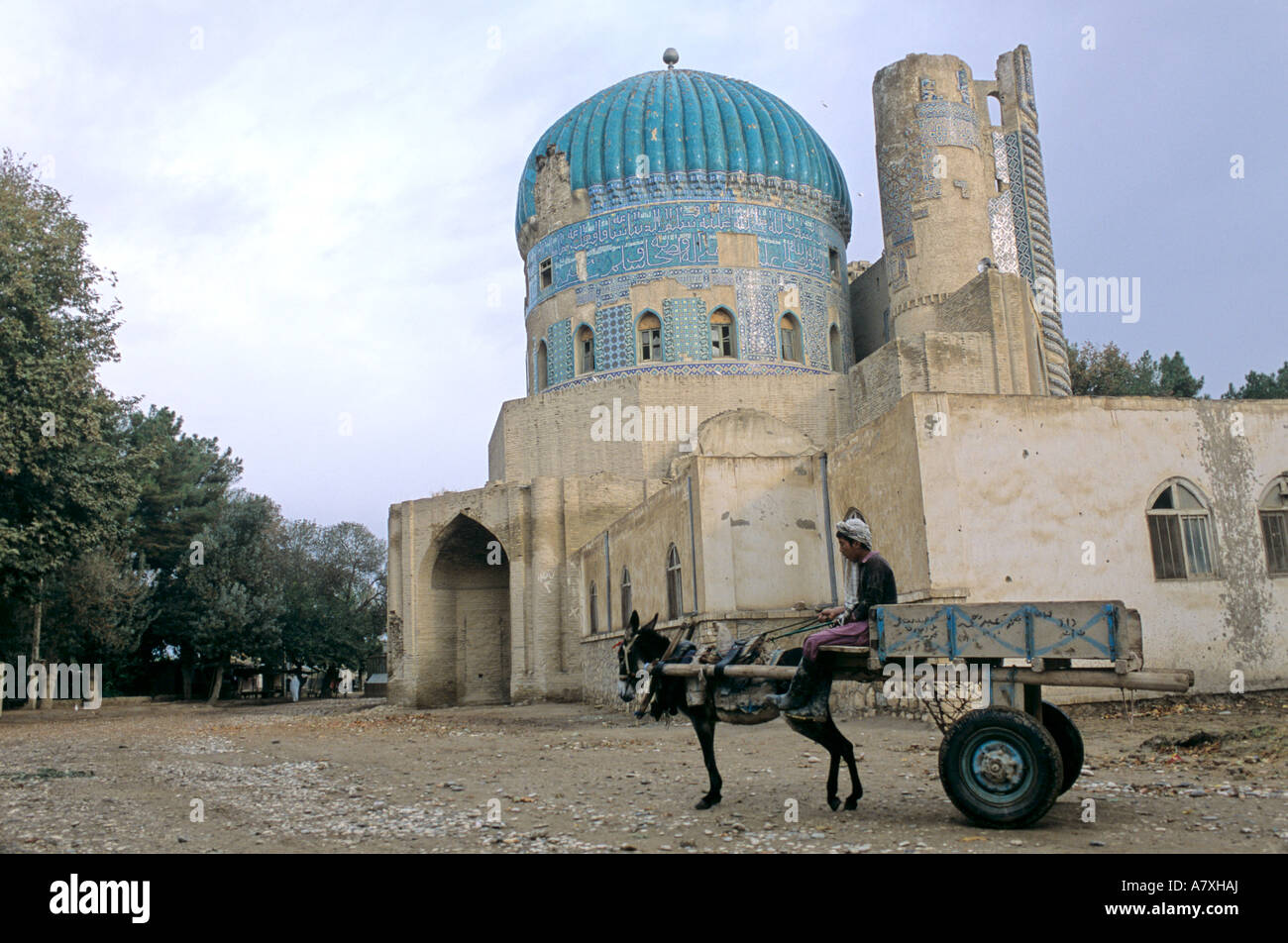 Afghanistan, Balkh, Mazar Al Sharif, Masjid Sabz, the Green Mosque Stock Photohttps://www.alamy.com/image-license-details/?v=1https://www.alamy.com/stock-photo-afghanistan-balkh-mazar-al-sharif-masjid-sabz-the-green-mosque-11928905.html
Afghanistan, Balkh, Mazar Al Sharif, Masjid Sabz, the Green Mosque Stock Photohttps://www.alamy.com/image-license-details/?v=1https://www.alamy.com/stock-photo-afghanistan-balkh-mazar-al-sharif-masjid-sabz-the-green-mosque-11928905.htmlRMA7XHAJ–Afghanistan, Balkh, Mazar Al Sharif, Masjid Sabz, the Green Mosque
 Sabz Burj hexagonal tomb Delhi India Stock Photohttps://www.alamy.com/image-license-details/?v=1https://www.alamy.com/stock-photo-sabz-burj-hexagonal-tomb-delhi-india-39937174.html
Sabz Burj hexagonal tomb Delhi India Stock Photohttps://www.alamy.com/image-license-details/?v=1https://www.alamy.com/stock-photo-sabz-burj-hexagonal-tomb-delhi-india-39937174.htmlRMC8Y87J–Sabz Burj hexagonal tomb Delhi India
 Bridge in Deh Sabz. Stock Photohttps://www.alamy.com/image-license-details/?v=1https://www.alamy.com/bridge-in-deh-sabz-image220630866.html
Bridge in Deh Sabz. Stock Photohttps://www.alamy.com/image-license-details/?v=1https://www.alamy.com/bridge-in-deh-sabz-image220630866.htmlRMPPXGWP–Bridge in Deh Sabz.
 Aq Saray, Timur's palace, Shahr-i Sabz, Uzbekistan Stock Photohttps://www.alamy.com/image-license-details/?v=1https://www.alamy.com/stock-photo-aq-saray-timurs-palace-shahr-i-sabz-uzbekistan-50752774.html
Aq Saray, Timur's palace, Shahr-i Sabz, Uzbekistan Stock Photohttps://www.alamy.com/image-license-details/?v=1https://www.alamy.com/stock-photo-aq-saray-timurs-palace-shahr-i-sabz-uzbekistan-50752774.htmlRMCXFYK2–Aq Saray, Timur's palace, Shahr-i Sabz, Uzbekistan
 The grave towers Gonbad-e Sabz in the city of Qom, taken on 10.11.2017. | usage worldwide Stock Photohttps://www.alamy.com/image-license-details/?v=1https://www.alamy.com/the-grave-towers-gonbad-e-sabz-in-the-city-of-qom-taken-on-10112017-usage-worldwide-image329744924.html
The grave towers Gonbad-e Sabz in the city of Qom, taken on 10.11.2017. | usage worldwide Stock Photohttps://www.alamy.com/image-license-details/?v=1https://www.alamy.com/the-grave-towers-gonbad-e-sabz-in-the-city-of-qom-taken-on-10112017-usage-worldwide-image329744924.htmlRM2A4D50C–The grave towers Gonbad-e Sabz in the city of Qom, taken on 10.11.2017. | usage worldwide
 Kabul, Afghanistan. 28th Sep, 2024. Children work at a brick kiln on the outskirts of Deh Sabz district, Kabul, Afghanistan, on Sept. 28, 2024. TO GO WITH 'Feature: Afghan children work in brick kilns to support families' Credit: Saifurahman Safi/Xinhua/Alamy Live News Stock Photohttps://www.alamy.com/image-license-details/?v=1https://www.alamy.com/kabul-afghanistan-28th-sep-2024-children-work-at-a-brick-kiln-on-the-outskirts-of-deh-sabz-district-kabul-afghanistan-on-sept-28-2024-to-go-with-feature-afghan-children-work-in-brick-kilns-to-support-families-credit-saifurahman-safixinhuaalamy-live-news-image624607863.html
Kabul, Afghanistan. 28th Sep, 2024. Children work at a brick kiln on the outskirts of Deh Sabz district, Kabul, Afghanistan, on Sept. 28, 2024. TO GO WITH 'Feature: Afghan children work in brick kilns to support families' Credit: Saifurahman Safi/Xinhua/Alamy Live News Stock Photohttps://www.alamy.com/image-license-details/?v=1https://www.alamy.com/kabul-afghanistan-28th-sep-2024-children-work-at-a-brick-kiln-on-the-outskirts-of-deh-sabz-district-kabul-afghanistan-on-sept-28-2024-to-go-with-feature-afghan-children-work-in-brick-kilns-to-support-families-credit-saifurahman-safixinhuaalamy-live-news-image624607863.htmlRM2Y859KK–Kabul, Afghanistan. 28th Sep, 2024. Children work at a brick kiln on the outskirts of Deh Sabz district, Kabul, Afghanistan, on Sept. 28, 2024. TO GO WITH 'Feature: Afghan children work in brick kilns to support families' Credit: Saifurahman Safi/Xinhua/Alamy Live News
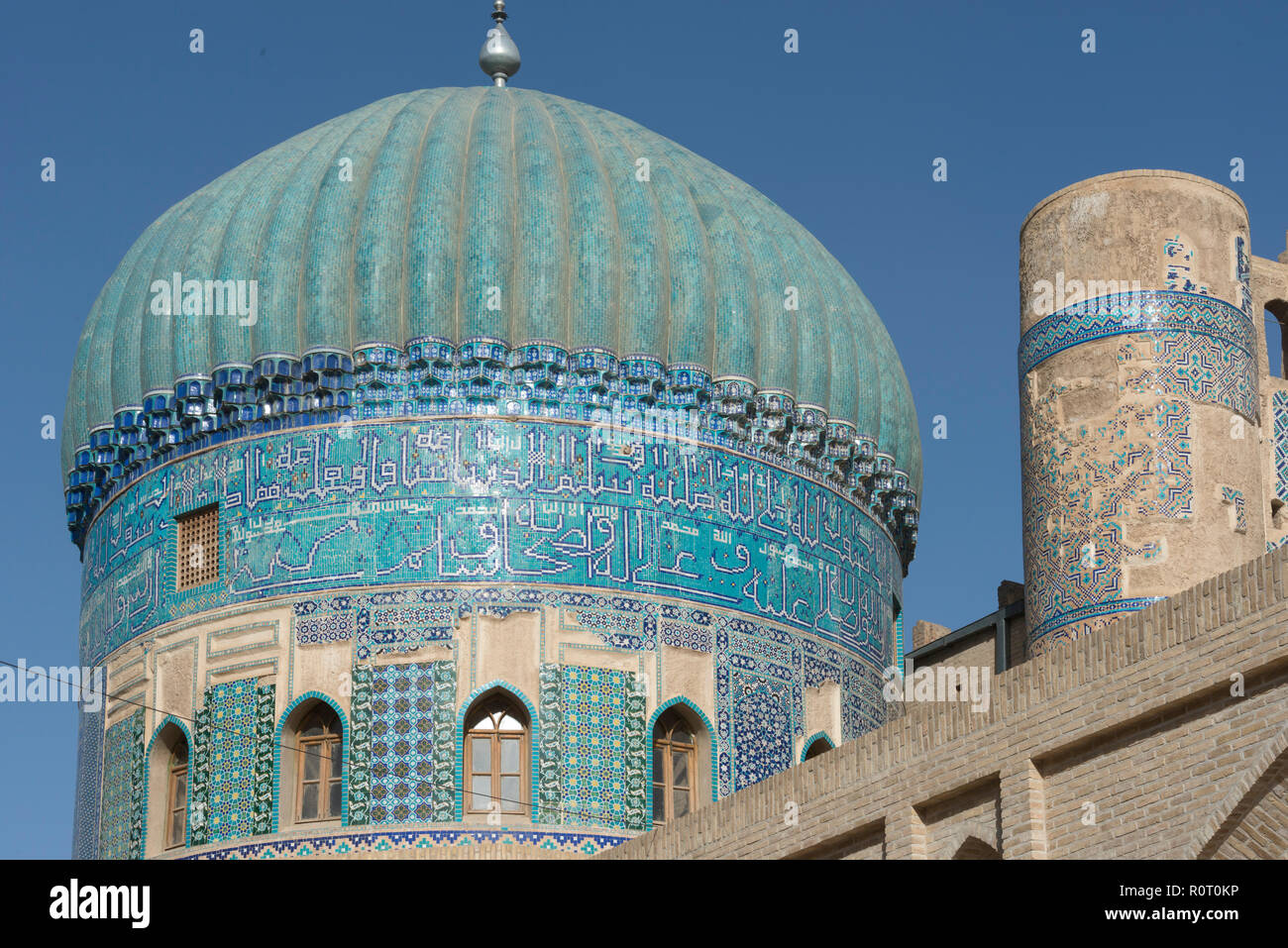 The Green Mosque (Masjid Sabz), Balkh city, Balkh Province, North Afghanistan Stock Photohttps://www.alamy.com/image-license-details/?v=1https://www.alamy.com/the-green-mosque-masjid-sabz-balkh-city-balkh-province-north-afghanistan-image224262186.html
The Green Mosque (Masjid Sabz), Balkh city, Balkh Province, North Afghanistan Stock Photohttps://www.alamy.com/image-license-details/?v=1https://www.alamy.com/the-green-mosque-masjid-sabz-balkh-city-balkh-province-north-afghanistan-image224262186.htmlRMR0T0KP–The Green Mosque (Masjid Sabz), Balkh city, Balkh Province, North Afghanistan
 Stonemason chiselling a grave stone, Shakhrisabz, Shar-e Sabz or Shahrisabz, Uzbekistan Stock Photohttps://www.alamy.com/image-license-details/?v=1https://www.alamy.com/stock-photo-stonemason-chiselling-a-grave-stone-shakhrisabz-shar-e-sabz-or-shahrisabz-71793599.html
Stonemason chiselling a grave stone, Shakhrisabz, Shar-e Sabz or Shahrisabz, Uzbekistan Stock Photohttps://www.alamy.com/image-license-details/?v=1https://www.alamy.com/stock-photo-stonemason-chiselling-a-grave-stone-shakhrisabz-shar-e-sabz-or-shahrisabz-71793599.htmlRME4PDD3–Stonemason chiselling a grave stone, Shakhrisabz, Shar-e Sabz or Shahrisabz, Uzbekistan
 Exterior of the Green Mosque (Masjid Sabz) in Balkh, northern Afghanistan - the sky is dusty from a summer sandstorm. Stock Photohttps://www.alamy.com/image-license-details/?v=1https://www.alamy.com/exterior-of-the-green-mosque-masjid-sabz-in-balkh-northern-afghanistan-the-sky-is-dusty-from-a-summer-sandstorm-image614732164.html
Exterior of the Green Mosque (Masjid Sabz) in Balkh, northern Afghanistan - the sky is dusty from a summer sandstorm. Stock Photohttps://www.alamy.com/image-license-details/?v=1https://www.alamy.com/exterior-of-the-green-mosque-masjid-sabz-in-balkh-northern-afghanistan-the-sky-is-dusty-from-a-summer-sandstorm-image614732164.htmlRF2XM3D44–Exterior of the Green Mosque (Masjid Sabz) in Balkh, northern Afghanistan - the sky is dusty from a summer sandstorm.
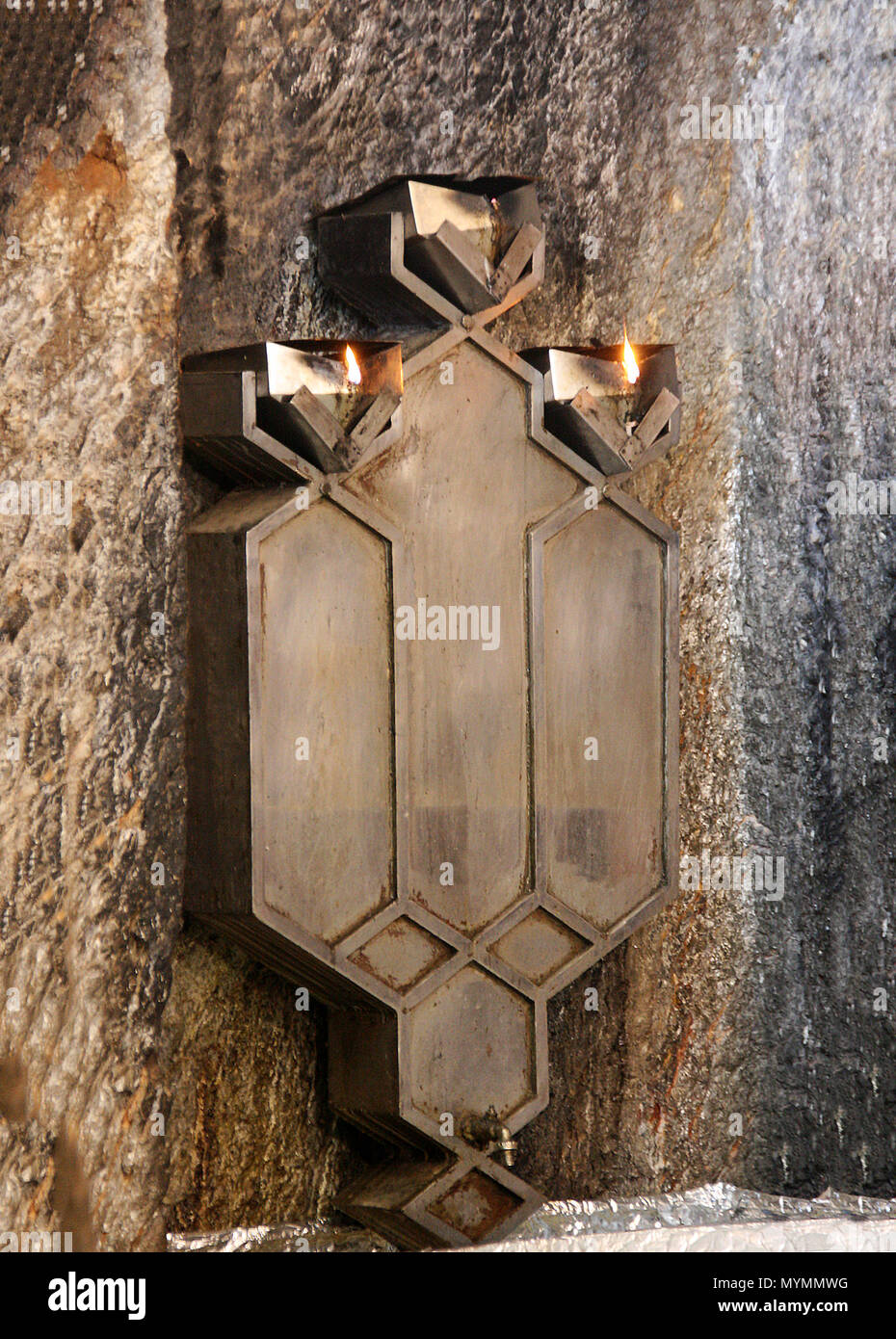 Chak Chak - Pir-e Sabz - Holy shrine of Zoroastrianism, near Ardakan,Yazd Province,Iran Stock Photohttps://www.alamy.com/image-license-details/?v=1https://www.alamy.com/chak-chak-pir-e-sabz-holy-shrine-of-zoroastrianism-near-ardakanyazd-provinceiran-image189154828.html
Chak Chak - Pir-e Sabz - Holy shrine of Zoroastrianism, near Ardakan,Yazd Province,Iran Stock Photohttps://www.alamy.com/image-license-details/?v=1https://www.alamy.com/chak-chak-pir-e-sabz-holy-shrine-of-zoroastrianism-near-ardakanyazd-provinceiran-image189154828.htmlRMMYMMWG–Chak Chak - Pir-e Sabz - Holy shrine of Zoroastrianism, near Ardakan,Yazd Province,Iran
 Uzbekistan Shahrisabz Emir Timur Statue Shahr-e Sabz Central Asia blue sky Monument Tamerlan two women Stock Photohttps://www.alamy.com/image-license-details/?v=1https://www.alamy.com/stock-photo-uzbekistan-shahrisabz-emir-timur-statue-shahr-e-sabz-central-asia-33047568.html
Uzbekistan Shahrisabz Emir Timur Statue Shahr-e Sabz Central Asia blue sky Monument Tamerlan two women Stock Photohttps://www.alamy.com/image-license-details/?v=1https://www.alamy.com/stock-photo-uzbekistan-shahrisabz-emir-timur-statue-shahr-e-sabz-central-asia-33047568.htmlRMBWNCE8–Uzbekistan Shahrisabz Emir Timur Statue Shahr-e Sabz Central Asia blue sky Monument Tamerlan two women
 A Youth sells soup to earn his livelihood for support his family during winter season at Sabz Road in Quetta on Friday, February 15, 2013. Stock Photohttps://www.alamy.com/image-license-details/?v=1https://www.alamy.com/stock-photo-a-youth-sells-soup-to-earn-his-livelihood-for-support-his-family-during-53739525.html
A Youth sells soup to earn his livelihood for support his family during winter season at Sabz Road in Quetta on Friday, February 15, 2013. Stock Photohttps://www.alamy.com/image-license-details/?v=1https://www.alamy.com/stock-photo-a-youth-sells-soup-to-earn-his-livelihood-for-support-his-family-during-53739525.htmlRMD3C18N–A Youth sells soup to earn his livelihood for support his family during winter season at Sabz Road in Quetta on Friday, February 15, 2013.
 Dado Panel. Dimensions: H. 68 5/8 in. (174.3 cm) W. 92 3/4 in. (235.6 cm) Frame D. 2 1/2 in. (6.4 cm) Frame D. with tabs: 2 3/4 in. (7 cm) Wt. 560 lbs. (254 kg). Date: 10th century. The inscription on the upper left side of this stucco panel reads, 'In the name of God, the Merciful, the Compassionate.' It comes from the courtyard of one of the houses in the Sabz Pushan neighborhood of Nishapur. The presence of this inscription suggests the residence may have functioned as a small neighborhood mosque or perhaps even a madrasa (religious college). Religious texts, however, were also fou Stock Photohttps://www.alamy.com/image-license-details/?v=1https://www.alamy.com/dado-panel-dimensions-h-68-58-in-1743-cm-w-92-34-in-2356-cm-frame-d-2-12-in-64-cm-frame-d-with-tabs-2-34-in-7-cm-wt-560-lbs-254-kg-date-10th-century-the-inscription-on-the-upper-left-side-of-this-stucco-panel-reads-in-the-name-of-god-the-merciful-the-compassionate-it-comes-from-the-courtyard-of-one-of-the-houses-in-the-sabz-pushan-neighborhood-of-nishapur-the-presence-of-this-inscription-suggests-the-residence-may-have-functioned-as-a-small-neighborhood-mosque-or-perhaps-even-a-madrasa-religious-college-religious-texts-however-were-also-fou-image212880522.html
Dado Panel. Dimensions: H. 68 5/8 in. (174.3 cm) W. 92 3/4 in. (235.6 cm) Frame D. 2 1/2 in. (6.4 cm) Frame D. with tabs: 2 3/4 in. (7 cm) Wt. 560 lbs. (254 kg). Date: 10th century. The inscription on the upper left side of this stucco panel reads, 'In the name of God, the Merciful, the Compassionate.' It comes from the courtyard of one of the houses in the Sabz Pushan neighborhood of Nishapur. The presence of this inscription suggests the residence may have functioned as a small neighborhood mosque or perhaps even a madrasa (religious college). Religious texts, however, were also fou Stock Photohttps://www.alamy.com/image-license-details/?v=1https://www.alamy.com/dado-panel-dimensions-h-68-58-in-1743-cm-w-92-34-in-2356-cm-frame-d-2-12-in-64-cm-frame-d-with-tabs-2-34-in-7-cm-wt-560-lbs-254-kg-date-10th-century-the-inscription-on-the-upper-left-side-of-this-stucco-panel-reads-in-the-name-of-god-the-merciful-the-compassionate-it-comes-from-the-courtyard-of-one-of-the-houses-in-the-sabz-pushan-neighborhood-of-nishapur-the-presence-of-this-inscription-suggests-the-residence-may-have-functioned-as-a-small-neighborhood-mosque-or-perhaps-even-a-madrasa-religious-college-religious-texts-however-were-also-fou-image212880522.htmlRMPA9F7P–Dado Panel. Dimensions: H. 68 5/8 in. (174.3 cm) W. 92 3/4 in. (235.6 cm) Frame D. 2 1/2 in. (6.4 cm) Frame D. with tabs: 2 3/4 in. (7 cm) Wt. 560 lbs. (254 kg). Date: 10th century. The inscription on the upper left side of this stucco panel reads, 'In the name of God, the Merciful, the Compassionate.' It comes from the courtyard of one of the houses in the Sabz Pushan neighborhood of Nishapur. The presence of this inscription suggests the residence may have functioned as a small neighborhood mosque or perhaps even a madrasa (religious college). Religious texts, however, were also fou
 The ancient place in the mountains nearby Ardakan. The sacred place for all Zoroastrians. The place where princess Nikbanu, the daughter of the last p Stock Photohttps://www.alamy.com/image-license-details/?v=1https://www.alamy.com/the-ancient-place-in-the-mountains-nearby-ardakan-the-sacred-place-for-all-zoroastrians-the-place-where-princess-nikbanu-the-daughter-of-the-last-p-image383081096.html
The ancient place in the mountains nearby Ardakan. The sacred place for all Zoroastrians. The place where princess Nikbanu, the daughter of the last p Stock Photohttps://www.alamy.com/image-license-details/?v=1https://www.alamy.com/the-ancient-place-in-the-mountains-nearby-ardakan-the-sacred-place-for-all-zoroastrians-the-place-where-princess-nikbanu-the-daughter-of-the-last-p-image383081096.htmlRM2D76RRM–The ancient place in the mountains nearby Ardakan. The sacred place for all Zoroastrians. The place where princess Nikbanu, the daughter of the last p
 Art inspired by Dado Panel, 10th century, Excavated in Iran, Nishapur, Stucco; carved, H. 9 1/2 in. (24.1 cm), Stucco, This small panel was excavated at Nishapur from a mound known as Sabz Pushan (the Green Covered). Excavations at Sabz Pushan revealed part of a residential, Classic works modernized by Artotop with a splash of modernity. Shapes, color and value, eye-catching visual impact on art. Emotions through freedom of artworks in a contemporary way. A timeless message pursuing a wildly creative new direction. Artists turning to the digital medium and creating the Artotop NFT Stock Photohttps://www.alamy.com/image-license-details/?v=1https://www.alamy.com/art-inspired-by-dado-panel-10th-century-excavated-in-iran-nishapur-stucco-carved-h-9-12-in-241-cm-stucco-this-small-panel-was-excavated-at-nishapur-from-a-mound-known-as-sabz-pushan-the-green-covered-excavations-at-sabz-pushan-revealed-part-of-a-residential-classic-works-modernized-by-artotop-with-a-splash-of-modernity-shapes-color-and-value-eye-catching-visual-impact-on-art-emotions-through-freedom-of-artworks-in-a-contemporary-way-a-timeless-message-pursuing-a-wildly-creative-new-direction-artists-turning-to-the-digital-medium-and-creating-the-artotop-nft-image462820904.html
Art inspired by Dado Panel, 10th century, Excavated in Iran, Nishapur, Stucco; carved, H. 9 1/2 in. (24.1 cm), Stucco, This small panel was excavated at Nishapur from a mound known as Sabz Pushan (the Green Covered). Excavations at Sabz Pushan revealed part of a residential, Classic works modernized by Artotop with a splash of modernity. Shapes, color and value, eye-catching visual impact on art. Emotions through freedom of artworks in a contemporary way. A timeless message pursuing a wildly creative new direction. Artists turning to the digital medium and creating the Artotop NFT Stock Photohttps://www.alamy.com/image-license-details/?v=1https://www.alamy.com/art-inspired-by-dado-panel-10th-century-excavated-in-iran-nishapur-stucco-carved-h-9-12-in-241-cm-stucco-this-small-panel-was-excavated-at-nishapur-from-a-mound-known-as-sabz-pushan-the-green-covered-excavations-at-sabz-pushan-revealed-part-of-a-residential-classic-works-modernized-by-artotop-with-a-splash-of-modernity-shapes-color-and-value-eye-catching-visual-impact-on-art-emotions-through-freedom-of-artworks-in-a-contemporary-way-a-timeless-message-pursuing-a-wildly-creative-new-direction-artists-turning-to-the-digital-medium-and-creating-the-artotop-nft-image462820904.htmlRF2HTY8P0–Art inspired by Dado Panel, 10th century, Excavated in Iran, Nishapur, Stucco; carved, H. 9 1/2 in. (24.1 cm), Stucco, This small panel was excavated at Nishapur from a mound known as Sabz Pushan (the Green Covered). Excavations at Sabz Pushan revealed part of a residential, Classic works modernized by Artotop with a splash of modernity. Shapes, color and value, eye-catching visual impact on art. Emotions through freedom of artworks in a contemporary way. A timeless message pursuing a wildly creative new direction. Artists turning to the digital medium and creating the Artotop NFT
 The ancient place in the mountains nearby Ardakan. The sacred place for all Zoroastrians. The place where princess Nikbanu, the daughter of the last p Stock Photohttps://www.alamy.com/image-license-details/?v=1https://www.alamy.com/stock-photo-the-ancient-place-in-the-mountains-nearby-ardakan-the-sacred-place-176944629.html
The ancient place in the mountains nearby Ardakan. The sacred place for all Zoroastrians. The place where princess Nikbanu, the daughter of the last p Stock Photohttps://www.alamy.com/image-license-details/?v=1https://www.alamy.com/stock-photo-the-ancient-place-in-the-mountains-nearby-ardakan-the-sacred-place-176944629.htmlRMM7TEK1–The ancient place in the mountains nearby Ardakan. The sacred place for all Zoroastrians. The place where princess Nikbanu, the daughter of the last p
 Stone dragon face Stock Photohttps://www.alamy.com/image-license-details/?v=1https://www.alamy.com/stock-photo-stone-dragon-face-84507208.html
Stone dragon face Stock Photohttps://www.alamy.com/image-license-details/?v=1https://www.alamy.com/stock-photo-stone-dragon-face-84507208.htmlRFEWDHPG–Stone dragon face
 Sabz Burj, a Persian-influenced dome in Delhi, India has Persian-blue coloured tiles on its outer surface. located close to the Humayun’s Tomb Complex. The tower is referred to as “Neeli Chattri” (Blue umbrella). supposedly built in between 1530-50 A.D. influenced by Central Asian architecture. Stock Photohttps://www.alamy.com/image-license-details/?v=1https://www.alamy.com/stock-image-sabz-burj-a-persian-influenced-dome-in-delhi-india-has-persian-blue-166080315.html
Sabz Burj, a Persian-influenced dome in Delhi, India has Persian-blue coloured tiles on its outer surface. located close to the Humayun’s Tomb Complex. The tower is referred to as “Neeli Chattri” (Blue umbrella). supposedly built in between 1530-50 A.D. influenced by Central Asian architecture. Stock Photohttps://www.alamy.com/image-license-details/?v=1https://www.alamy.com/stock-image-sabz-burj-a-persian-influenced-dome-in-delhi-india-has-persian-blue-166080315.htmlRMKJ5H3R–Sabz Burj, a Persian-influenced dome in Delhi, India has Persian-blue coloured tiles on its outer surface. located close to the Humayun’s Tomb Complex. The tower is referred to as “Neeli Chattri” (Blue umbrella). supposedly built in between 1530-50 A.D. influenced by Central Asian architecture.
 Vessel in form of female figure woman Iron Age III 7th–6th century B.C. Iran Luristan Chekka Sabz Ceramic 60 cm Ceramic Stock Photohttps://www.alamy.com/image-license-details/?v=1https://www.alamy.com/stock-photo-vessel-in-form-of-female-figure-woman-iron-age-iii-7th6th-century-51072857.html
Vessel in form of female figure woman Iron Age III 7th–6th century B.C. Iran Luristan Chekka Sabz Ceramic 60 cm Ceramic Stock Photohttps://www.alamy.com/image-license-details/?v=1https://www.alamy.com/stock-photo-vessel-in-form-of-female-figure-woman-iron-age-iii-7th6th-century-51072857.htmlRMCY2FXH–Vessel in form of female figure woman Iron Age III 7th–6th century B.C. Iran Luristan Chekka Sabz Ceramic 60 cm Ceramic
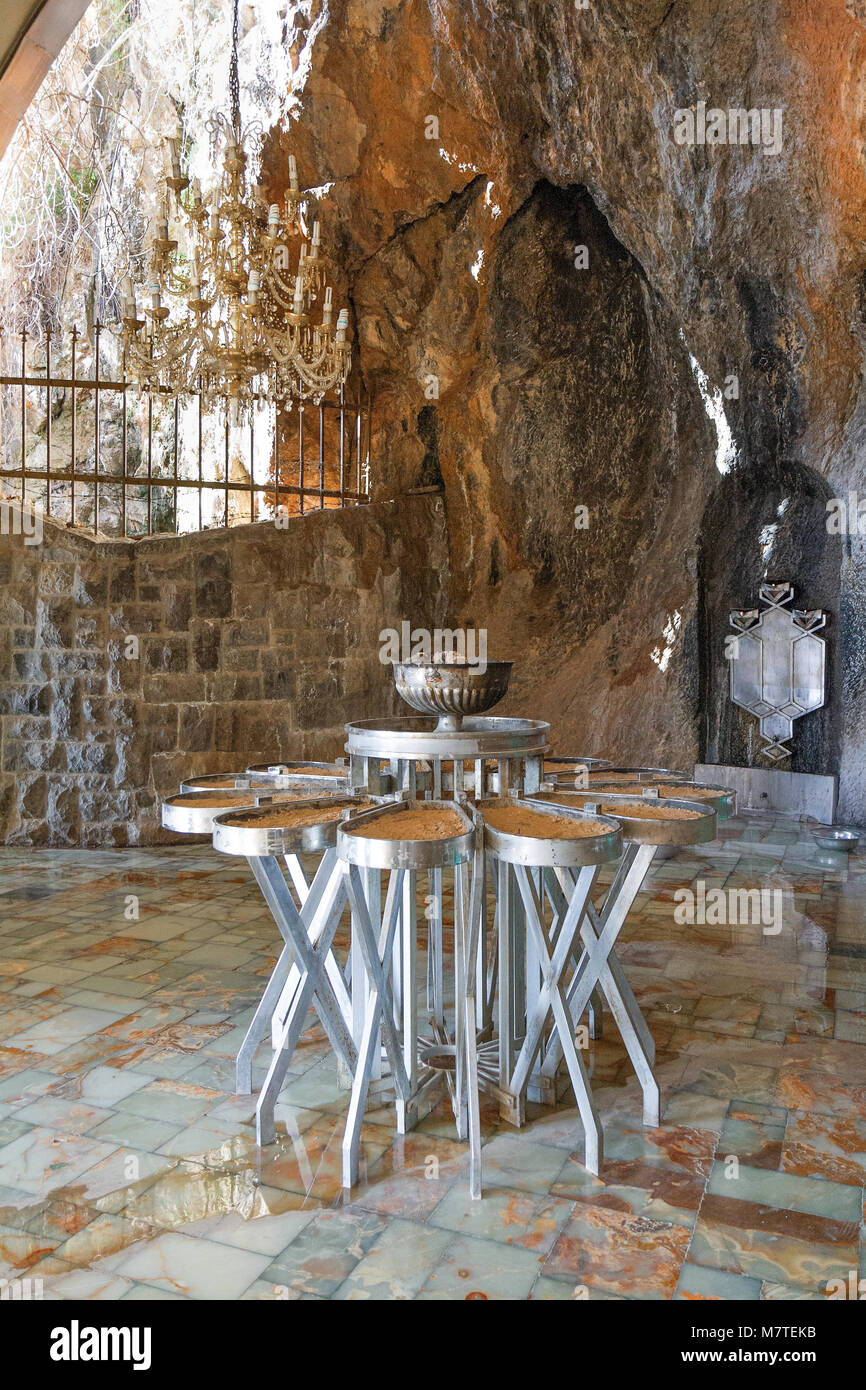 The ancient place in the mountains nearby Ardakan. The sacred place for all Zoroastrians. The place where princess Nikbanu, the daughter of the last p Stock Photohttps://www.alamy.com/image-license-details/?v=1https://www.alamy.com/stock-photo-the-ancient-place-in-the-mountains-nearby-ardakan-the-sacred-place-176944639.html
The ancient place in the mountains nearby Ardakan. The sacred place for all Zoroastrians. The place where princess Nikbanu, the daughter of the last p Stock Photohttps://www.alamy.com/image-license-details/?v=1https://www.alamy.com/stock-photo-the-ancient-place-in-the-mountains-nearby-ardakan-the-sacred-place-176944639.htmlRMM7TEKB–The ancient place in the mountains nearby Ardakan. The sacred place for all Zoroastrians. The place where princess Nikbanu, the daughter of the last p
 Dado Panel, Iran, 10th century. Sabz Pushan Stock Photohttps://www.alamy.com/image-license-details/?v=1https://www.alamy.com/dado-panel-iran-10th-century-sabz-pushan-image415179944.html
Dado Panel, Iran, 10th century. Sabz Pushan Stock Photohttps://www.alamy.com/image-license-details/?v=1https://www.alamy.com/dado-panel-iran-10th-century-sabz-pushan-image415179944.htmlRM2F3D274–Dado Panel, Iran, 10th century. Sabz Pushan
 The ancient place in the mountains nearby Ardakan. The sacred place for all Zoroastrians. The place where princess Nikbanu, the daughter of the last p Stock Photohttps://www.alamy.com/image-license-details/?v=1https://www.alamy.com/stock-photo-the-ancient-place-in-the-mountains-nearby-ardakan-the-sacred-place-176944632.html
The ancient place in the mountains nearby Ardakan. The sacred place for all Zoroastrians. The place where princess Nikbanu, the daughter of the last p Stock Photohttps://www.alamy.com/image-license-details/?v=1https://www.alamy.com/stock-photo-the-ancient-place-in-the-mountains-nearby-ardakan-the-sacred-place-176944632.htmlRMM7TEK4–The ancient place in the mountains nearby Ardakan. The sacred place for all Zoroastrians. The place where princess Nikbanu, the daughter of the last p
 Aq Saray, Timur's palace, Shahr-i Sabz, Uzbekistan Stock Photohttps://www.alamy.com/image-license-details/?v=1https://www.alamy.com/stock-photo-aq-saray-timurs-palace-shahr-i-sabz-uzbekistan-50752594.html
Aq Saray, Timur's palace, Shahr-i Sabz, Uzbekistan Stock Photohttps://www.alamy.com/image-license-details/?v=1https://www.alamy.com/stock-photo-aq-saray-timurs-palace-shahr-i-sabz-uzbekistan-50752594.htmlRMCXFYCJ–Aq Saray, Timur's palace, Shahr-i Sabz, Uzbekistan
 The grave towers Gonbad-e Sabz in the city of Qom, taken on 10.11.2017. | usage worldwide Stock Photohttps://www.alamy.com/image-license-details/?v=1https://www.alamy.com/the-grave-towers-gonbad-e-sabz-in-the-city-of-qom-taken-on-10112017-usage-worldwide-image329744934.html
The grave towers Gonbad-e Sabz in the city of Qom, taken on 10.11.2017. | usage worldwide Stock Photohttps://www.alamy.com/image-license-details/?v=1https://www.alamy.com/the-grave-towers-gonbad-e-sabz-in-the-city-of-qom-taken-on-10112017-usage-worldwide-image329744934.htmlRM2A4D50P–The grave towers Gonbad-e Sabz in the city of Qom, taken on 10.11.2017. | usage worldwide
 Kabul, Afghanistan. 28th Sep, 2024. Children work at a brick kiln on the outskirts of Deh Sabz district, Kabul, Afghanistan, on Sept. 28, 2024. TO GO WITH 'Feature: Afghan children work in brick kilns to support families' Credit: Saifurahman Safi/Xinhua/Alamy Live News Stock Photohttps://www.alamy.com/image-license-details/?v=1https://www.alamy.com/kabul-afghanistan-28th-sep-2024-children-work-at-a-brick-kiln-on-the-outskirts-of-deh-sabz-district-kabul-afghanistan-on-sept-28-2024-to-go-with-feature-afghan-children-work-in-brick-kilns-to-support-families-credit-saifurahman-safixinhuaalamy-live-news-image624607868.html
Kabul, Afghanistan. 28th Sep, 2024. Children work at a brick kiln on the outskirts of Deh Sabz district, Kabul, Afghanistan, on Sept. 28, 2024. TO GO WITH 'Feature: Afghan children work in brick kilns to support families' Credit: Saifurahman Safi/Xinhua/Alamy Live News Stock Photohttps://www.alamy.com/image-license-details/?v=1https://www.alamy.com/kabul-afghanistan-28th-sep-2024-children-work-at-a-brick-kiln-on-the-outskirts-of-deh-sabz-district-kabul-afghanistan-on-sept-28-2024-to-go-with-feature-afghan-children-work-in-brick-kilns-to-support-families-credit-saifurahman-safixinhuaalamy-live-news-image624607868.htmlRM2Y859KT–Kabul, Afghanistan. 28th Sep, 2024. Children work at a brick kiln on the outskirts of Deh Sabz district, Kabul, Afghanistan, on Sept. 28, 2024. TO GO WITH 'Feature: Afghan children work in brick kilns to support families' Credit: Saifurahman Safi/Xinhua/Alamy Live News
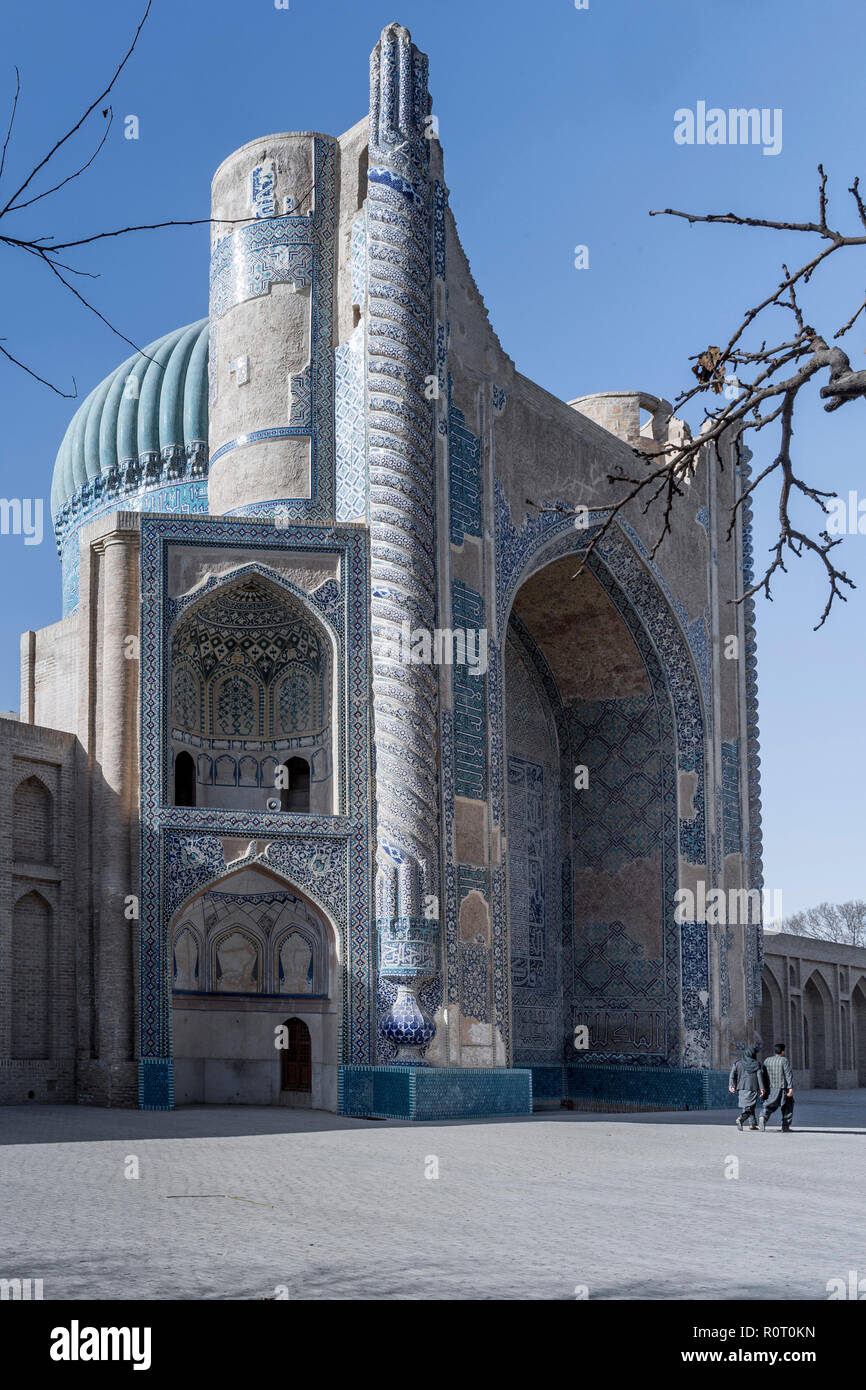 The Green Mosque (Masjid Sabz), Balkh city, Balkh Province, North Afghanistan Stock Photohttps://www.alamy.com/image-license-details/?v=1https://www.alamy.com/the-green-mosque-masjid-sabz-balkh-city-balkh-province-north-afghanistan-image224262185.html
The Green Mosque (Masjid Sabz), Balkh city, Balkh Province, North Afghanistan Stock Photohttps://www.alamy.com/image-license-details/?v=1https://www.alamy.com/the-green-mosque-masjid-sabz-balkh-city-balkh-province-north-afghanistan-image224262185.htmlRMR0T0KN–The Green Mosque (Masjid Sabz), Balkh city, Balkh Province, North Afghanistan
 Man working on a sewing machine by the roadside, Shakhrisabz, Shar-e Sabz or Shahrisabz, Uzbekistan Stock Photohttps://www.alamy.com/image-license-details/?v=1https://www.alamy.com/stock-photo-man-working-on-a-sewing-machine-by-the-roadside-shakhrisabz-shar-e-71793598.html
Man working on a sewing machine by the roadside, Shakhrisabz, Shar-e Sabz or Shahrisabz, Uzbekistan Stock Photohttps://www.alamy.com/image-license-details/?v=1https://www.alamy.com/stock-photo-man-working-on-a-sewing-machine-by-the-roadside-shakhrisabz-shar-e-71793598.htmlRME4PDD2–Man working on a sewing machine by the roadside, Shakhrisabz, Shar-e Sabz or Shahrisabz, Uzbekistan
 Sabz Burj on Mathura road traffic circle New Delhi, India (Photo Copyright © Saji Maramon) Stock Photohttps://www.alamy.com/image-license-details/?v=1https://www.alamy.com/sabz-burj-on-mathura-road-traffic-circle-new-delhi-india-photo-copyright-saji-maramon-image360039161.html
Sabz Burj on Mathura road traffic circle New Delhi, India (Photo Copyright © Saji Maramon) Stock Photohttps://www.alamy.com/image-license-details/?v=1https://www.alamy.com/sabz-burj-on-mathura-road-traffic-circle-new-delhi-india-photo-copyright-saji-maramon-image360039161.htmlRM2BWN5HD–Sabz Burj on Mathura road traffic circle New Delhi, India (Photo Copyright © Saji Maramon)
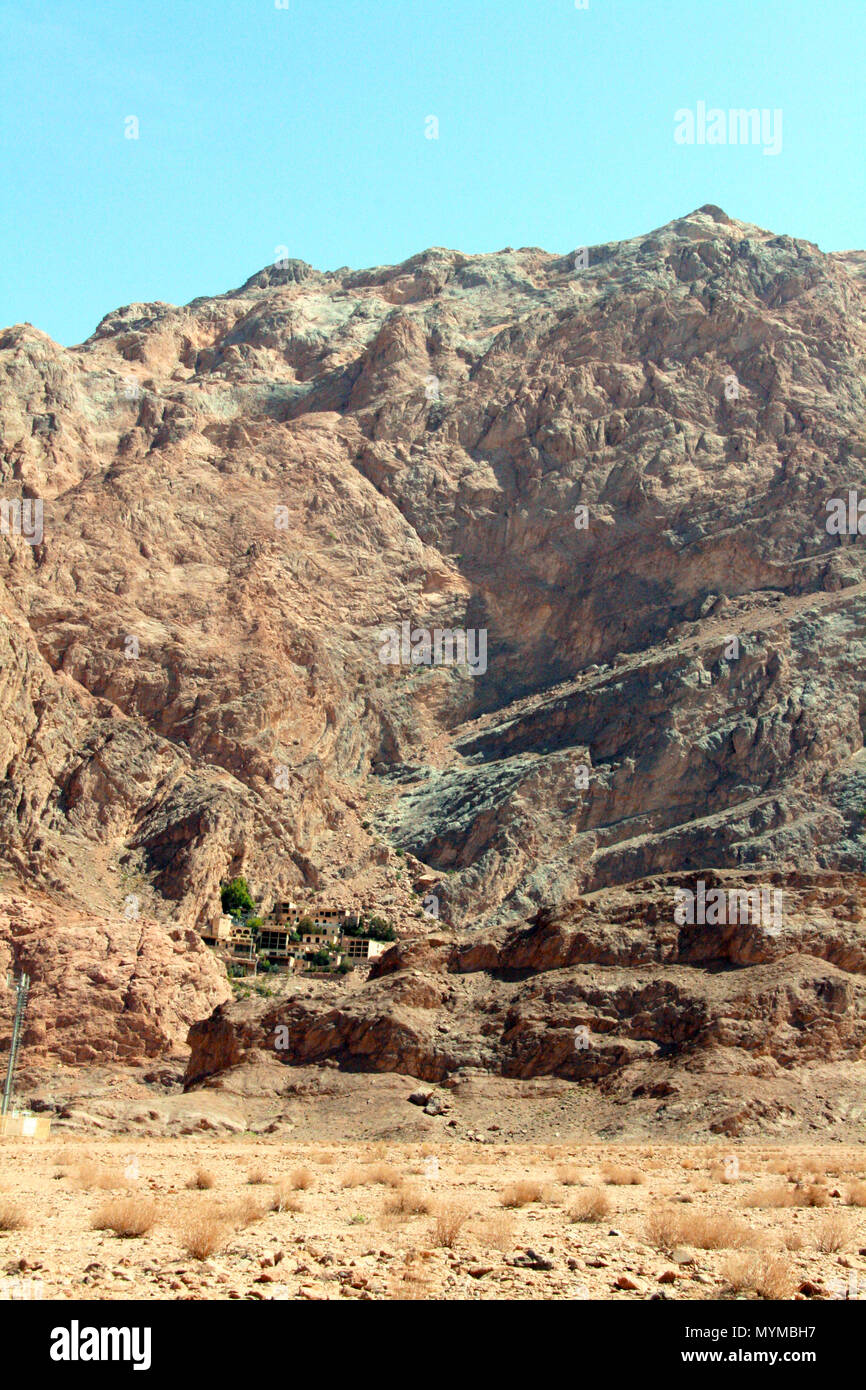 Chak Chak - Pir-e Sabz - Holy shrine of Zoroastrianism, near Ardakan,Yazd Province,Iran Stock Photohttps://www.alamy.com/image-license-details/?v=1https://www.alamy.com/chak-chak-pir-e-sabz-holy-shrine-of-zoroastrianism-near-ardakanyazd-provinceiran-image189147539.html
Chak Chak - Pir-e Sabz - Holy shrine of Zoroastrianism, near Ardakan,Yazd Province,Iran Stock Photohttps://www.alamy.com/image-license-details/?v=1https://www.alamy.com/chak-chak-pir-e-sabz-holy-shrine-of-zoroastrianism-near-ardakanyazd-provinceiran-image189147539.htmlRMMYMBH7–Chak Chak - Pir-e Sabz - Holy shrine of Zoroastrianism, near Ardakan,Yazd Province,Iran
 Festively dressed young Uzbekistani woman, Shah e Sabz, Uzbekistan, Central Asia Stock Photohttps://www.alamy.com/image-license-details/?v=1https://www.alamy.com/stock-photo-festively-dressed-young-uzbekistani-woman-shah-e-sabz-uzbekistan-central-17768264.html
Festively dressed young Uzbekistani woman, Shah e Sabz, Uzbekistan, Central Asia Stock Photohttps://www.alamy.com/image-license-details/?v=1https://www.alamy.com/stock-photo-festively-dressed-young-uzbekistani-woman-shah-e-sabz-uzbekistan-central-17768264.htmlRMB0WBGT–Festively dressed young Uzbekistani woman, Shah e Sabz, Uzbekistan, Central Asia
 Bowl of Green cherry plums in a ceramic bowl Stock Photohttps://www.alamy.com/image-license-details/?v=1https://www.alamy.com/bowl-of-green-cherry-plums-in-a-ceramic-bowl-image471117523.html
Bowl of Green cherry plums in a ceramic bowl Stock Photohttps://www.alamy.com/image-license-details/?v=1https://www.alamy.com/bowl-of-green-cherry-plums-in-a-ceramic-bowl-image471117523.htmlRF2JAD75R–Bowl of Green cherry plums in a ceramic bowl
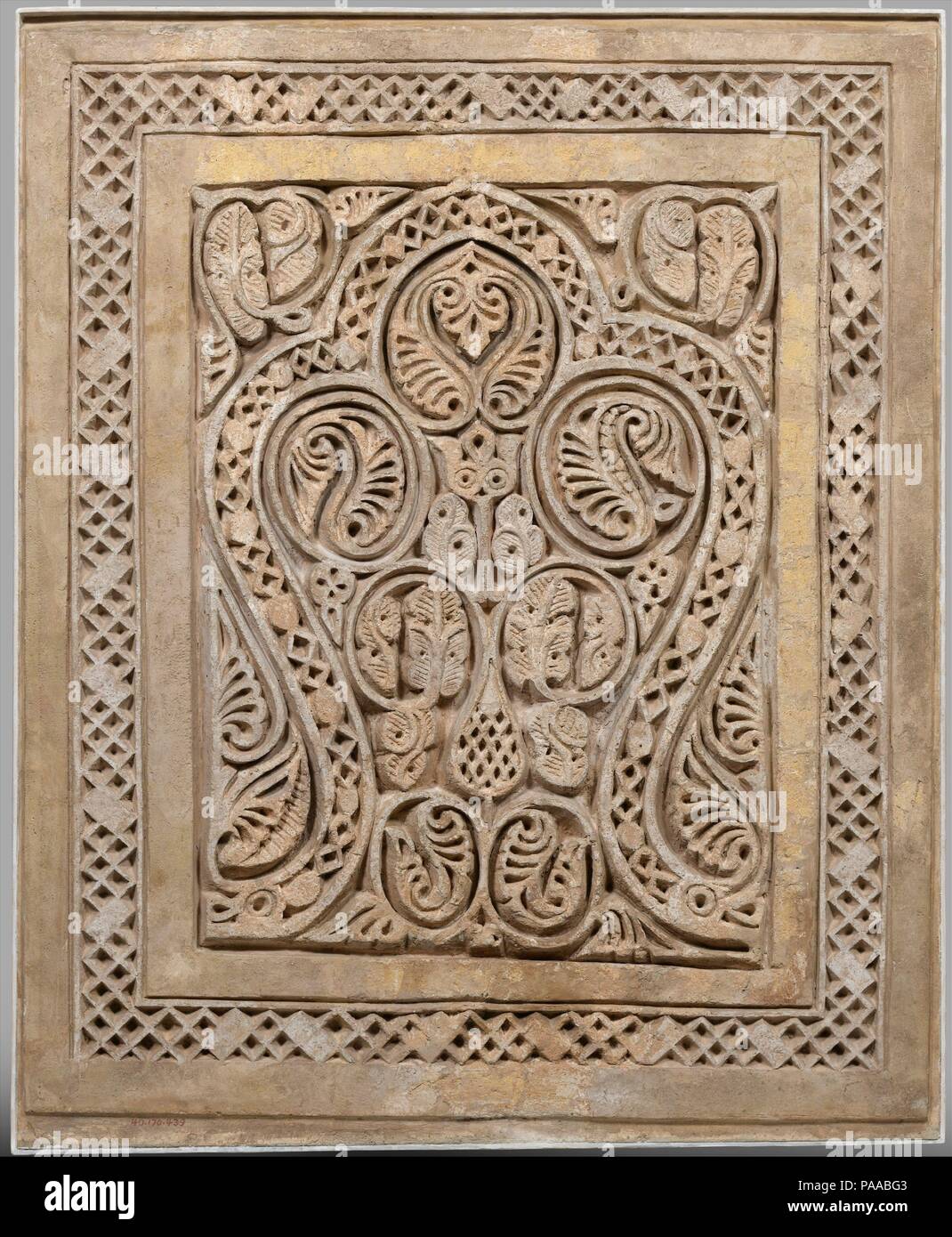 Dado Panel. Dimensions: H. 40 3/4 in. (103.5 cm) W. 33 3/8 in. (84.8 cm) Frame D. with tabs 2 9/16 in. (6.5 cm) Wt. 163 lbs (73.9 kg). Date: 10th century. The original placement of this unique carved stucco panel is uncertain, although its shape and size suggests that it adorned a dado, or the lower half of a wall. It was found in fragmentary form on the floor of a courtyard excavated in the mound known as Sabz Pushan (the Green Covered) at Nishapur, having crumbled from a nearby wall centuries before. In addition to its richly carved decoration of a three-lobed niche, this panel once had Stock Photohttps://www.alamy.com/image-license-details/?v=1https://www.alamy.com/dado-panel-dimensions-h-40-34-in-1035-cm-w-33-38-in-848-cm-frame-d-with-tabs-2-916-in-65-cm-wt-163-lbs-739-kg-date-10th-century-the-original-placement-of-this-unique-carved-stucco-panel-is-uncertain-although-its-shape-and-size-suggests-that-it-adorned-a-dado-or-the-lower-half-of-a-wall-it-was-found-in-fragmentary-form-on-the-floor-of-a-courtyard-excavated-in-the-mound-known-as-sabz-pushan-the-green-covered-at-nishapur-having-crumbled-from-a-nearby-wall-centuries-before-in-addition-to-its-richly-carved-decoration-of-a-three-lobed-niche-this-panel-once-had-image212899571.html
Dado Panel. Dimensions: H. 40 3/4 in. (103.5 cm) W. 33 3/8 in. (84.8 cm) Frame D. with tabs 2 9/16 in. (6.5 cm) Wt. 163 lbs (73.9 kg). Date: 10th century. The original placement of this unique carved stucco panel is uncertain, although its shape and size suggests that it adorned a dado, or the lower half of a wall. It was found in fragmentary form on the floor of a courtyard excavated in the mound known as Sabz Pushan (the Green Covered) at Nishapur, having crumbled from a nearby wall centuries before. In addition to its richly carved decoration of a three-lobed niche, this panel once had Stock Photohttps://www.alamy.com/image-license-details/?v=1https://www.alamy.com/dado-panel-dimensions-h-40-34-in-1035-cm-w-33-38-in-848-cm-frame-d-with-tabs-2-916-in-65-cm-wt-163-lbs-739-kg-date-10th-century-the-original-placement-of-this-unique-carved-stucco-panel-is-uncertain-although-its-shape-and-size-suggests-that-it-adorned-a-dado-or-the-lower-half-of-a-wall-it-was-found-in-fragmentary-form-on-the-floor-of-a-courtyard-excavated-in-the-mound-known-as-sabz-pushan-the-green-covered-at-nishapur-having-crumbled-from-a-nearby-wall-centuries-before-in-addition-to-its-richly-carved-decoration-of-a-three-lobed-niche-this-panel-once-had-image212899571.htmlRMPAABG3–Dado Panel. Dimensions: H. 40 3/4 in. (103.5 cm) W. 33 3/8 in. (84.8 cm) Frame D. with tabs 2 9/16 in. (6.5 cm) Wt. 163 lbs (73.9 kg). Date: 10th century. The original placement of this unique carved stucco panel is uncertain, although its shape and size suggests that it adorned a dado, or the lower half of a wall. It was found in fragmentary form on the floor of a courtyard excavated in the mound known as Sabz Pushan (the Green Covered) at Nishapur, having crumbled from a nearby wall centuries before. In addition to its richly carved decoration of a three-lobed niche, this panel once had
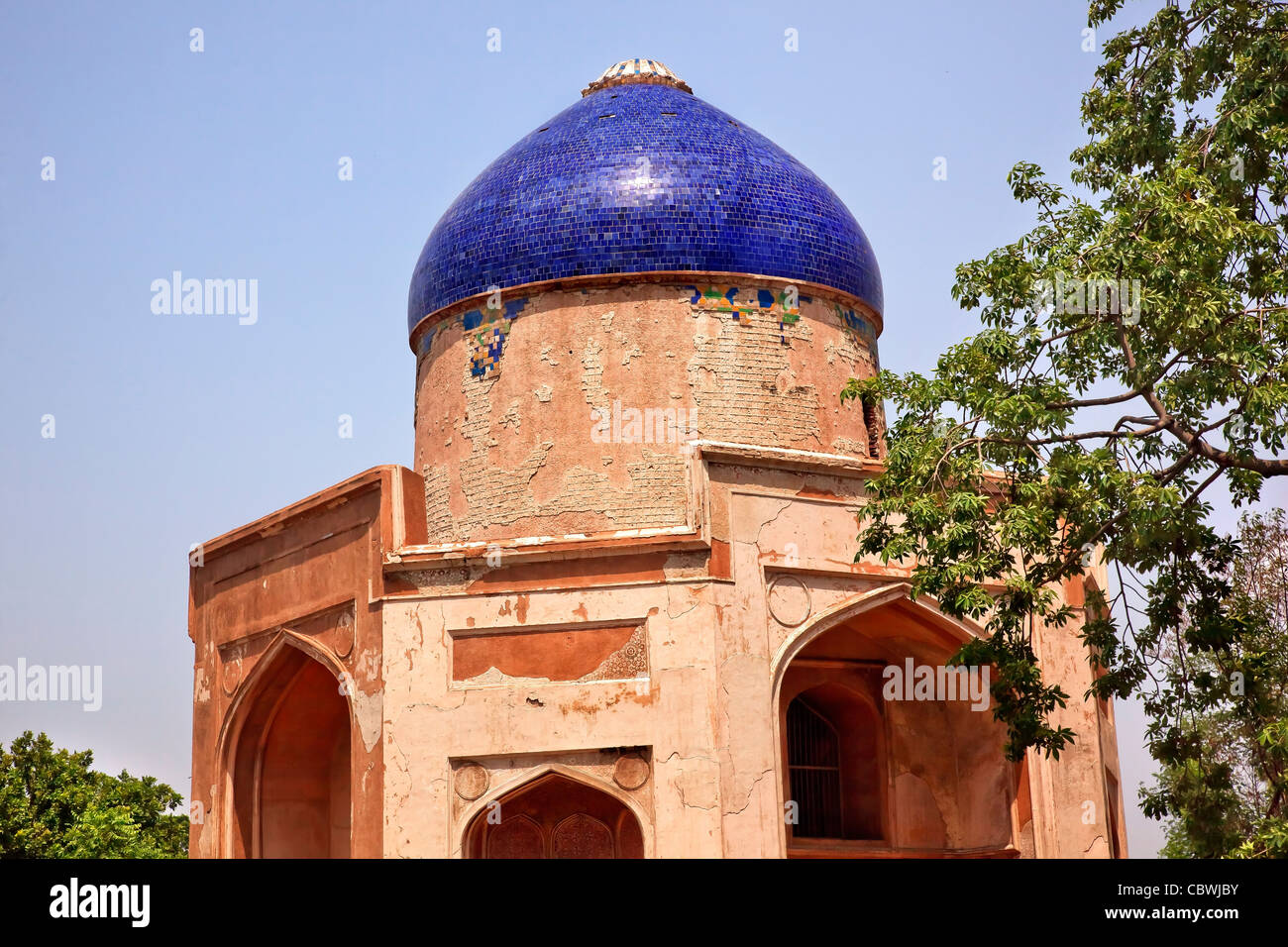 16th Century Blue Dome Sabz Subz Burj Muhgal Tomb New Delhi India Grave Stock Photohttps://www.alamy.com/image-license-details/?v=1https://www.alamy.com/stock-photo-16th-century-blue-dome-sabz-subz-burj-muhgal-tomb-new-delhi-india-41745199.html
16th Century Blue Dome Sabz Subz Burj Muhgal Tomb New Delhi India Grave Stock Photohttps://www.alamy.com/image-license-details/?v=1https://www.alamy.com/stock-photo-16th-century-blue-dome-sabz-subz-burj-muhgal-tomb-new-delhi-india-41745199.htmlRFCBWJBY–16th Century Blue Dome Sabz Subz Burj Muhgal Tomb New Delhi India Grave
 Art inspired by Veiled Woman, 9th–10th century, Excavated in Iran, Nishapur, Stucco; painted, H. 6 5/8 in. (16.8 cm), Stucco, Colored with blue, yellow, black and traces of red, this fragment from a wall painting was excavated from the mound at Nishapur known as Sabz Pushan (the Green, Classic works modernized by Artotop with a splash of modernity. Shapes, color and value, eye-catching visual impact on art. Emotions through freedom of artworks in a contemporary way. A timeless message pursuing a wildly creative new direction. Artists turning to the digital medium and creating the Artotop NFT Stock Photohttps://www.alamy.com/image-license-details/?v=1https://www.alamy.com/art-inspired-by-veiled-woman-9th10th-century-excavated-in-iran-nishapur-stucco-painted-h-6-58-in-168-cm-stucco-colored-with-blue-yellow-black-and-traces-of-red-this-fragment-from-a-wall-painting-was-excavated-from-the-mound-at-nishapur-known-as-sabz-pushan-the-green-classic-works-modernized-by-artotop-with-a-splash-of-modernity-shapes-color-and-value-eye-catching-visual-impact-on-art-emotions-through-freedom-of-artworks-in-a-contemporary-way-a-timeless-message-pursuing-a-wildly-creative-new-direction-artists-turning-to-the-digital-medium-and-creating-the-artotop-nft-image462821043.html
Art inspired by Veiled Woman, 9th–10th century, Excavated in Iran, Nishapur, Stucco; painted, H. 6 5/8 in. (16.8 cm), Stucco, Colored with blue, yellow, black and traces of red, this fragment from a wall painting was excavated from the mound at Nishapur known as Sabz Pushan (the Green, Classic works modernized by Artotop with a splash of modernity. Shapes, color and value, eye-catching visual impact on art. Emotions through freedom of artworks in a contemporary way. A timeless message pursuing a wildly creative new direction. Artists turning to the digital medium and creating the Artotop NFT Stock Photohttps://www.alamy.com/image-license-details/?v=1https://www.alamy.com/art-inspired-by-veiled-woman-9th10th-century-excavated-in-iran-nishapur-stucco-painted-h-6-58-in-168-cm-stucco-colored-with-blue-yellow-black-and-traces-of-red-this-fragment-from-a-wall-painting-was-excavated-from-the-mound-at-nishapur-known-as-sabz-pushan-the-green-classic-works-modernized-by-artotop-with-a-splash-of-modernity-shapes-color-and-value-eye-catching-visual-impact-on-art-emotions-through-freedom-of-artworks-in-a-contemporary-way-a-timeless-message-pursuing-a-wildly-creative-new-direction-artists-turning-to-the-digital-medium-and-creating-the-artotop-nft-image462821043.htmlRF2HTY8XY–Art inspired by Veiled Woman, 9th–10th century, Excavated in Iran, Nishapur, Stucco; painted, H. 6 5/8 in. (16.8 cm), Stucco, Colored with blue, yellow, black and traces of red, this fragment from a wall painting was excavated from the mound at Nishapur known as Sabz Pushan (the Green, Classic works modernized by Artotop with a splash of modernity. Shapes, color and value, eye-catching visual impact on art. Emotions through freedom of artworks in a contemporary way. A timeless message pursuing a wildly creative new direction. Artists turning to the digital medium and creating the Artotop NFT
 Sabz Burj, near to Humayun’s Tomb, New Delhi, Delhi, India Stock Photohttps://www.alamy.com/image-license-details/?v=1https://www.alamy.com/stock-photo-sabz-burj-near-to-humayuns-tomb-new-delhi-delhi-india-24264411.html
Sabz Burj, near to Humayun’s Tomb, New Delhi, Delhi, India Stock Photohttps://www.alamy.com/image-license-details/?v=1https://www.alamy.com/stock-photo-sabz-burj-near-to-humayuns-tomb-new-delhi-delhi-india-24264411.htmlRMBBD9E3–Sabz Burj, near to Humayun’s Tomb, New Delhi, Delhi, India
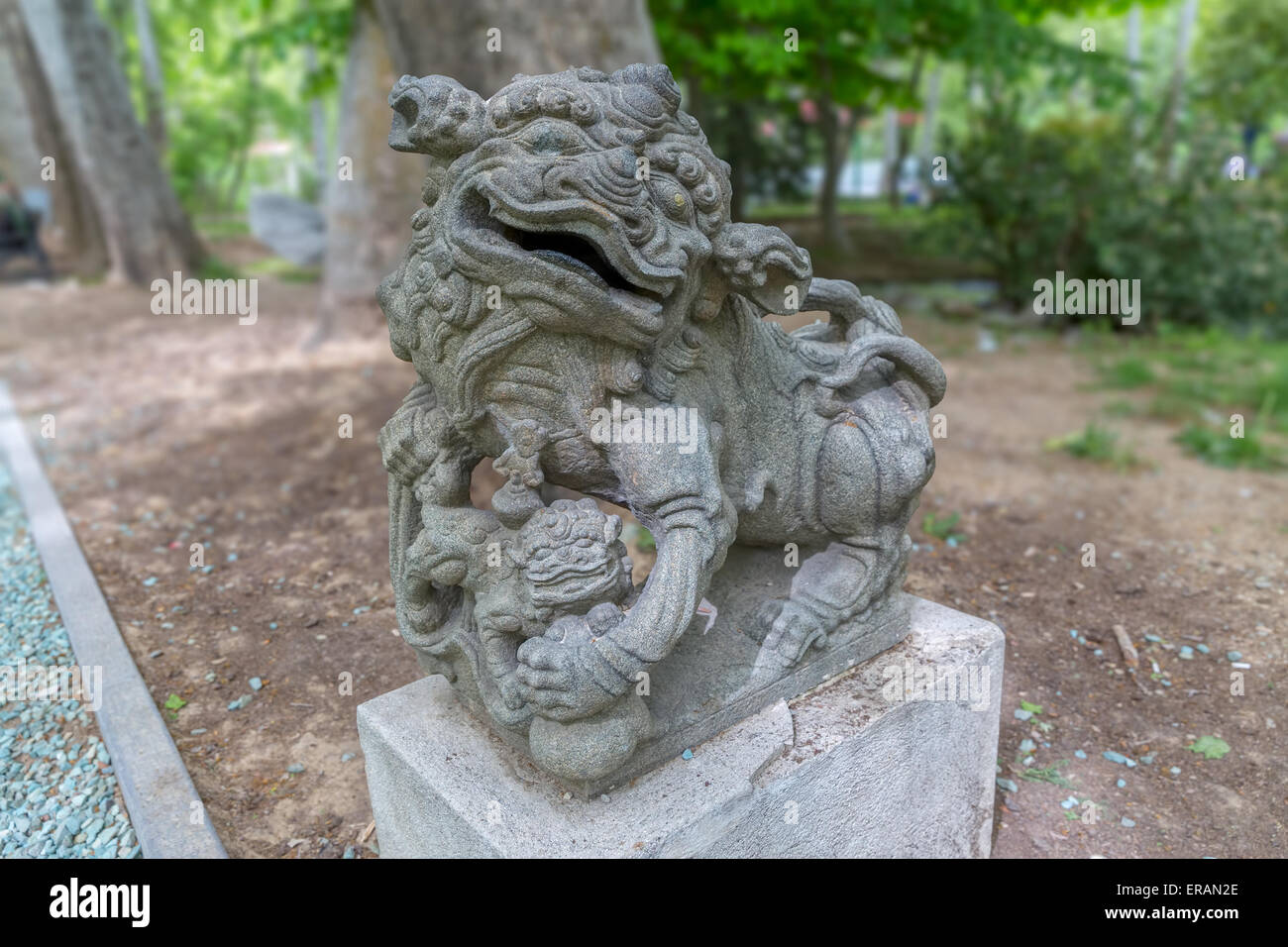 Stone dragons statue Stock Photohttps://www.alamy.com/image-license-details/?v=1https://www.alamy.com/stock-photo-stone-dragons-statue-83214614.html
Stone dragons statue Stock Photohttps://www.alamy.com/image-license-details/?v=1https://www.alamy.com/stock-photo-stone-dragons-statue-83214614.htmlRFERAN2E–Stone dragons statue
 View over the valley from the Pir-e-Sabz fire temple, near Meybod, Iran Stock Photohttps://www.alamy.com/image-license-details/?v=1https://www.alamy.com/stock-photo-view-over-the-valley-from-the-pir-e-sabz-fire-temple-near-meybod-iran-33769969.html
View over the valley from the Pir-e-Sabz fire temple, near Meybod, Iran Stock Photohttps://www.alamy.com/image-license-details/?v=1https://www.alamy.com/stock-photo-view-over-the-valley-from-the-pir-e-sabz-fire-temple-near-meybod-iran-33769969.htmlRFBXX9X9–View over the valley from the Pir-e-Sabz fire temple, near Meybod, Iran
 Members of the Afghan theatre ensemble Rah-e Sabz perform Shakespeare's 'Comedy of Errors' at Globe in Neuss. They performed the play in thr Iranian language Farsi at the 22nd Shakespeare Festival. Photo: Daniel Naupold Stock Photohttps://www.alamy.com/image-license-details/?v=1https://www.alamy.com/stock-photo-members-of-the-afghan-theatre-ensemble-rah-e-sabz-perform-shakespeares-55486912.html
Members of the Afghan theatre ensemble Rah-e Sabz perform Shakespeare's 'Comedy of Errors' at Globe in Neuss. They performed the play in thr Iranian language Farsi at the 22nd Shakespeare Festival. Photo: Daniel Naupold Stock Photohttps://www.alamy.com/image-license-details/?v=1https://www.alamy.com/stock-photo-members-of-the-afghan-theatre-ensemble-rah-e-sabz-perform-shakespeares-55486912.htmlRMD67J3C–Members of the Afghan theatre ensemble Rah-e Sabz perform Shakespeare's 'Comedy of Errors' at Globe in Neuss. They performed the play in thr Iranian language Farsi at the 22nd Shakespeare Festival. Photo: Daniel Naupold
 A horse headdress from Shahr-e-Sabz is on display at an exhibition of 28 restored artworks from two private donations in the Turkish Chamber in the City Palace in Dresden, Germany, 21 May 2014. The oriental art objects were made around 1600 in the Ottoman Bursa, or a century later in Bukhara and Samarkand. Photo: Matthias Hiekel / dpa Stock Photohttps://www.alamy.com/image-license-details/?v=1https://www.alamy.com/a-horse-headdress-from-shahr-e-sabz-is-on-display-at-an-exhibition-image69479522.html
A horse headdress from Shahr-e-Sabz is on display at an exhibition of 28 restored artworks from two private donations in the Turkish Chamber in the City Palace in Dresden, Germany, 21 May 2014. The oriental art objects were made around 1600 in the Ottoman Bursa, or a century later in Bukhara and Samarkand. Photo: Matthias Hiekel / dpa Stock Photohttps://www.alamy.com/image-license-details/?v=1https://www.alamy.com/a-horse-headdress-from-shahr-e-sabz-is-on-display-at-an-exhibition-image69479522.htmlRME111RE–A horse headdress from Shahr-e-Sabz is on display at an exhibition of 28 restored artworks from two private donations in the Turkish Chamber in the City Palace in Dresden, Germany, 21 May 2014. The oriental art objects were made around 1600 in the Ottoman Bursa, or a century later in Bukhara and Samarkand. Photo: Matthias Hiekel / dpa
 Man's surcoat, late 1800s. Prestigious men’s surcoats embellished with designs such as this dramatic decoration in cross-stitch were among the most elaborate silk-thread embroidered garments in Central Asia. In a flamboyant style, large palmettes framed by split-palmette leaves dominate with quartered rosettes and smaller flora on a brilliant yellow ground. Foliate vines enhance the edge along the front center opening, hemline, and cuffs. It is lined with an ikat of cypress trees and finger-looped trim. The style and technique represent professional work from Shahr-i Sabz, south of Sama Stock Photohttps://www.alamy.com/image-license-details/?v=1https://www.alamy.com/mans-surcoat-late-1800s-prestigious-menx2019s-surcoats-embellished-with-designs-such-as-this-dramatic-decoration-in-cross-stitch-were-among-the-most-elaborate-silk-thread-embroidered-garments-in-central-asia-in-a-flamboyant-style-large-palmettes-framed-by-split-palmette-leaves-dominate-with-quartered-rosettes-and-smaller-flora-on-a-brilliant-yellow-ground-foliate-vines-enhance-the-edge-along-the-front-center-opening-hemline-and-cuffs-it-is-lined-with-an-ikat-of-cypress-trees-and-finger-looped-trim-the-style-and-technique-represent-professional-work-from-shahr-i-sabz-south-of-sama-image330105663.html
Man's surcoat, late 1800s. Prestigious men’s surcoats embellished with designs such as this dramatic decoration in cross-stitch were among the most elaborate silk-thread embroidered garments in Central Asia. In a flamboyant style, large palmettes framed by split-palmette leaves dominate with quartered rosettes and smaller flora on a brilliant yellow ground. Foliate vines enhance the edge along the front center opening, hemline, and cuffs. It is lined with an ikat of cypress trees and finger-looped trim. The style and technique represent professional work from Shahr-i Sabz, south of Sama Stock Photohttps://www.alamy.com/image-license-details/?v=1https://www.alamy.com/mans-surcoat-late-1800s-prestigious-menx2019s-surcoats-embellished-with-designs-such-as-this-dramatic-decoration-in-cross-stitch-were-among-the-most-elaborate-silk-thread-embroidered-garments-in-central-asia-in-a-flamboyant-style-large-palmettes-framed-by-split-palmette-leaves-dominate-with-quartered-rosettes-and-smaller-flora-on-a-brilliant-yellow-ground-foliate-vines-enhance-the-edge-along-the-front-center-opening-hemline-and-cuffs-it-is-lined-with-an-ikat-of-cypress-trees-and-finger-looped-trim-the-style-and-technique-represent-professional-work-from-shahr-i-sabz-south-of-sama-image330105663.htmlRM2A51H3Y–Man's surcoat, late 1800s. Prestigious men’s surcoats embellished with designs such as this dramatic decoration in cross-stitch were among the most elaborate silk-thread embroidered garments in Central Asia. In a flamboyant style, large palmettes framed by split-palmette leaves dominate with quartered rosettes and smaller flora on a brilliant yellow ground. Foliate vines enhance the edge along the front center opening, hemline, and cuffs. It is lined with an ikat of cypress trees and finger-looped trim. The style and technique represent professional work from Shahr-i Sabz, south of Sama
 Auto rickshaw carrying passengers passing the Islamic Tomb Sabz Burj, in New Delhi, India. Stock Photohttps://www.alamy.com/image-license-details/?v=1https://www.alamy.com/stock-photo-auto-rickshaw-carrying-passengers-passing-the-islamic-tomb-sabz-burj-144656411.html
Auto rickshaw carrying passengers passing the Islamic Tomb Sabz Burj, in New Delhi, India. Stock Photohttps://www.alamy.com/image-license-details/?v=1https://www.alamy.com/stock-photo-auto-rickshaw-carrying-passengers-passing-the-islamic-tomb-sabz-burj-144656411.htmlRFJB9JMB–Auto rickshaw carrying passengers passing the Islamic Tomb Sabz Burj, in New Delhi, India.
 Painted plaster interior of the Gunbad-i Sayyidan, Shahr-i Sabz, Uzbekistan Stock Photohttps://www.alamy.com/image-license-details/?v=1https://www.alamy.com/stock-photo-painted-plaster-interior-of-the-gunbad-i-sayyidan-shahr-i-sabz-uzbekistan-50856350.html
Painted plaster interior of the Gunbad-i Sayyidan, Shahr-i Sabz, Uzbekistan Stock Photohttps://www.alamy.com/image-license-details/?v=1https://www.alamy.com/stock-photo-painted-plaster-interior-of-the-gunbad-i-sayyidan-shahr-i-sabz-uzbekistan-50856350.htmlRMCXMKP6–Painted plaster interior of the Gunbad-i Sayyidan, Shahr-i Sabz, Uzbekistan
 Man's surcoat (khalat), late 1800s. Uzbekistan, Shahr-i Sabz. Silk: embroidery, cross-stitch; overall: 150 x 218.4 cm (59 1/16 x 86 in.). Stock Photohttps://www.alamy.com/image-license-details/?v=1https://www.alamy.com/mans-surcoat-khalat-late-1800s-uzbekistan-shahr-i-sabz-silk-embroidery-cross-stitch-overall-150-x-2184-cm-59-116-x-86-in-image448106597.html
Man's surcoat (khalat), late 1800s. Uzbekistan, Shahr-i Sabz. Silk: embroidery, cross-stitch; overall: 150 x 218.4 cm (59 1/16 x 86 in.). Stock Photohttps://www.alamy.com/image-license-details/?v=1https://www.alamy.com/mans-surcoat-khalat-late-1800s-uzbekistan-shahr-i-sabz-silk-embroidery-cross-stitch-overall-150-x-2184-cm-59-116-x-86-in-image448106597.htmlRM2H110F1–Man's surcoat (khalat), late 1800s. Uzbekistan, Shahr-i Sabz. Silk: embroidery, cross-stitch; overall: 150 x 218.4 cm (59 1/16 x 86 in.).
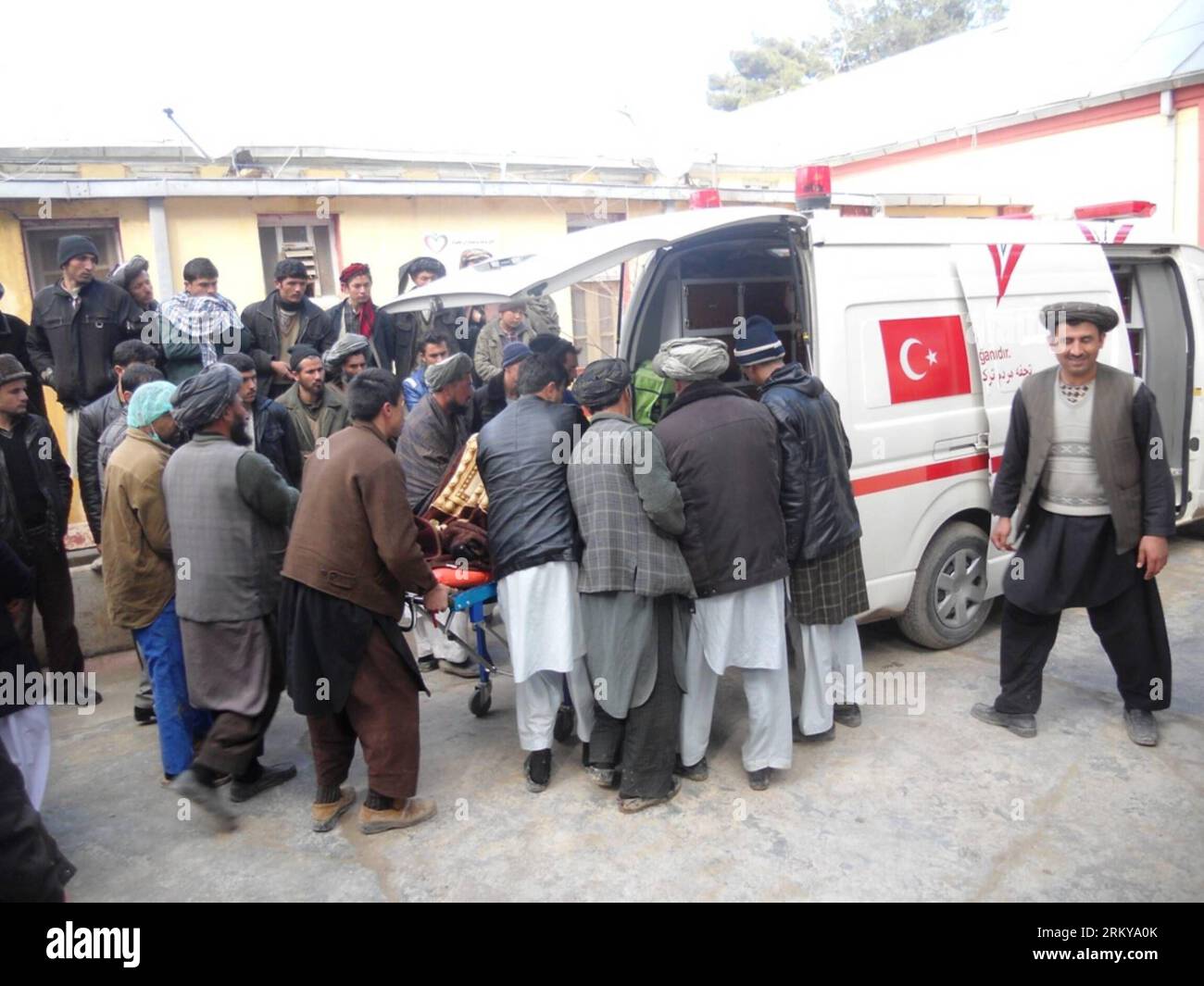 Bildnummer: 59177736 Datum: 05.02.2013 Copyright: imago/Xinhua (130205) -- MAIMANA, Feb. 5, 2013 (Xinhua) -- The injured is carried to a local hospital by ambulance in Khwaja Sabz Posh district of Faryab province, Afghanistan, Feb. 5, 2013. Up to four Afghan civilians were killed and 10 civilians were wounded Tuesday in an explosion in the country s northern province of Faryab, police said.(Xinhua/Arui) AFGHANISTAN-FARYAB-BLAST PUBLICATIONxNOTxINxCHN Gesellschaft Politik Terror Anschlag Terroranschlag Bombe Bombenanschlag xas x0x 2013 quer premiumd 59177736 Date 05 02 2013 Copyright Ima Stock Photohttps://www.alamy.com/image-license-details/?v=1https://www.alamy.com/bildnummer-59177736-datum-05022013-copyright-imagoxinhua-130205-maimana-feb-5-2013-xinhua-the-injured-is-carried-to-a-local-hospital-by-ambulance-in-khwaja-sabz-posh-district-of-faryab-province-afghanistan-feb-5-2013-up-to-four-afghan-civilians-were-killed-and-10-civilians-were-wounded-tuesday-in-an-explosion-in-the-country-s-northern-province-of-faryab-police-saidxinhuaarui-afghanistan-faryab-blast-publicationxnotxinxchn-gesellschaft-politik-terror-anschlag-terroranschlag-bombe-bombenanschlag-xas-x0x-2013-quer-premiumd-59177736-date-05-02-2013-copyright-ima-image563010803.html
Bildnummer: 59177736 Datum: 05.02.2013 Copyright: imago/Xinhua (130205) -- MAIMANA, Feb. 5, 2013 (Xinhua) -- The injured is carried to a local hospital by ambulance in Khwaja Sabz Posh district of Faryab province, Afghanistan, Feb. 5, 2013. Up to four Afghan civilians were killed and 10 civilians were wounded Tuesday in an explosion in the country s northern province of Faryab, police said.(Xinhua/Arui) AFGHANISTAN-FARYAB-BLAST PUBLICATIONxNOTxINxCHN Gesellschaft Politik Terror Anschlag Terroranschlag Bombe Bombenanschlag xas x0x 2013 quer premiumd 59177736 Date 05 02 2013 Copyright Ima Stock Photohttps://www.alamy.com/image-license-details/?v=1https://www.alamy.com/bildnummer-59177736-datum-05022013-copyright-imagoxinhua-130205-maimana-feb-5-2013-xinhua-the-injured-is-carried-to-a-local-hospital-by-ambulance-in-khwaja-sabz-posh-district-of-faryab-province-afghanistan-feb-5-2013-up-to-four-afghan-civilians-were-killed-and-10-civilians-were-wounded-tuesday-in-an-explosion-in-the-country-s-northern-province-of-faryab-police-saidxinhuaarui-afghanistan-faryab-blast-publicationxnotxinxchn-gesellschaft-politik-terror-anschlag-terroranschlag-bombe-bombenanschlag-xas-x0x-2013-quer-premiumd-59177736-date-05-02-2013-copyright-ima-image563010803.htmlRM2RKYA0K–Bildnummer: 59177736 Datum: 05.02.2013 Copyright: imago/Xinhua (130205) -- MAIMANA, Feb. 5, 2013 (Xinhua) -- The injured is carried to a local hospital by ambulance in Khwaja Sabz Posh district of Faryab province, Afghanistan, Feb. 5, 2013. Up to four Afghan civilians were killed and 10 civilians were wounded Tuesday in an explosion in the country s northern province of Faryab, police said.(Xinhua/Arui) AFGHANISTAN-FARYAB-BLAST PUBLICATIONxNOTxINxCHN Gesellschaft Politik Terror Anschlag Terroranschlag Bombe Bombenanschlag xas x0x 2013 quer premiumd 59177736 Date 05 02 2013 Copyright Ima
 New Delhi, India. 16th Sep, 2024. NEW DELHI, INDIA - SEPTEMBER 16: A view of a blue sky at Sabz Burj on September 16, 2024 in New Delhi, India. Built in the 1530s, Sabz Burj is one the earliest Mughal era buildings in India. (Photo by Sanchit Khanna/Hindustan Times/Sipa USA) Credit: Sipa USA/Alamy Live News Stock Photohttps://www.alamy.com/image-license-details/?v=1https://www.alamy.com/new-delhi-india-16th-sep-2024-new-delhi-india-september-16-a-view-of-a-blue-sky-at-sabz-burj-on-september-16-2024-in-new-delhi-india-built-in-the-1530s-sabz-burj-is-one-the-earliest-mughal-era-buildings-in-india-photo-by-sanchit-khannahindustan-timessipa-usa-credit-sipa-usaalamy-live-news-image622197791.html
New Delhi, India. 16th Sep, 2024. NEW DELHI, INDIA - SEPTEMBER 16: A view of a blue sky at Sabz Burj on September 16, 2024 in New Delhi, India. Built in the 1530s, Sabz Burj is one the earliest Mughal era buildings in India. (Photo by Sanchit Khanna/Hindustan Times/Sipa USA) Credit: Sipa USA/Alamy Live News Stock Photohttps://www.alamy.com/image-license-details/?v=1https://www.alamy.com/new-delhi-india-16th-sep-2024-new-delhi-india-september-16-a-view-of-a-blue-sky-at-sabz-burj-on-september-16-2024-in-new-delhi-india-built-in-the-1530s-sabz-burj-is-one-the-earliest-mughal-era-buildings-in-india-photo-by-sanchit-khannahindustan-timessipa-usa-credit-sipa-usaalamy-live-news-image622197791.htmlRM2Y47FHK–New Delhi, India. 16th Sep, 2024. NEW DELHI, INDIA - SEPTEMBER 16: A view of a blue sky at Sabz Burj on September 16, 2024 in New Delhi, India. Built in the 1530s, Sabz Burj is one the earliest Mughal era buildings in India. (Photo by Sanchit Khanna/Hindustan Times/Sipa USA) Credit: Sipa USA/Alamy Live News
 Iranian-Zoroastrian women pray at fire temple of Pir-e Sabz in the village of Chak Chak near the city of Ardakan in Yazd province 795Km (495 Miles) southeast of Tehran, Iran on June 17, 2007. Each year from June 14-18 many thousands of Zoroastrians from Iran, India and other countries flock to the fire temple of Pir-e Sabz. (UPI Photo/Mohammad Kheirkhah) Stock Photohttps://www.alamy.com/image-license-details/?v=1https://www.alamy.com/iranian-zoroastrian-women-pray-at-fire-temple-of-pir-e-sabz-in-the-village-of-chak-chak-near-the-city-of-ardakan-in-yazd-province-795km-495-miles-southeast-of-tehran-iran-on-june-17-2007-each-year-from-june-14-18-many-thousands-of-zoroastrians-from-iran-india-and-other-countries-flock-to-the-fire-temple-of-pir-e-sabz-upi-photomohammad-kheirkhah-image257464121.html
Iranian-Zoroastrian women pray at fire temple of Pir-e Sabz in the village of Chak Chak near the city of Ardakan in Yazd province 795Km (495 Miles) southeast of Tehran, Iran on June 17, 2007. Each year from June 14-18 many thousands of Zoroastrians from Iran, India and other countries flock to the fire temple of Pir-e Sabz. (UPI Photo/Mohammad Kheirkhah) Stock Photohttps://www.alamy.com/image-license-details/?v=1https://www.alamy.com/iranian-zoroastrian-women-pray-at-fire-temple-of-pir-e-sabz-in-the-village-of-chak-chak-near-the-city-of-ardakan-in-yazd-province-795km-495-miles-southeast-of-tehran-iran-on-june-17-2007-each-year-from-june-14-18-many-thousands-of-zoroastrians-from-iran-india-and-other-countries-flock-to-the-fire-temple-of-pir-e-sabz-upi-photomohammad-kheirkhah-image257464121.htmlRMTXTE35–Iranian-Zoroastrian women pray at fire temple of Pir-e Sabz in the village of Chak Chak near the city of Ardakan in Yazd province 795Km (495 Miles) southeast of Tehran, Iran on June 17, 2007. Each year from June 14-18 many thousands of Zoroastrians from Iran, India and other countries flock to the fire temple of Pir-e Sabz. (UPI Photo/Mohammad Kheirkhah)
 Sabz Burj on Mathura road traffic circle New Delhi, India (Photo Copyright © Saji Maramon) Stock Photohttps://www.alamy.com/image-license-details/?v=1https://www.alamy.com/sabz-burj-on-mathura-road-traffic-circle-new-delhi-india-photo-copyright-saji-maramon-image360038826.html
Sabz Burj on Mathura road traffic circle New Delhi, India (Photo Copyright © Saji Maramon) Stock Photohttps://www.alamy.com/image-license-details/?v=1https://www.alamy.com/sabz-burj-on-mathura-road-traffic-circle-new-delhi-india-photo-copyright-saji-maramon-image360038826.htmlRM2BWN55E–Sabz Burj on Mathura road traffic circle New Delhi, India (Photo Copyright © Saji Maramon)
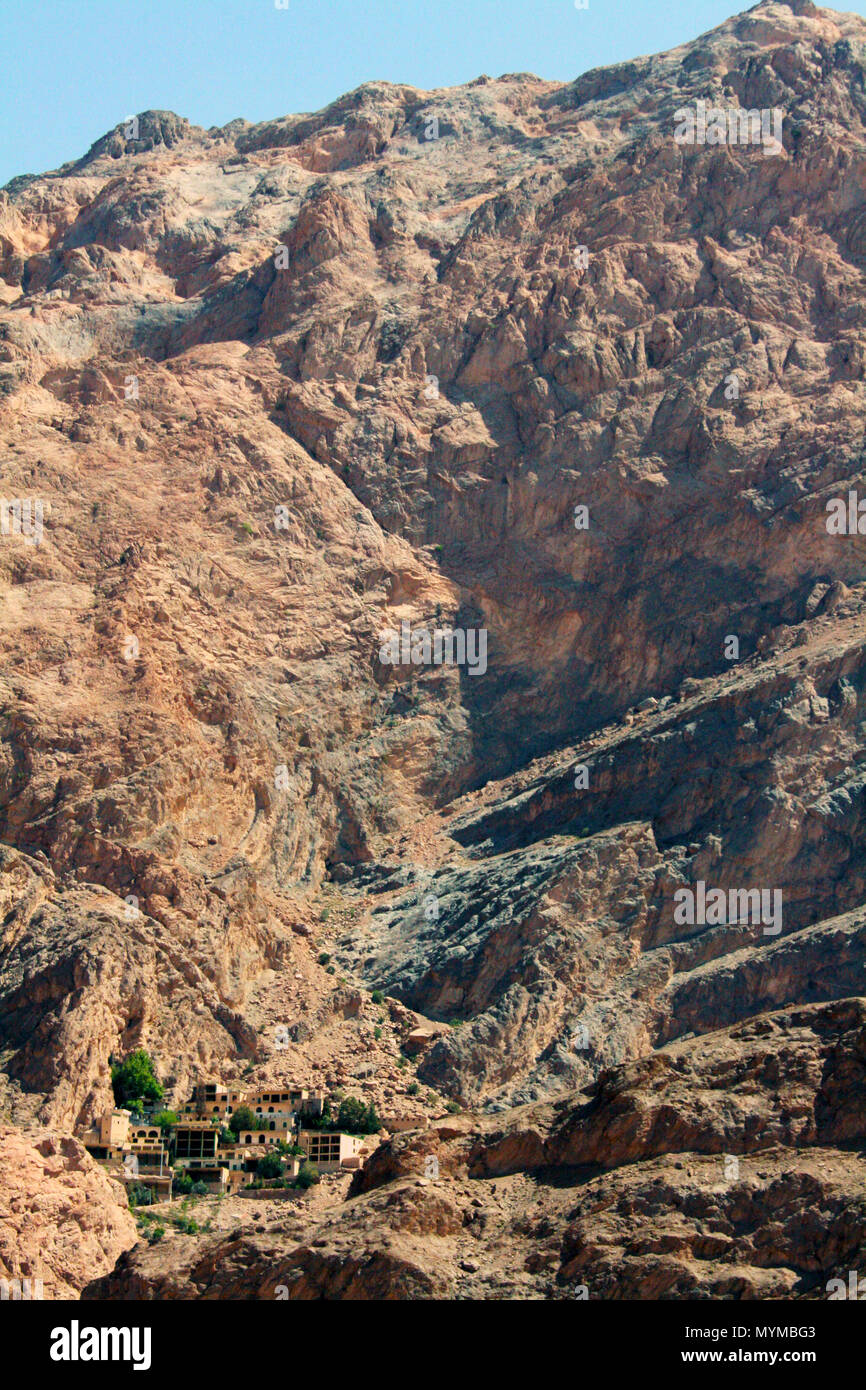 Chak Chak - Pir-e Sabz - Holy shrine of Zoroastrianism, near Ardakan,Yazd Province,Iran Stock Photohttps://www.alamy.com/image-license-details/?v=1https://www.alamy.com/chak-chak-pir-e-sabz-holy-shrine-of-zoroastrianism-near-ardakanyazd-provinceiran-image189147507.html
Chak Chak - Pir-e Sabz - Holy shrine of Zoroastrianism, near Ardakan,Yazd Province,Iran Stock Photohttps://www.alamy.com/image-license-details/?v=1https://www.alamy.com/chak-chak-pir-e-sabz-holy-shrine-of-zoroastrianism-near-ardakanyazd-provinceiran-image189147507.htmlRMMYMBG3–Chak Chak - Pir-e Sabz - Holy shrine of Zoroastrianism, near Ardakan,Yazd Province,Iran
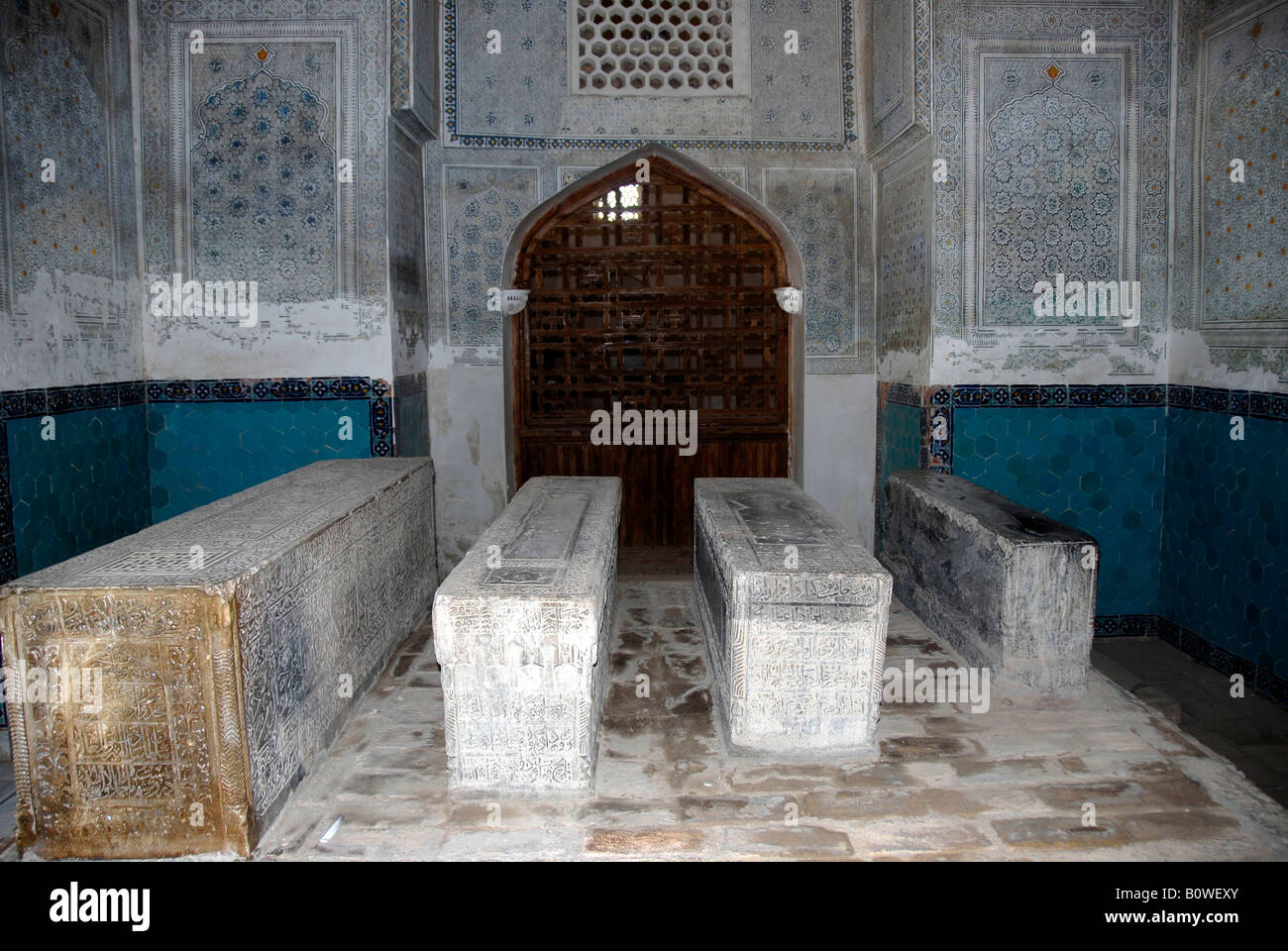 Four graves in a mausoleum, Kok Gumbaz Mosque, Ensemble Dorut Tilovat, Shah e Sabz, Uzbekistan, Central Asia Stock Photohttps://www.alamy.com/image-license-details/?v=1https://www.alamy.com/stock-photo-four-graves-in-a-mausoleum-kok-gumbaz-mosque-ensemble-dorut-tilovat-17770899.html
Four graves in a mausoleum, Kok Gumbaz Mosque, Ensemble Dorut Tilovat, Shah e Sabz, Uzbekistan, Central Asia Stock Photohttps://www.alamy.com/image-license-details/?v=1https://www.alamy.com/stock-photo-four-graves-in-a-mausoleum-kok-gumbaz-mosque-ensemble-dorut-tilovat-17770899.htmlRFB0WEXY–Four graves in a mausoleum, Kok Gumbaz Mosque, Ensemble Dorut Tilovat, Shah e Sabz, Uzbekistan, Central Asia
 Bowl of Green cherry plums in a ceramic bowl Stock Photohttps://www.alamy.com/image-license-details/?v=1https://www.alamy.com/bowl-of-green-cherry-plums-in-a-ceramic-bowl-image471117571.html
Bowl of Green cherry plums in a ceramic bowl Stock Photohttps://www.alamy.com/image-license-details/?v=1https://www.alamy.com/bowl-of-green-cherry-plums-in-a-ceramic-bowl-image471117571.htmlRF2JAD77F–Bowl of Green cherry plums in a ceramic bowl
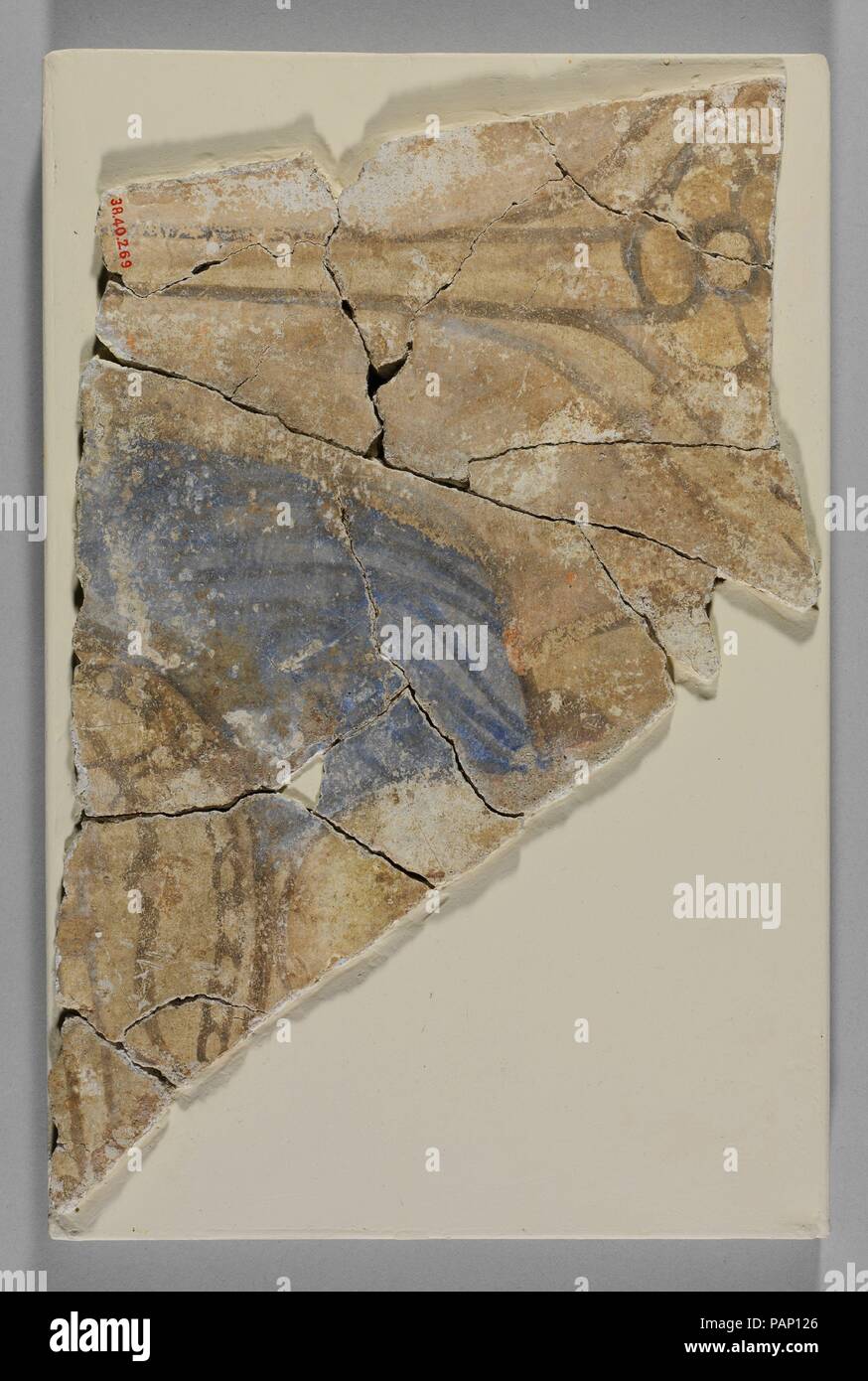 Shoulder of a Figure with Blue Drapery. Dimensions: Obj without setting: H. 6 5/8 in. (16.8 cm) W. 9 13/16 in. (24.9 cm) Object with setting: H. 7 1/8 in. (18.1 cm) W. 10 3/4 in. (27.3 cm) D. 1 1/16 in. (2.7 cm). Date: 9th-10th century. Colored with blue, yellow, black and traces of red, this fragment from a wall painting was excavated from the mound at Nishapur known as Sabz Pushan (the Green Covered). The excavations at Sabz Pushan revealed part of a residential neighborhood dating to the tenth century. This and several similar fragments were found deposited in the bottom of a well d Stock Photohttps://www.alamy.com/image-license-details/?v=1https://www.alamy.com/shoulder-of-a-figure-with-blue-drapery-dimensions-obj-without-setting-h-6-58-in-168-cm-w-9-1316-in-249-cm-object-with-setting-h-7-18-in-181-cm-w-10-34-in-273-cm-d-1-116-in-27-cm-date-9th-10th-century-colored-with-blue-yellow-black-and-traces-of-red-this-fragment-from-a-wall-painting-was-excavated-from-the-mound-at-nishapur-known-as-sabz-pushan-the-green-covered-the-excavations-at-sabz-pushan-revealed-part-of-a-residential-neighborhood-dating-to-the-tenth-century-this-and-several-similar-fragments-were-found-deposited-in-the-bottom-of-a-well-d-image213154766.html
Shoulder of a Figure with Blue Drapery. Dimensions: Obj without setting: H. 6 5/8 in. (16.8 cm) W. 9 13/16 in. (24.9 cm) Object with setting: H. 7 1/8 in. (18.1 cm) W. 10 3/4 in. (27.3 cm) D. 1 1/16 in. (2.7 cm). Date: 9th-10th century. Colored with blue, yellow, black and traces of red, this fragment from a wall painting was excavated from the mound at Nishapur known as Sabz Pushan (the Green Covered). The excavations at Sabz Pushan revealed part of a residential neighborhood dating to the tenth century. This and several similar fragments were found deposited in the bottom of a well d Stock Photohttps://www.alamy.com/image-license-details/?v=1https://www.alamy.com/shoulder-of-a-figure-with-blue-drapery-dimensions-obj-without-setting-h-6-58-in-168-cm-w-9-1316-in-249-cm-object-with-setting-h-7-18-in-181-cm-w-10-34-in-273-cm-d-1-116-in-27-cm-date-9th-10th-century-colored-with-blue-yellow-black-and-traces-of-red-this-fragment-from-a-wall-painting-was-excavated-from-the-mound-at-nishapur-known-as-sabz-pushan-the-green-covered-the-excavations-at-sabz-pushan-revealed-part-of-a-residential-neighborhood-dating-to-the-tenth-century-this-and-several-similar-fragments-were-found-deposited-in-the-bottom-of-a-well-d-image213154766.htmlRMPAP126–Shoulder of a Figure with Blue Drapery. Dimensions: Obj without setting: H. 6 5/8 in. (16.8 cm) W. 9 13/16 in. (24.9 cm) Object with setting: H. 7 1/8 in. (18.1 cm) W. 10 3/4 in. (27.3 cm) D. 1 1/16 in. (2.7 cm). Date: 9th-10th century. Colored with blue, yellow, black and traces of red, this fragment from a wall painting was excavated from the mound at Nishapur known as Sabz Pushan (the Green Covered). The excavations at Sabz Pushan revealed part of a residential neighborhood dating to the tenth century. This and several similar fragments were found deposited in the bottom of a well d
 Dezful, Khuzestan, Iran. 27th Apr, 2023. Iranian President EBRAHIM RAISI visits the holy shrine of Imamzadeh Muhammad bin Musa al-Kazim. The President, who has traveled to Khuzestan province as part of the second round of provincial trips of the Popular Administration, visited the holy shrine of Imamzadeh Muhammad bin Musa al-Kazem nicknamed Sabz-e Qaba in Dezful city upon his arrival in this province and visited the holy shrine and talked in person with the pilgrims of this holy shrine. (Credit Image: © Iranian Presidency via ZUMA Press Wire) EDITORIAL USAGE ONLY! Not for Commercial USAGE! Stock Photohttps://www.alamy.com/image-license-details/?v=1https://www.alamy.com/dezful-khuzestan-iran-27th-apr-2023-iranian-president-ebrahim-raisi-visits-the-holy-shrine-of-imamzadeh-muhammad-bin-musa-al-kazim-the-president-who-has-traveled-to-khuzestan-province-as-part-of-the-second-round-of-provincial-trips-of-the-popular-administration-visited-the-holy-shrine-of-imamzadeh-muhammad-bin-musa-al-kazem-nicknamed-sabz-e-qaba-in-dezful-city-upon-his-arrival-in-this-province-and-visited-the-holy-shrine-and-talked-in-person-with-the-pilgrims-of-this-holy-shrine-credit-image-iranian-presidency-via-zuma-press-wire-editorial-usage-only!-not-for-commercial-usage!-image548393369.html
Dezful, Khuzestan, Iran. 27th Apr, 2023. Iranian President EBRAHIM RAISI visits the holy shrine of Imamzadeh Muhammad bin Musa al-Kazim. The President, who has traveled to Khuzestan province as part of the second round of provincial trips of the Popular Administration, visited the holy shrine of Imamzadeh Muhammad bin Musa al-Kazem nicknamed Sabz-e Qaba in Dezful city upon his arrival in this province and visited the holy shrine and talked in person with the pilgrims of this holy shrine. (Credit Image: © Iranian Presidency via ZUMA Press Wire) EDITORIAL USAGE ONLY! Not for Commercial USAGE! Stock Photohttps://www.alamy.com/image-license-details/?v=1https://www.alamy.com/dezful-khuzestan-iran-27th-apr-2023-iranian-president-ebrahim-raisi-visits-the-holy-shrine-of-imamzadeh-muhammad-bin-musa-al-kazim-the-president-who-has-traveled-to-khuzestan-province-as-part-of-the-second-round-of-provincial-trips-of-the-popular-administration-visited-the-holy-shrine-of-imamzadeh-muhammad-bin-musa-al-kazem-nicknamed-sabz-e-qaba-in-dezful-city-upon-his-arrival-in-this-province-and-visited-the-holy-shrine-and-talked-in-person-with-the-pilgrims-of-this-holy-shrine-credit-image-iranian-presidency-via-zuma-press-wire-editorial-usage-only!-not-for-commercial-usage!-image548393369.htmlRM2PT5D9D–Dezful, Khuzestan, Iran. 27th Apr, 2023. Iranian President EBRAHIM RAISI visits the holy shrine of Imamzadeh Muhammad bin Musa al-Kazim. The President, who has traveled to Khuzestan province as part of the second round of provincial trips of the Popular Administration, visited the holy shrine of Imamzadeh Muhammad bin Musa al-Kazem nicknamed Sabz-e Qaba in Dezful city upon his arrival in this province and visited the holy shrine and talked in person with the pilgrims of this holy shrine. (Credit Image: © Iranian Presidency via ZUMA Press Wire) EDITORIAL USAGE ONLY! Not for Commercial USAGE!
 Art inspired by Man with Black Hair, 9th–10th century, Excavated in Iran, Nishapur, Stucco; painted, H. 8 1/16 in. (20.5 cm), Stucco, Colored with blue, yellow, black and traces of red, this fragment from a wall painting was excavated from the mound at Nishapur known as Sabz Pushan (, Classic works modernized by Artotop with a splash of modernity. Shapes, color and value, eye-catching visual impact on art. Emotions through freedom of artworks in a contemporary way. A timeless message pursuing a wildly creative new direction. Artists turning to the digital medium and creating the Artotop NFT Stock Photohttps://www.alamy.com/image-license-details/?v=1https://www.alamy.com/art-inspired-by-man-with-black-hair-9th10th-century-excavated-in-iran-nishapur-stucco-painted-h-8-116-in-205-cm-stucco-colored-with-blue-yellow-black-and-traces-of-red-this-fragment-from-a-wall-painting-was-excavated-from-the-mound-at-nishapur-known-as-sabz-pushan-classic-works-modernized-by-artotop-with-a-splash-of-modernity-shapes-color-and-value-eye-catching-visual-impact-on-art-emotions-through-freedom-of-artworks-in-a-contemporary-way-a-timeless-message-pursuing-a-wildly-creative-new-direction-artists-turning-to-the-digital-medium-and-creating-the-artotop-nft-image462821034.html
Art inspired by Man with Black Hair, 9th–10th century, Excavated in Iran, Nishapur, Stucco; painted, H. 8 1/16 in. (20.5 cm), Stucco, Colored with blue, yellow, black and traces of red, this fragment from a wall painting was excavated from the mound at Nishapur known as Sabz Pushan (, Classic works modernized by Artotop with a splash of modernity. Shapes, color and value, eye-catching visual impact on art. Emotions through freedom of artworks in a contemporary way. A timeless message pursuing a wildly creative new direction. Artists turning to the digital medium and creating the Artotop NFT Stock Photohttps://www.alamy.com/image-license-details/?v=1https://www.alamy.com/art-inspired-by-man-with-black-hair-9th10th-century-excavated-in-iran-nishapur-stucco-painted-h-8-116-in-205-cm-stucco-colored-with-blue-yellow-black-and-traces-of-red-this-fragment-from-a-wall-painting-was-excavated-from-the-mound-at-nishapur-known-as-sabz-pushan-classic-works-modernized-by-artotop-with-a-splash-of-modernity-shapes-color-and-value-eye-catching-visual-impact-on-art-emotions-through-freedom-of-artworks-in-a-contemporary-way-a-timeless-message-pursuing-a-wildly-creative-new-direction-artists-turning-to-the-digital-medium-and-creating-the-artotop-nft-image462821034.htmlRF2HTY8XJ–Art inspired by Man with Black Hair, 9th–10th century, Excavated in Iran, Nishapur, Stucco; painted, H. 8 1/16 in. (20.5 cm), Stucco, Colored with blue, yellow, black and traces of red, this fragment from a wall painting was excavated from the mound at Nishapur known as Sabz Pushan (, Classic works modernized by Artotop with a splash of modernity. Shapes, color and value, eye-catching visual impact on art. Emotions through freedom of artworks in a contemporary way. A timeless message pursuing a wildly creative new direction. Artists turning to the digital medium and creating the Artotop NFT
 Elderly shrine keeper in front of the Zoroastrian fire temple Pir-e Sabz. Near Yazd, Iran Stock Photohttps://www.alamy.com/image-license-details/?v=1https://www.alamy.com/stock-photo-elderly-shrine-keeper-in-front-of-the-zoroastrian-fire-temple-pir-112648206.html
Elderly shrine keeper in front of the Zoroastrian fire temple Pir-e Sabz. Near Yazd, Iran Stock Photohttps://www.alamy.com/image-license-details/?v=1https://www.alamy.com/stock-photo-elderly-shrine-keeper-in-front-of-the-zoroastrian-fire-temple-pir-112648206.htmlRMGF7FX6–Elderly shrine keeper in front of the Zoroastrian fire temple Pir-e Sabz. Near Yazd, Iran
 Marble Ball Stock Photohttps://www.alamy.com/image-license-details/?v=1https://www.alamy.com/stock-photo-marble-ball-84507207.html
Marble Ball Stock Photohttps://www.alamy.com/image-license-details/?v=1https://www.alamy.com/stock-photo-marble-ball-84507207.htmlRFEWDHPF–Marble Ball
 Delhi the Capital City of India Daily Rush Life and the Old Sabz Burj Green Tower Landmark Monument of Delhi Stock Photohttps://www.alamy.com/image-license-details/?v=1https://www.alamy.com/stock-photo-delhi-the-capital-city-of-india-daily-rush-life-and-the-old-sabz-burj-86422694.html
Delhi the Capital City of India Daily Rush Life and the Old Sabz Burj Green Tower Landmark Monument of Delhi Stock Photohttps://www.alamy.com/image-license-details/?v=1https://www.alamy.com/stock-photo-delhi-the-capital-city-of-india-daily-rush-life-and-the-old-sabz-burj-86422694.htmlRMF0GW0P–Delhi the Capital City of India Daily Rush Life and the Old Sabz Burj Green Tower Landmark Monument of Delhi
 Members of the Afghan theatre ensemble Rah-e Sabz perform Shakespeare's 'Comedy of Errors' at Globe in Neuss. They performed the play in thr Iranian language Farsi at the 22nd Shakespeare Festival. Photo: Daniel Naupold Stock Photohttps://www.alamy.com/image-license-details/?v=1https://www.alamy.com/stock-photo-members-of-the-afghan-theatre-ensemble-rah-e-sabz-perform-shakespeares-55486914.html
Members of the Afghan theatre ensemble Rah-e Sabz perform Shakespeare's 'Comedy of Errors' at Globe in Neuss. They performed the play in thr Iranian language Farsi at the 22nd Shakespeare Festival. Photo: Daniel Naupold Stock Photohttps://www.alamy.com/image-license-details/?v=1https://www.alamy.com/stock-photo-members-of-the-afghan-theatre-ensemble-rah-e-sabz-perform-shakespeares-55486914.htmlRMD67J3E–Members of the Afghan theatre ensemble Rah-e Sabz perform Shakespeare's 'Comedy of Errors' at Globe in Neuss. They performed the play in thr Iranian language Farsi at the 22nd Shakespeare Festival. Photo: Daniel Naupold
 London, UK. 12 January 2016. Moje Sabz, 2011, taxidermy, fibreglass, Jesmonite blob and automobile paint, by Soheila Sokhanvari from Iran. To mark its 30th anniversary, the Saatchi Gallery opens Champagne Life, the Gallery's first all-women exhibition. The show featuring artworks from 14 emerging women artists runs from 13 January to 6 March 2016. Stock Photohttps://www.alamy.com/image-license-details/?v=1https://www.alamy.com/stock-photo-london-uk-12-january-2016-moje-sabz-2011-taxidermy-fibreglass-jesmonite-93008768.html
London, UK. 12 January 2016. Moje Sabz, 2011, taxidermy, fibreglass, Jesmonite blob and automobile paint, by Soheila Sokhanvari from Iran. To mark its 30th anniversary, the Saatchi Gallery opens Champagne Life, the Gallery's first all-women exhibition. The show featuring artworks from 14 emerging women artists runs from 13 January to 6 March 2016. Stock Photohttps://www.alamy.com/image-license-details/?v=1https://www.alamy.com/stock-photo-london-uk-12-january-2016-moje-sabz-2011-taxidermy-fibreglass-jesmonite-93008768.htmlRMFB8WHM–London, UK. 12 January 2016. Moje Sabz, 2011, taxidermy, fibreglass, Jesmonite blob and automobile paint, by Soheila Sokhanvari from Iran. To mark its 30th anniversary, the Saatchi Gallery opens Champagne Life, the Gallery's first all-women exhibition. The show featuring artworks from 14 emerging women artists runs from 13 January to 6 March 2016.
 French troop of the 2nd Company, Regiment of March of Chad security forces patrol in Tarakhel village, Deh Sabz districts, north-east of Kabul city, Afghanistan, on August 25, 2008. Photo by Jose Nicolas/ABACAPRESS.COM Stock Photohttps://www.alamy.com/image-license-details/?v=1https://www.alamy.com/french-troop-of-the-2nd-company-regiment-of-march-of-chad-security-forces-patrol-in-tarakhel-village-deh-sabz-districts-north-east-of-kabul-city-afghanistan-on-august-25-2008-photo-by-jose-nicolasabacapresscom-image399070301.html
French troop of the 2nd Company, Regiment of March of Chad security forces patrol in Tarakhel village, Deh Sabz districts, north-east of Kabul city, Afghanistan, on August 25, 2008. Photo by Jose Nicolas/ABACAPRESS.COM Stock Photohttps://www.alamy.com/image-license-details/?v=1https://www.alamy.com/french-troop-of-the-2nd-company-regiment-of-march-of-chad-security-forces-patrol-in-tarakhel-village-deh-sabz-districts-north-east-of-kabul-city-afghanistan-on-august-25-2008-photo-by-jose-nicolasabacapresscom-image399070301.htmlRF2E5766N–French troop of the 2nd Company, Regiment of March of Chad security forces patrol in Tarakhel village, Deh Sabz districts, north-east of Kabul city, Afghanistan, on August 25, 2008. Photo by Jose Nicolas/ABACAPRESS.COM
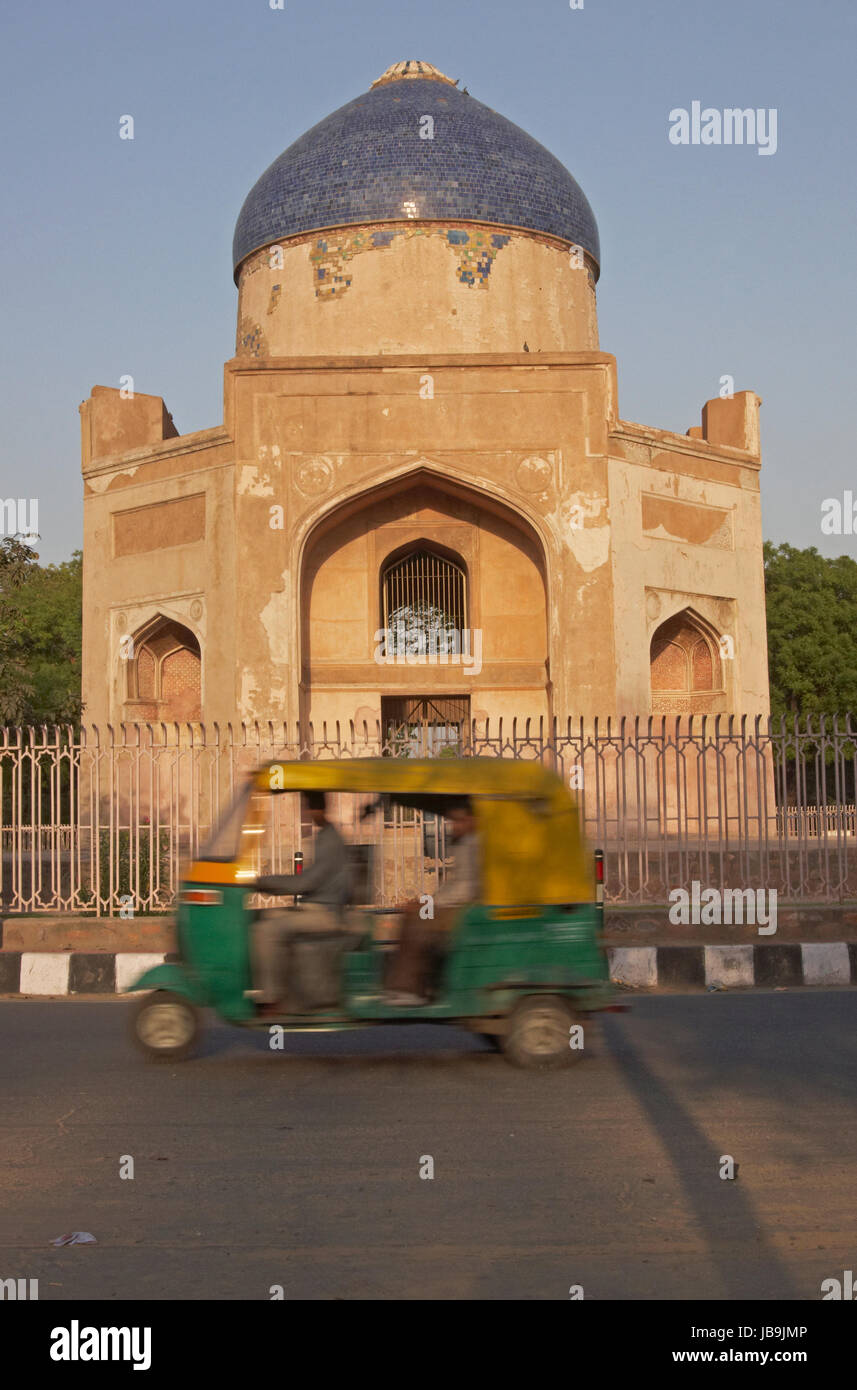 Auto rickshaw carrying passengers passing the Islamic Tomb Sabz Burj, in New Delhi, India. Stock Photohttps://www.alamy.com/image-license-details/?v=1https://www.alamy.com/stock-photo-auto-rickshaw-carrying-passengers-passing-the-islamic-tomb-sabz-burj-144656422.html
Auto rickshaw carrying passengers passing the Islamic Tomb Sabz Burj, in New Delhi, India. Stock Photohttps://www.alamy.com/image-license-details/?v=1https://www.alamy.com/stock-photo-auto-rickshaw-carrying-passengers-passing-the-islamic-tomb-sabz-burj-144656422.htmlRFJB9JMP–Auto rickshaw carrying passengers passing the Islamic Tomb Sabz Burj, in New Delhi, India.
 Painted plaster interior of the Gunbad-i Sayyidan, Shahr-i Sabz, Uzbekistan Stock Photohttps://www.alamy.com/image-license-details/?v=1https://www.alamy.com/stock-photo-painted-plaster-interior-of-the-gunbad-i-sayyidan-shahr-i-sabz-uzbekistan-50856328.html
Painted plaster interior of the Gunbad-i Sayyidan, Shahr-i Sabz, Uzbekistan Stock Photohttps://www.alamy.com/image-license-details/?v=1https://www.alamy.com/stock-photo-painted-plaster-interior-of-the-gunbad-i-sayyidan-shahr-i-sabz-uzbekistan-50856328.htmlRMCXMKNC–Painted plaster interior of the Gunbad-i Sayyidan, Shahr-i Sabz, Uzbekistan
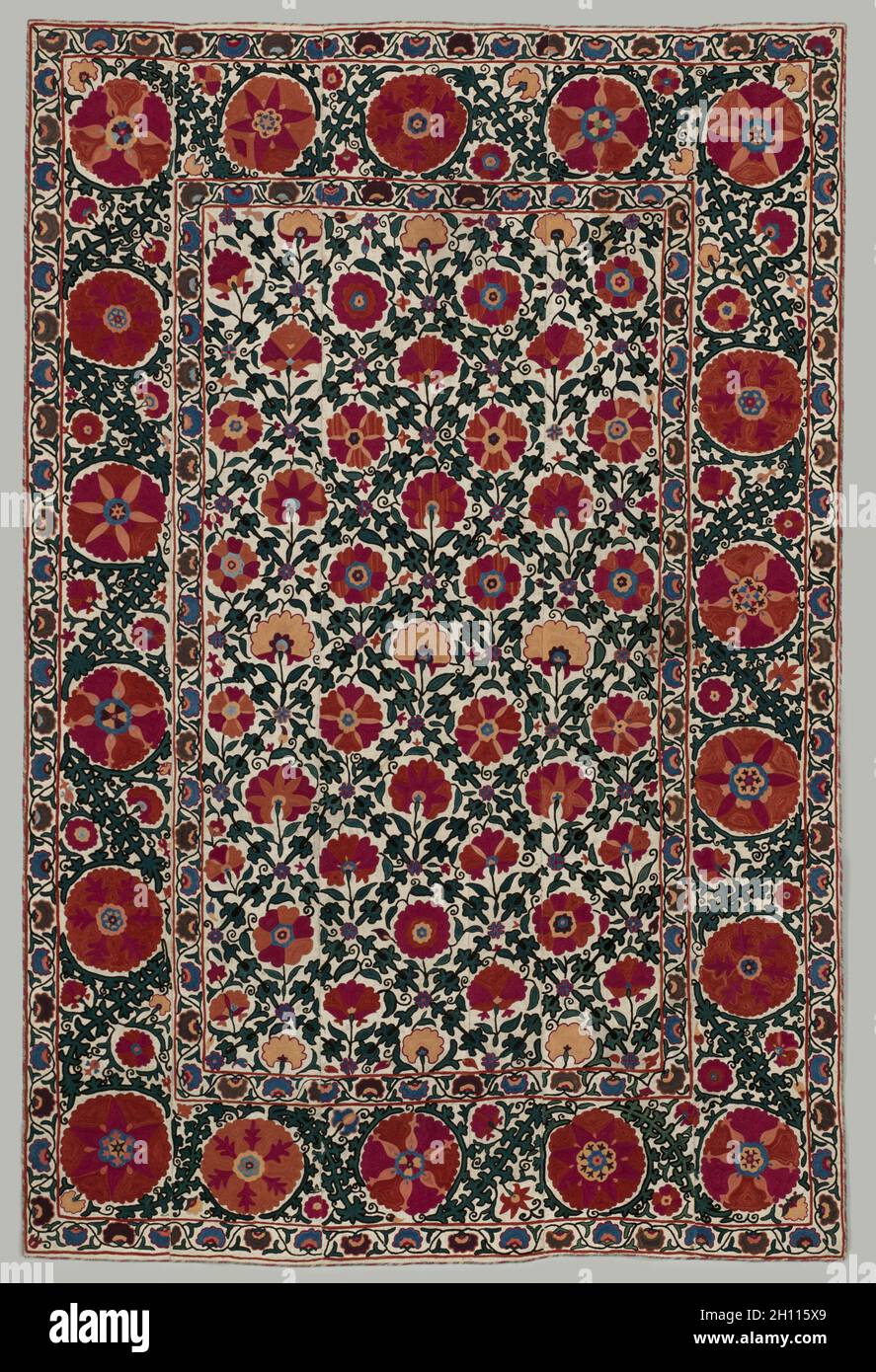 Wall Hanging, 1850-1899. Uzbekistan, Bukhara or Shahr-i Sabz, 19th century. Silk, cotton; plain weave, embroidery, tambour chain stitch; average: 248.5 x 161.3 cm (97 13/16 x 63 1/2 in.). Stock Photohttps://www.alamy.com/image-license-details/?v=1https://www.alamy.com/wall-hanging-1850-1899-uzbekistan-bukhara-or-shahr-i-sabz-19th-century-silk-cotton-plain-weave-embroidery-tambour-chain-stitch-average-2485-x-1613-cm-97-1316-x-63-12-in-image448110833.html
Wall Hanging, 1850-1899. Uzbekistan, Bukhara or Shahr-i Sabz, 19th century. Silk, cotton; plain weave, embroidery, tambour chain stitch; average: 248.5 x 161.3 cm (97 13/16 x 63 1/2 in.). Stock Photohttps://www.alamy.com/image-license-details/?v=1https://www.alamy.com/wall-hanging-1850-1899-uzbekistan-bukhara-or-shahr-i-sabz-19th-century-silk-cotton-plain-weave-embroidery-tambour-chain-stitch-average-2485-x-1613-cm-97-1316-x-63-12-in-image448110833.htmlRM2H115X9–Wall Hanging, 1850-1899. Uzbekistan, Bukhara or Shahr-i Sabz, 19th century. Silk, cotton; plain weave, embroidery, tambour chain stitch; average: 248.5 x 161.3 cm (97 13/16 x 63 1/2 in.).
 London, UK, 15 January 2016, Moje Sabz by Soheila Sokhanvari. Saatchi Gallery in Sloane Square, Chelsea, opens it's first women artist only exhibition promoting women artists at the beginning of their careers. The exhibition is named after one of the works by American artist Julia Watchel highlighting the struggle and hardship that artist have early in their careers. Credit: JOHNNY ARMSTEAD/Alamy Live News Stock Photohttps://www.alamy.com/image-license-details/?v=1https://www.alamy.com/stock-photo-london-uk-15-january-2016-moje-sabz-by-soheila-sokhanvari-saatchi-93139274.html
London, UK, 15 January 2016, Moje Sabz by Soheila Sokhanvari. Saatchi Gallery in Sloane Square, Chelsea, opens it's first women artist only exhibition promoting women artists at the beginning of their careers. The exhibition is named after one of the works by American artist Julia Watchel highlighting the struggle and hardship that artist have early in their careers. Credit: JOHNNY ARMSTEAD/Alamy Live News Stock Photohttps://www.alamy.com/image-license-details/?v=1https://www.alamy.com/stock-photo-london-uk-15-january-2016-moje-sabz-by-soheila-sokhanvari-saatchi-93139274.htmlRMFBET2J–London, UK, 15 January 2016, Moje Sabz by Soheila Sokhanvari. Saatchi Gallery in Sloane Square, Chelsea, opens it's first women artist only exhibition promoting women artists at the beginning of their careers. The exhibition is named after one of the works by American artist Julia Watchel highlighting the struggle and hardship that artist have early in their careers. Credit: JOHNNY ARMSTEAD/Alamy Live News
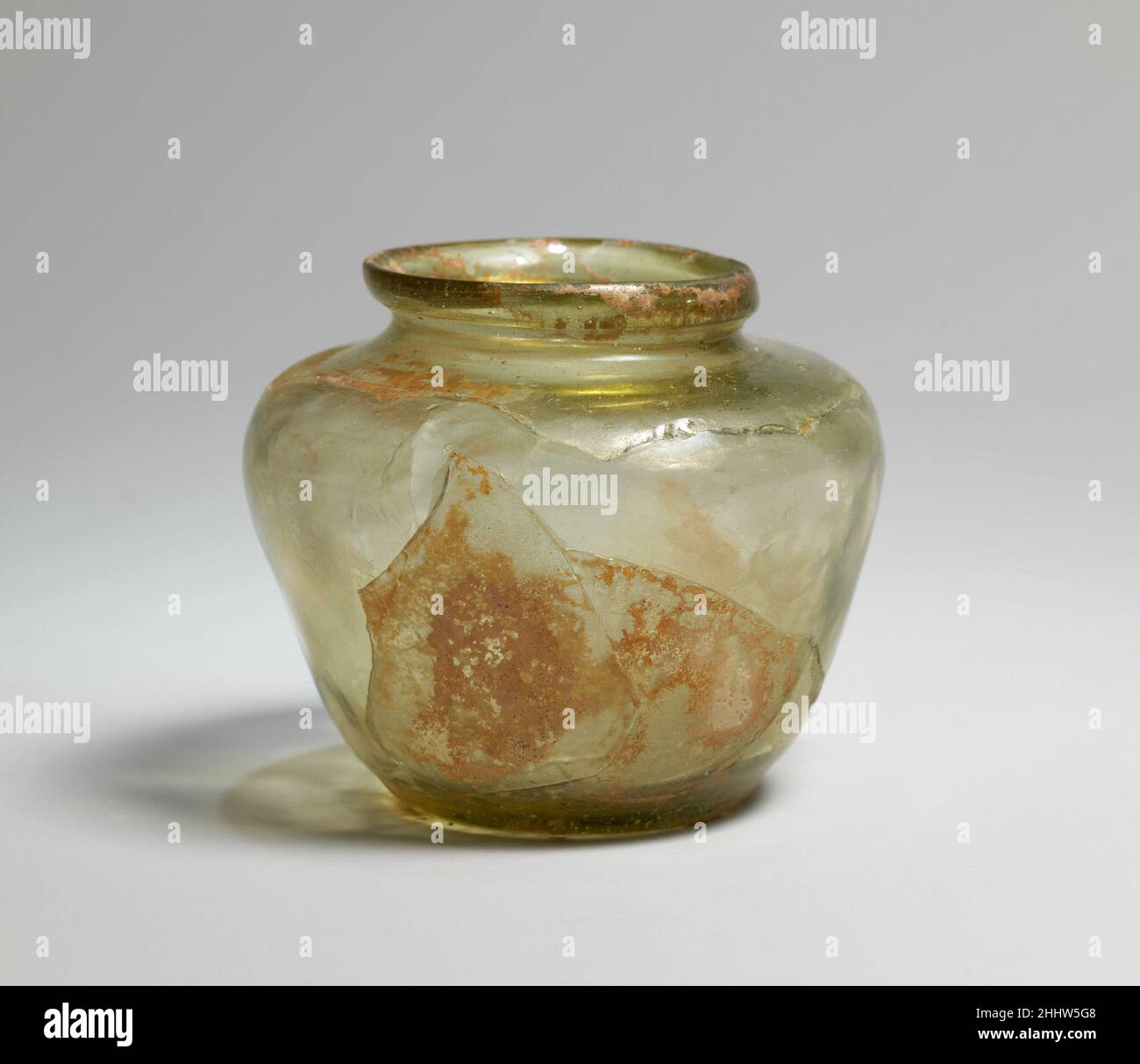 Green Glass Jar 10th century No direct evidence for the production of glass was revealed during the Nishapur excavations, although we assume that glass objects were in fact made in Nishapur, especially the utilitarian vessels found in quantity in the Sabz Pushan neighborhood. This small jar is typical of the glass finds of Sabz Pushan.. Green Glass Jar 449406 Stock Photohttps://www.alamy.com/image-license-details/?v=1https://www.alamy.com/green-glass-jar-10th-century-no-direct-evidence-for-the-production-of-glass-was-revealed-during-the-nishapur-excavations-although-we-assume-that-glass-objects-were-in-fact-made-in-nishapur-especially-the-utilitarian-vessels-found-in-quantity-in-the-sabz-pushan-neighborhood-this-small-jar-is-typical-of-the-glass-finds-of-sabz-pushan-green-glass-jar-449406-image458471896.html
Green Glass Jar 10th century No direct evidence for the production of glass was revealed during the Nishapur excavations, although we assume that glass objects were in fact made in Nishapur, especially the utilitarian vessels found in quantity in the Sabz Pushan neighborhood. This small jar is typical of the glass finds of Sabz Pushan.. Green Glass Jar 449406 Stock Photohttps://www.alamy.com/image-license-details/?v=1https://www.alamy.com/green-glass-jar-10th-century-no-direct-evidence-for-the-production-of-glass-was-revealed-during-the-nishapur-excavations-although-we-assume-that-glass-objects-were-in-fact-made-in-nishapur-especially-the-utilitarian-vessels-found-in-quantity-in-the-sabz-pushan-neighborhood-this-small-jar-is-typical-of-the-glass-finds-of-sabz-pushan-green-glass-jar-449406-image458471896.htmlRM2HHW5G8–Green Glass Jar 10th century No direct evidence for the production of glass was revealed during the Nishapur excavations, although we assume that glass objects were in fact made in Nishapur, especially the utilitarian vessels found in quantity in the Sabz Pushan neighborhood. This small jar is typical of the glass finds of Sabz Pushan.. Green Glass Jar 449406
 New Delhi, India. 16th Sep, 2024. NEW DELHI, INDIA - SEPTEMBER 16: A view of a blue sky at Sabz Burj on September 16, 2024 in New Delhi, India. Built in the 1530s, Sabz Burj is one the earliest Mughal era buildings in India. (Photo by Sanchit Khanna/Hindustan Times/Sipa USA) Credit: Sipa USA/Alamy Live News Stock Photohttps://www.alamy.com/image-license-details/?v=1https://www.alamy.com/new-delhi-india-16th-sep-2024-new-delhi-india-september-16-a-view-of-a-blue-sky-at-sabz-burj-on-september-16-2024-in-new-delhi-india-built-in-the-1530s-sabz-burj-is-one-the-earliest-mughal-era-buildings-in-india-photo-by-sanchit-khannahindustan-timessipa-usa-credit-sipa-usaalamy-live-news-image622200558.html
New Delhi, India. 16th Sep, 2024. NEW DELHI, INDIA - SEPTEMBER 16: A view of a blue sky at Sabz Burj on September 16, 2024 in New Delhi, India. Built in the 1530s, Sabz Burj is one the earliest Mughal era buildings in India. (Photo by Sanchit Khanna/Hindustan Times/Sipa USA) Credit: Sipa USA/Alamy Live News Stock Photohttps://www.alamy.com/image-license-details/?v=1https://www.alamy.com/new-delhi-india-16th-sep-2024-new-delhi-india-september-16-a-view-of-a-blue-sky-at-sabz-burj-on-september-16-2024-in-new-delhi-india-built-in-the-1530s-sabz-burj-is-one-the-earliest-mughal-era-buildings-in-india-photo-by-sanchit-khannahindustan-timessipa-usa-credit-sipa-usaalamy-live-news-image622200558.htmlRM2Y47K4E–New Delhi, India. 16th Sep, 2024. NEW DELHI, INDIA - SEPTEMBER 16: A view of a blue sky at Sabz Burj on September 16, 2024 in New Delhi, India. Built in the 1530s, Sabz Burj is one the earliest Mughal era buildings in India. (Photo by Sanchit Khanna/Hindustan Times/Sipa USA) Credit: Sipa USA/Alamy Live News
 Sabz Burj on Mathura road traffic circle New Delhi, India (Photo Copyright © Saji Maramon) Stock Photohttps://www.alamy.com/image-license-details/?v=1https://www.alamy.com/sabz-burj-on-mathura-road-traffic-circle-new-delhi-india-photo-copyright-saji-maramon-image360039042.html
Sabz Burj on Mathura road traffic circle New Delhi, India (Photo Copyright © Saji Maramon) Stock Photohttps://www.alamy.com/image-license-details/?v=1https://www.alamy.com/sabz-burj-on-mathura-road-traffic-circle-new-delhi-india-photo-copyright-saji-maramon-image360039042.htmlRM2BWN5D6–Sabz Burj on Mathura road traffic circle New Delhi, India (Photo Copyright © Saji Maramon)
 Chak Chak - Pir-e Sabz - Holy shrine of Zoroastrianism, near Ardakan,Yazd Province,Iran Stock Photohttps://www.alamy.com/image-license-details/?v=1https://www.alamy.com/chak-chak-pir-e-sabz-holy-shrine-of-zoroastrianism-near-ardakanyazd-provinceiran-image189154615.html
Chak Chak - Pir-e Sabz - Holy shrine of Zoroastrianism, near Ardakan,Yazd Province,Iran Stock Photohttps://www.alamy.com/image-license-details/?v=1https://www.alamy.com/chak-chak-pir-e-sabz-holy-shrine-of-zoroastrianism-near-ardakanyazd-provinceiran-image189154615.htmlRMMYMMHY–Chak Chak - Pir-e Sabz - Holy shrine of Zoroastrianism, near Ardakan,Yazd Province,Iran
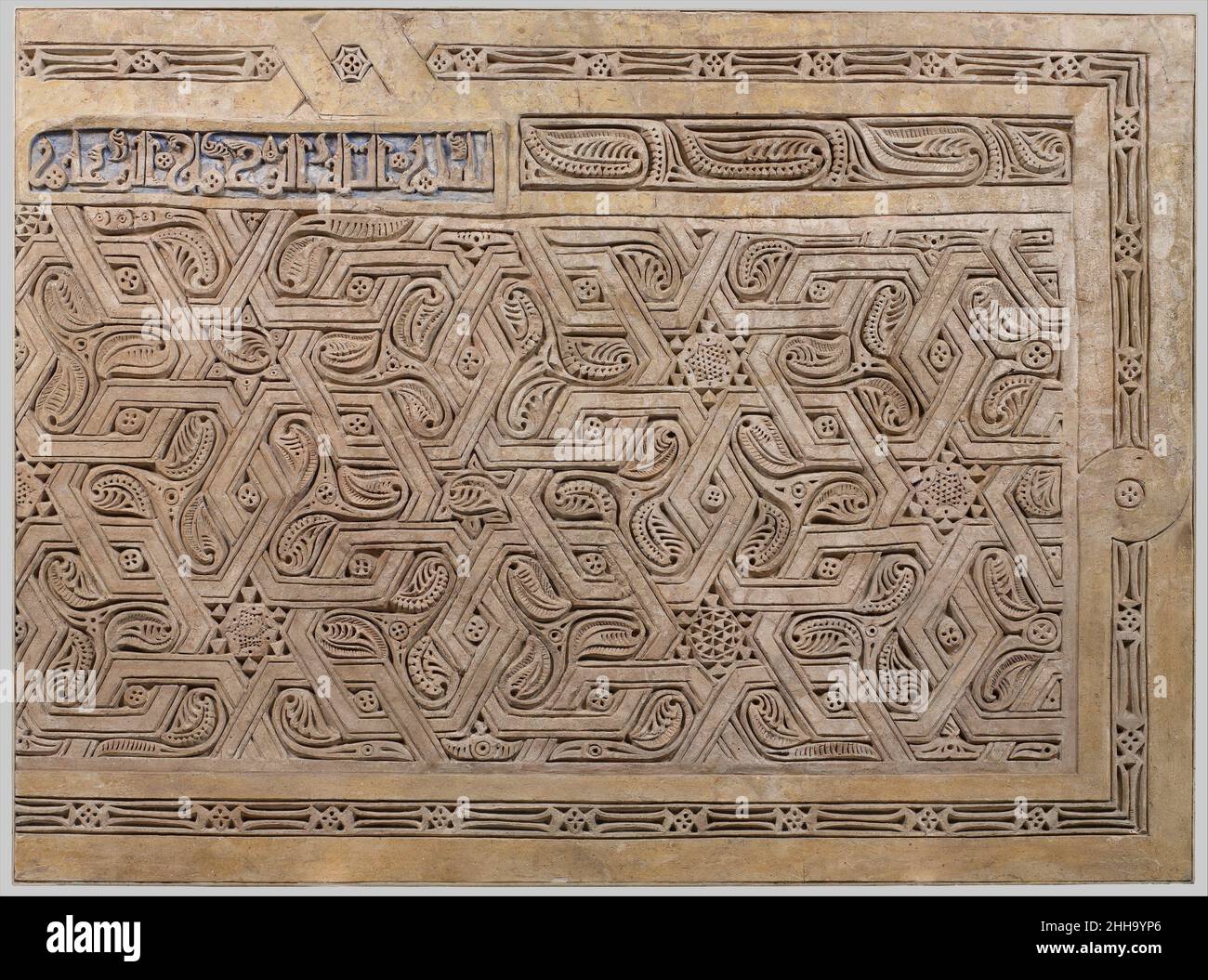 Dado Panel 10th century The inscription on the upper left side of this stucco panel reads, 'In the name of God, the Merciful, the Compassionate.' It comes from the courtyard of one of the houses in the Sabz Pushan neighborhood of Nishapur. The presence of this inscription suggests the residence may have functioned as a small neighborhood mosque or perhaps even a madrasa (religious college). Religious texts, however, were also found on private residences.. Dado Panel 450115 Stock Photohttps://www.alamy.com/image-license-details/?v=1https://www.alamy.com/dado-panel-10th-century-the-inscription-on-the-upper-left-side-of-this-stucco-panel-reads-in-the-name-of-god-the-merciful-the-compassionate-it-comes-from-the-courtyard-of-one-of-the-houses-in-the-sabz-pushan-neighborhood-of-nishapur-the-presence-of-this-inscription-suggests-the-residence-may-have-functioned-as-a-small-neighborhood-mosque-or-perhaps-even-a-madrasa-religious-college-religious-texts-however-were-also-found-on-private-residences-dado-panel-450115-image458138078.html
Dado Panel 10th century The inscription on the upper left side of this stucco panel reads, 'In the name of God, the Merciful, the Compassionate.' It comes from the courtyard of one of the houses in the Sabz Pushan neighborhood of Nishapur. The presence of this inscription suggests the residence may have functioned as a small neighborhood mosque or perhaps even a madrasa (religious college). Religious texts, however, were also found on private residences.. Dado Panel 450115 Stock Photohttps://www.alamy.com/image-license-details/?v=1https://www.alamy.com/dado-panel-10th-century-the-inscription-on-the-upper-left-side-of-this-stucco-panel-reads-in-the-name-of-god-the-merciful-the-compassionate-it-comes-from-the-courtyard-of-one-of-the-houses-in-the-sabz-pushan-neighborhood-of-nishapur-the-presence-of-this-inscription-suggests-the-residence-may-have-functioned-as-a-small-neighborhood-mosque-or-perhaps-even-a-madrasa-religious-college-religious-texts-however-were-also-found-on-private-residences-dado-panel-450115-image458138078.htmlRM2HH9YP6–Dado Panel 10th century The inscription on the upper left side of this stucco panel reads, 'In the name of God, the Merciful, the Compassionate.' It comes from the courtyard of one of the houses in the Sabz Pushan neighborhood of Nishapur. The presence of this inscription suggests the residence may have functioned as a small neighborhood mosque or perhaps even a madrasa (religious college). Religious texts, however, were also found on private residences.. Dado Panel 450115
 An Iranian-Zoroastrian woman prays at fire temple of Pir-e Sabz in the village of Chak Chak near the city of Ardakan in Yazd province 795Km (495 Miles) southeast of Tehran, Iran on June 17, 2007. Each year from June 14-18 many thousands of Zoroastrians from Iran, India and other countries flock to the fire temple of Pir-e Sabz. (UPI Photo/Mohammad Kheirkhah) Stock Photohttps://www.alamy.com/image-license-details/?v=1https://www.alamy.com/an-iranian-zoroastrian-woman-prays-at-fire-temple-of-pir-e-sabz-in-the-village-of-chak-chak-near-the-city-of-ardakan-in-yazd-province-795km-495-miles-southeast-of-tehran-iran-on-june-17-2007-each-year-from-june-14-18-many-thousands-of-zoroastrians-from-iran-india-and-other-countries-flock-to-the-fire-temple-of-pir-e-sabz-upi-photomohammad-kheirkhah-image257464118.html
An Iranian-Zoroastrian woman prays at fire temple of Pir-e Sabz in the village of Chak Chak near the city of Ardakan in Yazd province 795Km (495 Miles) southeast of Tehran, Iran on June 17, 2007. Each year from June 14-18 many thousands of Zoroastrians from Iran, India and other countries flock to the fire temple of Pir-e Sabz. (UPI Photo/Mohammad Kheirkhah) Stock Photohttps://www.alamy.com/image-license-details/?v=1https://www.alamy.com/an-iranian-zoroastrian-woman-prays-at-fire-temple-of-pir-e-sabz-in-the-village-of-chak-chak-near-the-city-of-ardakan-in-yazd-province-795km-495-miles-southeast-of-tehran-iran-on-june-17-2007-each-year-from-june-14-18-many-thousands-of-zoroastrians-from-iran-india-and-other-countries-flock-to-the-fire-temple-of-pir-e-sabz-upi-photomohammad-kheirkhah-image257464118.htmlRMTXTE32–An Iranian-Zoroastrian woman prays at fire temple of Pir-e Sabz in the village of Chak Chak near the city of Ardakan in Yazd province 795Km (495 Miles) southeast of Tehran, Iran on June 17, 2007. Each year from June 14-18 many thousands of Zoroastrians from Iran, India and other countries flock to the fire temple of Pir-e Sabz. (UPI Photo/Mohammad Kheirkhah)
 Blue Figure, Possibly a Demon. Dimensions: Object without setting: H. 4 3/4 in. (12.1 cm) W. 4 1/8 in. (10.5 cm) Object in setting: H. 5 1/16 in. (12.9 cm) W. 4 5/8 in. (11.7 cm) D. 1 in. (2.5 cm) Wt. 23.2 oz. (657.783 g). Date: 9th-10th century. Colored with blue, yellow, black and traces of red, this fragment from a wall painting was excavated from the mound at Nishapur known as Sabz Pushan (the Green Covered). The excavations at Sabz Pushan revealed part of a residential neighborhood dating to the tenth century. This and several similar fragments were found deposited in the bottom of Stock Photohttps://www.alamy.com/image-license-details/?v=1https://www.alamy.com/blue-figure-possibly-a-demon-dimensions-object-without-setting-h-4-34-in-121-cm-w-4-18-in-105-cm-object-in-setting-h-5-116-in-129-cm-w-4-58-in-117-cm-d-1-in-25-cm-wt-232-oz-657783-g-date-9th-10th-century-colored-with-blue-yellow-black-and-traces-of-red-this-fragment-from-a-wall-painting-was-excavated-from-the-mound-at-nishapur-known-as-sabz-pushan-the-green-covered-the-excavations-at-sabz-pushan-revealed-part-of-a-residential-neighborhood-dating-to-the-tenth-century-this-and-several-similar-fragments-were-found-deposited-in-the-bottom-of-image213248909.html
Blue Figure, Possibly a Demon. Dimensions: Object without setting: H. 4 3/4 in. (12.1 cm) W. 4 1/8 in. (10.5 cm) Object in setting: H. 5 1/16 in. (12.9 cm) W. 4 5/8 in. (11.7 cm) D. 1 in. (2.5 cm) Wt. 23.2 oz. (657.783 g). Date: 9th-10th century. Colored with blue, yellow, black and traces of red, this fragment from a wall painting was excavated from the mound at Nishapur known as Sabz Pushan (the Green Covered). The excavations at Sabz Pushan revealed part of a residential neighborhood dating to the tenth century. This and several similar fragments were found deposited in the bottom of Stock Photohttps://www.alamy.com/image-license-details/?v=1https://www.alamy.com/blue-figure-possibly-a-demon-dimensions-object-without-setting-h-4-34-in-121-cm-w-4-18-in-105-cm-object-in-setting-h-5-116-in-129-cm-w-4-58-in-117-cm-d-1-in-25-cm-wt-232-oz-657783-g-date-9th-10th-century-colored-with-blue-yellow-black-and-traces-of-red-this-fragment-from-a-wall-painting-was-excavated-from-the-mound-at-nishapur-known-as-sabz-pushan-the-green-covered-the-excavations-at-sabz-pushan-revealed-part-of-a-residential-neighborhood-dating-to-the-tenth-century-this-and-several-similar-fragments-were-found-deposited-in-the-bottom-of-image213248909.htmlRMPAX94D–Blue Figure, Possibly a Demon. Dimensions: Object without setting: H. 4 3/4 in. (12.1 cm) W. 4 1/8 in. (10.5 cm) Object in setting: H. 5 1/16 in. (12.9 cm) W. 4 5/8 in. (11.7 cm) D. 1 in. (2.5 cm) Wt. 23.2 oz. (657.783 g). Date: 9th-10th century. Colored with blue, yellow, black and traces of red, this fragment from a wall painting was excavated from the mound at Nishapur known as Sabz Pushan (the Green Covered). The excavations at Sabz Pushan revealed part of a residential neighborhood dating to the tenth century. This and several similar fragments were found deposited in the bottom of
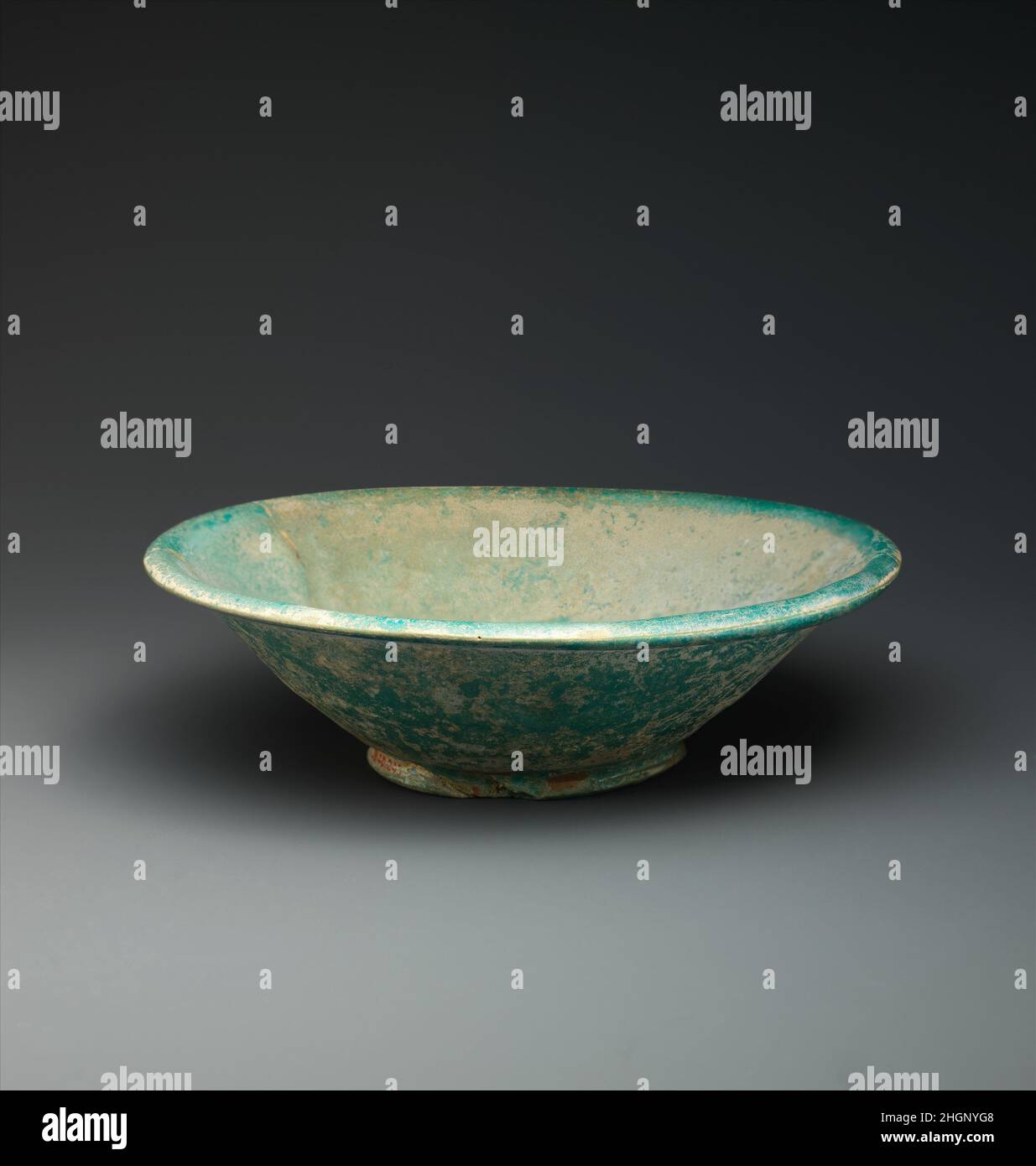 Bowl 10th century This bowl was excavated at the site of Sabz Pushan in Nishapur in 1937. It was subsequently acquired by the Museum through a division of finds with the Iranian government at the time.Similar objects, earthenware with an opaque turquoise glaze, were also excavated in Central Iran particularly in Isfahan and Istakhr. They represent a visual continuity with vessels made of stonepaste, a new ceramic technology that emerged in the second half of the 11th century. However, such objects are largely unknown and often ignored in the art historical literature on medieval Iran. Further Stock Photohttps://www.alamy.com/image-license-details/?v=1https://www.alamy.com/bowl-10th-century-this-bowl-was-excavated-at-the-site-of-sabz-pushan-in-nishapur-in-1937-it-was-subsequently-acquired-by-the-museum-through-a-division-of-finds-with-the-iranian-government-at-the-timesimilar-objects-earthenware-with-an-opaque-turquoise-glaze-were-also-excavated-in-central-iran-particularly-in-isfahan-and-istakhr-they-represent-a-visual-continuity-with-vessels-made-of-stonepaste-a-new-ceramic-technology-that-emerged-in-the-second-half-of-the-11th-century-however-such-objects-are-largely-unknown-and-often-ignored-in-the-art-historical-literature-on-medieval-iran-further-image457786680.html
Bowl 10th century This bowl was excavated at the site of Sabz Pushan in Nishapur in 1937. It was subsequently acquired by the Museum through a division of finds with the Iranian government at the time.Similar objects, earthenware with an opaque turquoise glaze, were also excavated in Central Iran particularly in Isfahan and Istakhr. They represent a visual continuity with vessels made of stonepaste, a new ceramic technology that emerged in the second half of the 11th century. However, such objects are largely unknown and often ignored in the art historical literature on medieval Iran. Further Stock Photohttps://www.alamy.com/image-license-details/?v=1https://www.alamy.com/bowl-10th-century-this-bowl-was-excavated-at-the-site-of-sabz-pushan-in-nishapur-in-1937-it-was-subsequently-acquired-by-the-museum-through-a-division-of-finds-with-the-iranian-government-at-the-timesimilar-objects-earthenware-with-an-opaque-turquoise-glaze-were-also-excavated-in-central-iran-particularly-in-isfahan-and-istakhr-they-represent-a-visual-continuity-with-vessels-made-of-stonepaste-a-new-ceramic-technology-that-emerged-in-the-second-half-of-the-11th-century-however-such-objects-are-largely-unknown-and-often-ignored-in-the-art-historical-literature-on-medieval-iran-further-image457786680.htmlRM2HGNYG8–Bowl 10th century This bowl was excavated at the site of Sabz Pushan in Nishapur in 1937. It was subsequently acquired by the Museum through a division of finds with the Iranian government at the time.Similar objects, earthenware with an opaque turquoise glaze, were also excavated in Central Iran particularly in Isfahan and Istakhr. They represent a visual continuity with vessels made of stonepaste, a new ceramic technology that emerged in the second half of the 11th century. However, such objects are largely unknown and often ignored in the art historical literature on medieval Iran. Further
 Dezful, Khuzestan, Iran. 27th Apr, 2023. Iranian President EBRAHIM RAISI talks to people after visiting the holy shrine of Imamzadeh Muhammad bin Musa al-Kazim. The President, who has traveled to Khuzestan province as part of the second round of provincial trips of the Popular Administration, visited the holy shrine of Imamzadeh Muhammad bin Musa al-Kazem nicknamed Sabz-e Qaba in Dezful city upon his arrival in this province and visited the holy shrine and talked in person with the pilgrims of this holy shrine. (Credit Image: © Iranian Presidency via ZUMA Press Wire) EDITORIAL USAGE ONLY! Not Stock Photohttps://www.alamy.com/image-license-details/?v=1https://www.alamy.com/dezful-khuzestan-iran-27th-apr-2023-iranian-president-ebrahim-raisi-talks-to-people-after-visiting-the-holy-shrine-of-imamzadeh-muhammad-bin-musa-al-kazim-the-president-who-has-traveled-to-khuzestan-province-as-part-of-the-second-round-of-provincial-trips-of-the-popular-administration-visited-the-holy-shrine-of-imamzadeh-muhammad-bin-musa-al-kazem-nicknamed-sabz-e-qaba-in-dezful-city-upon-his-arrival-in-this-province-and-visited-the-holy-shrine-and-talked-in-person-with-the-pilgrims-of-this-holy-shrine-credit-image-iranian-presidency-via-zuma-press-wire-editorial-usage-only!-not-image548392754.html
Dezful, Khuzestan, Iran. 27th Apr, 2023. Iranian President EBRAHIM RAISI talks to people after visiting the holy shrine of Imamzadeh Muhammad bin Musa al-Kazim. The President, who has traveled to Khuzestan province as part of the second round of provincial trips of the Popular Administration, visited the holy shrine of Imamzadeh Muhammad bin Musa al-Kazem nicknamed Sabz-e Qaba in Dezful city upon his arrival in this province and visited the holy shrine and talked in person with the pilgrims of this holy shrine. (Credit Image: © Iranian Presidency via ZUMA Press Wire) EDITORIAL USAGE ONLY! Not Stock Photohttps://www.alamy.com/image-license-details/?v=1https://www.alamy.com/dezful-khuzestan-iran-27th-apr-2023-iranian-president-ebrahim-raisi-talks-to-people-after-visiting-the-holy-shrine-of-imamzadeh-muhammad-bin-musa-al-kazim-the-president-who-has-traveled-to-khuzestan-province-as-part-of-the-second-round-of-provincial-trips-of-the-popular-administration-visited-the-holy-shrine-of-imamzadeh-muhammad-bin-musa-al-kazem-nicknamed-sabz-e-qaba-in-dezful-city-upon-his-arrival-in-this-province-and-visited-the-holy-shrine-and-talked-in-person-with-the-pilgrims-of-this-holy-shrine-credit-image-iranian-presidency-via-zuma-press-wire-editorial-usage-only!-not-image548392754.htmlRM2PT5CFE–Dezful, Khuzestan, Iran. 27th Apr, 2023. Iranian President EBRAHIM RAISI talks to people after visiting the holy shrine of Imamzadeh Muhammad bin Musa al-Kazim. The President, who has traveled to Khuzestan province as part of the second round of provincial trips of the Popular Administration, visited the holy shrine of Imamzadeh Muhammad bin Musa al-Kazem nicknamed Sabz-e Qaba in Dezful city upon his arrival in this province and visited the holy shrine and talked in person with the pilgrims of this holy shrine. (Credit Image: © Iranian Presidency via ZUMA Press Wire) EDITORIAL USAGE ONLY! Not
 Wall Painting with Female Figure 9th–10th century Along with several other intriguing fragments, this piece of wall painting was discovered in the drain in one of the houses of the Sabz Pushan neighborhood. All of the discarded fragments bore images of people or demon-like figures, but in their broken state, it was difficult to determine what kind of scene they originally composed. Wall paintings are fragile and rarely survive, but evidence from sites throughout Iran and Central Asia demonstrate their popularity in the medieval period. The varied examples of wall painting found at Nishapur—suc Stock Photohttps://www.alamy.com/image-license-details/?v=1https://www.alamy.com/wall-painting-with-female-figure-9th10th-century-along-with-several-other-intriguing-fragments-this-piece-of-wall-painting-was-discovered-in-the-drain-in-one-of-the-houses-of-the-sabz-pushan-neighborhood-all-of-the-discarded-fragments-bore-images-of-people-or-demon-like-figures-but-in-their-broken-state-it-was-difficult-to-determine-what-kind-of-scene-they-originally-composed-wall-paintings-are-fragile-and-rarely-survive-but-evidence-from-sites-throughout-iran-and-central-asia-demonstrate-their-popularity-in-the-medieval-period-the-varied-examples-of-wall-painting-found-at-nishapursuc-image458472705.html
Wall Painting with Female Figure 9th–10th century Along with several other intriguing fragments, this piece of wall painting was discovered in the drain in one of the houses of the Sabz Pushan neighborhood. All of the discarded fragments bore images of people or demon-like figures, but in their broken state, it was difficult to determine what kind of scene they originally composed. Wall paintings are fragile and rarely survive, but evidence from sites throughout Iran and Central Asia demonstrate their popularity in the medieval period. The varied examples of wall painting found at Nishapur—suc Stock Photohttps://www.alamy.com/image-license-details/?v=1https://www.alamy.com/wall-painting-with-female-figure-9th10th-century-along-with-several-other-intriguing-fragments-this-piece-of-wall-painting-was-discovered-in-the-drain-in-one-of-the-houses-of-the-sabz-pushan-neighborhood-all-of-the-discarded-fragments-bore-images-of-people-or-demon-like-figures-but-in-their-broken-state-it-was-difficult-to-determine-what-kind-of-scene-they-originally-composed-wall-paintings-are-fragile-and-rarely-survive-but-evidence-from-sites-throughout-iran-and-central-asia-demonstrate-their-popularity-in-the-medieval-period-the-varied-examples-of-wall-painting-found-at-nishapursuc-image458472705.htmlRM2HHW6H5–Wall Painting with Female Figure 9th–10th century Along with several other intriguing fragments, this piece of wall painting was discovered in the drain in one of the houses of the Sabz Pushan neighborhood. All of the discarded fragments bore images of people or demon-like figures, but in their broken state, it was difficult to determine what kind of scene they originally composed. Wall paintings are fragile and rarely survive, but evidence from sites throughout Iran and Central Asia demonstrate their popularity in the medieval period. The varied examples of wall painting found at Nishapur—suc
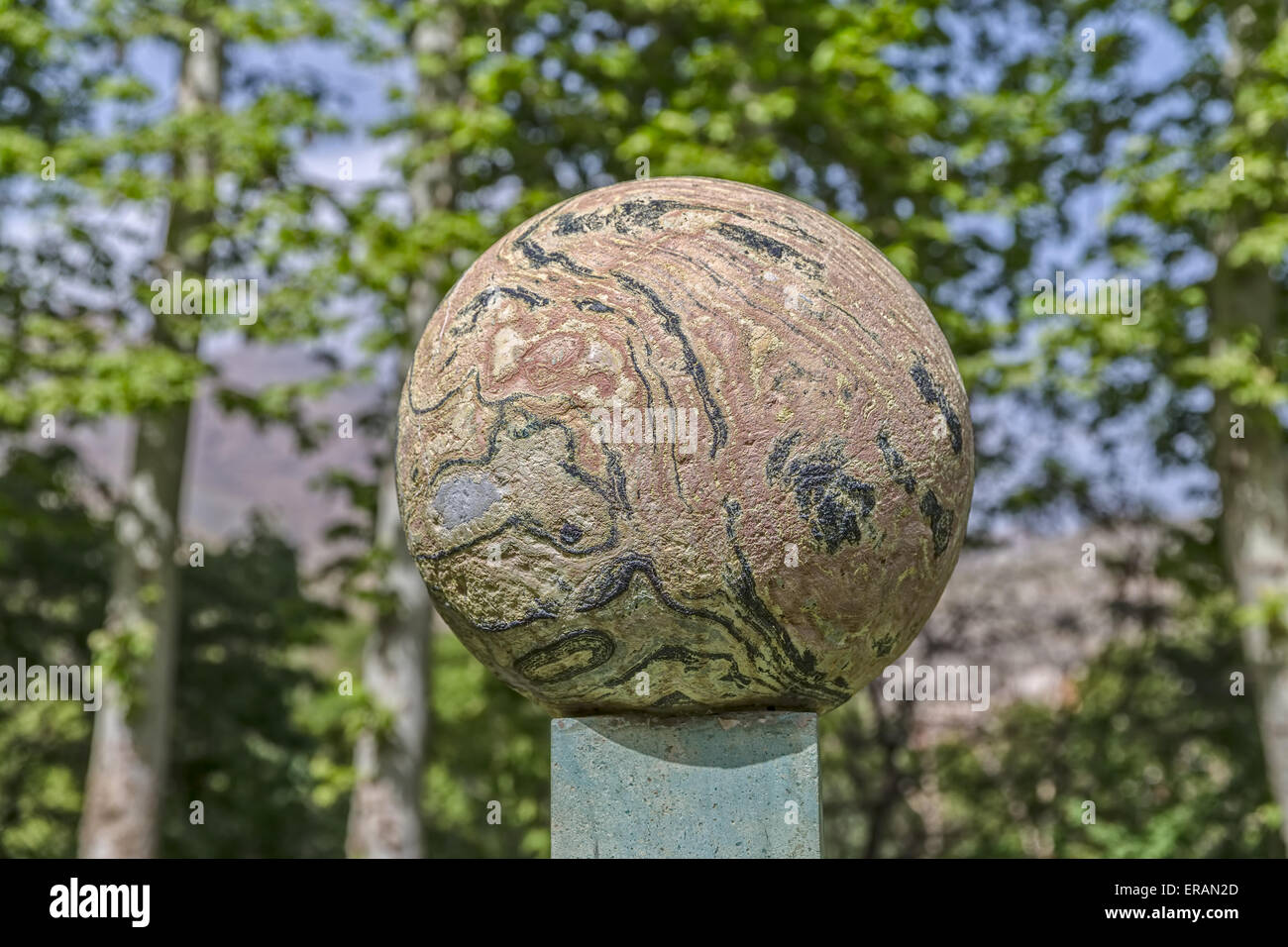 Dappled Stone ball Stock Photohttps://www.alamy.com/image-license-details/?v=1https://www.alamy.com/stock-photo-dappled-stone-ball-83214613.html
Dappled Stone ball Stock Photohttps://www.alamy.com/image-license-details/?v=1https://www.alamy.com/stock-photo-dappled-stone-ball-83214613.htmlRFERAN2D–Dappled Stone ball
 Miniature Glass Bottle 9th century No direct evidence for the production of glass was revealed during the Nishapur excavations, although we assume that glass objects were in fact made in Nishapur, especially the utilitarian vessels found in quantity in the Sabz Pushan neighborhood. Miniature bottles like this have been found in large numbers in many excavations. Originally they may have been closed with stoppers made of soft materials that no longer survive, and used to hold liquids or powders.. Miniature Glass Bottle. 9th century. Glass, greenish; blown. Excavated in Iran, Nishapur. Glass Stock Photohttps://www.alamy.com/image-license-details/?v=1https://www.alamy.com/miniature-glass-bottle-9th-century-no-direct-evidence-for-the-production-of-glass-was-revealed-during-the-nishapur-excavations-although-we-assume-that-glass-objects-were-in-fact-made-in-nishapur-especially-the-utilitarian-vessels-found-in-quantity-in-the-sabz-pushan-neighborhood-miniature-bottles-like-this-have-been-found-in-large-numbers-in-many-excavations-originally-they-may-have-been-closed-with-stoppers-made-of-soft-materials-that-no-longer-survive-and-used-to-hold-liquids-or-powders-miniature-glass-bottle-9th-century-glass-greenish-blown-excavated-in-iran-nishapur-glass-image458112823.html
Miniature Glass Bottle 9th century No direct evidence for the production of glass was revealed during the Nishapur excavations, although we assume that glass objects were in fact made in Nishapur, especially the utilitarian vessels found in quantity in the Sabz Pushan neighborhood. Miniature bottles like this have been found in large numbers in many excavations. Originally they may have been closed with stoppers made of soft materials that no longer survive, and used to hold liquids or powders.. Miniature Glass Bottle. 9th century. Glass, greenish; blown. Excavated in Iran, Nishapur. Glass Stock Photohttps://www.alamy.com/image-license-details/?v=1https://www.alamy.com/miniature-glass-bottle-9th-century-no-direct-evidence-for-the-production-of-glass-was-revealed-during-the-nishapur-excavations-although-we-assume-that-glass-objects-were-in-fact-made-in-nishapur-especially-the-utilitarian-vessels-found-in-quantity-in-the-sabz-pushan-neighborhood-miniature-bottles-like-this-have-been-found-in-large-numbers-in-many-excavations-originally-they-may-have-been-closed-with-stoppers-made-of-soft-materials-that-no-longer-survive-and-used-to-hold-liquids-or-powders-miniature-glass-bottle-9th-century-glass-greenish-blown-excavated-in-iran-nishapur-glass-image458112823.htmlRM2HH8RG7–Miniature Glass Bottle 9th century No direct evidence for the production of glass was revealed during the Nishapur excavations, although we assume that glass objects were in fact made in Nishapur, especially the utilitarian vessels found in quantity in the Sabz Pushan neighborhood. Miniature bottles like this have been found in large numbers in many excavations. Originally they may have been closed with stoppers made of soft materials that no longer survive, and used to hold liquids or powders.. Miniature Glass Bottle. 9th century. Glass, greenish; blown. Excavated in Iran, Nishapur. Glass
 Members of the Afghan theatre ensemble Rah-e Sabz perform Shakespeare's 'Comedy of Errors' at Globe in Neuss. They performed the play in thr Iranian language Farsi at the 22nd Shakespeare Festival. Photo: Daniel Naupold Stock Photohttps://www.alamy.com/image-license-details/?v=1https://www.alamy.com/stock-photo-members-of-the-afghan-theatre-ensemble-rah-e-sabz-perform-shakespeares-55486910.html
Members of the Afghan theatre ensemble Rah-e Sabz perform Shakespeare's 'Comedy of Errors' at Globe in Neuss. They performed the play in thr Iranian language Farsi at the 22nd Shakespeare Festival. Photo: Daniel Naupold Stock Photohttps://www.alamy.com/image-license-details/?v=1https://www.alamy.com/stock-photo-members-of-the-afghan-theatre-ensemble-rah-e-sabz-perform-shakespeares-55486910.htmlRMD67J3A–Members of the Afghan theatre ensemble Rah-e Sabz perform Shakespeare's 'Comedy of Errors' at Globe in Neuss. They performed the play in thr Iranian language Farsi at the 22nd Shakespeare Festival. Photo: Daniel Naupold
 Veiled Woman 9th–10th century Colored with blue, yellow, black and traces of red, this fragment from a wall painting was excavated from the mound at Nishapur known as Sabz Pushan (the Green Covered). The excavations at Sabz Pushan revealed part of a residential neighborhood dating to the tenth century. This and several similar fragments were found deposited in the bottom of a well dug into the floor of what was likely a domestic unit after having been chipped off a wall and discarded, so their original location is not known. Several are now housed in the Metropolitan Museum, and include 38.40. Stock Photohttps://www.alamy.com/image-license-details/?v=1https://www.alamy.com/veiled-woman-9th10th-century-colored-with-blue-yellow-black-and-traces-of-red-this-fragment-from-a-wall-painting-was-excavated-from-the-mound-at-nishapur-known-as-sabz-pushan-the-green-covered-the-excavations-at-sabz-pushan-revealed-part-of-a-residential-neighborhood-dating-to-the-tenth-century-this-and-several-similar-fragments-were-found-deposited-in-the-bottom-of-a-well-dug-into-the-floor-of-what-was-likely-a-domestic-unit-after-having-been-chipped-off-a-wall-and-discarded-so-their-original-location-is-not-known-several-are-now-housed-in-the-metropolitan-museum-and-include-3840-image458472706.html
Veiled Woman 9th–10th century Colored with blue, yellow, black and traces of red, this fragment from a wall painting was excavated from the mound at Nishapur known as Sabz Pushan (the Green Covered). The excavations at Sabz Pushan revealed part of a residential neighborhood dating to the tenth century. This and several similar fragments were found deposited in the bottom of a well dug into the floor of what was likely a domestic unit after having been chipped off a wall and discarded, so their original location is not known. Several are now housed in the Metropolitan Museum, and include 38.40. Stock Photohttps://www.alamy.com/image-license-details/?v=1https://www.alamy.com/veiled-woman-9th10th-century-colored-with-blue-yellow-black-and-traces-of-red-this-fragment-from-a-wall-painting-was-excavated-from-the-mound-at-nishapur-known-as-sabz-pushan-the-green-covered-the-excavations-at-sabz-pushan-revealed-part-of-a-residential-neighborhood-dating-to-the-tenth-century-this-and-several-similar-fragments-were-found-deposited-in-the-bottom-of-a-well-dug-into-the-floor-of-what-was-likely-a-domestic-unit-after-having-been-chipped-off-a-wall-and-discarded-so-their-original-location-is-not-known-several-are-now-housed-in-the-metropolitan-museum-and-include-3840-image458472706.htmlRM2HHW6H6–Veiled Woman 9th–10th century Colored with blue, yellow, black and traces of red, this fragment from a wall painting was excavated from the mound at Nishapur known as Sabz Pushan (the Green Covered). The excavations at Sabz Pushan revealed part of a residential neighborhood dating to the tenth century. This and several similar fragments were found deposited in the bottom of a well dug into the floor of what was likely a domestic unit after having been chipped off a wall and discarded, so their original location is not known. Several are now housed in the Metropolitan Museum, and include 38.40.
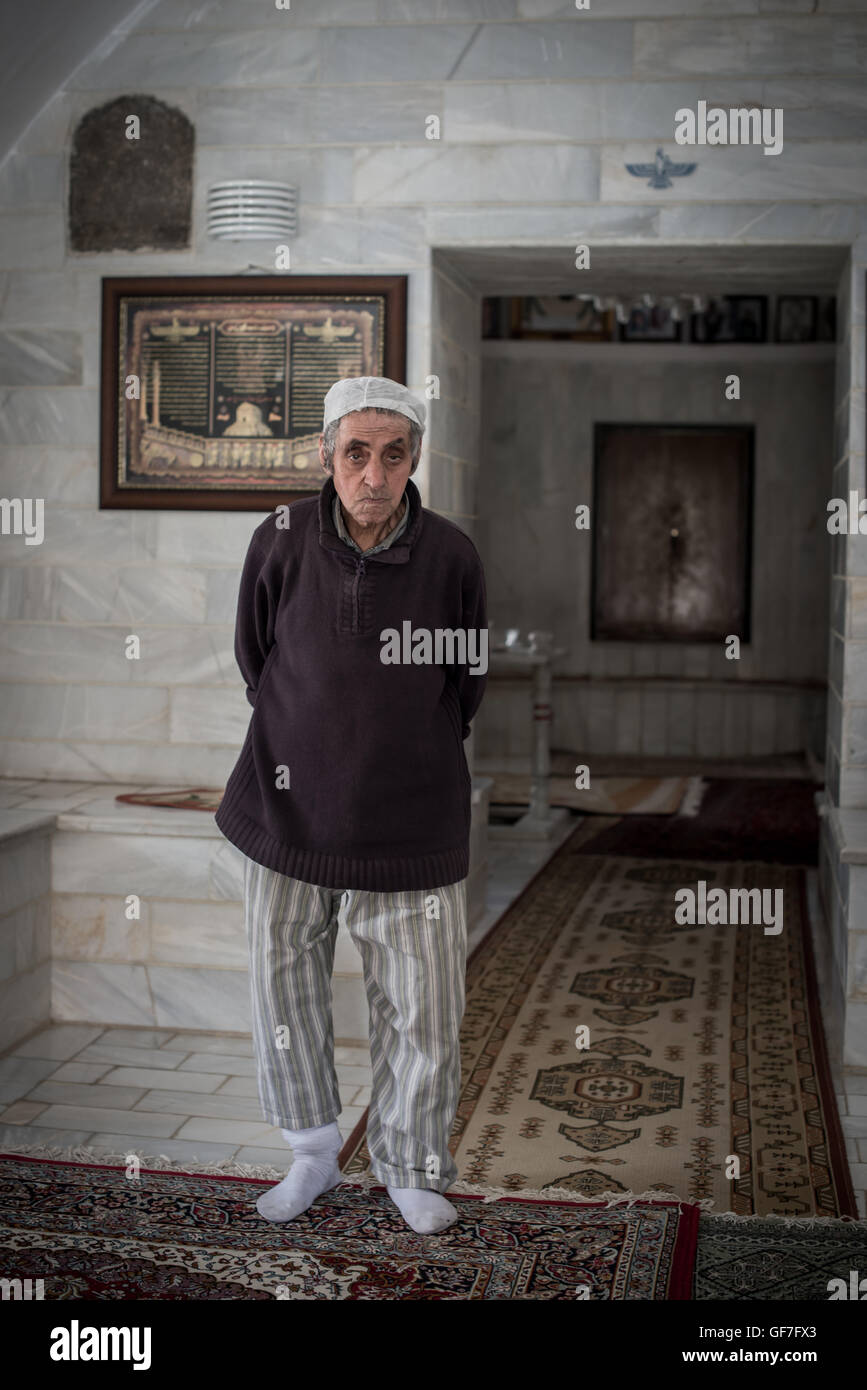 Elderly shrine keeper in front of the Zoroastrian fire temple Pir-e Sabz. Near Yazd, Iran Stock Photohttps://www.alamy.com/image-license-details/?v=1https://www.alamy.com/stock-photo-elderly-shrine-keeper-in-front-of-the-zoroastrian-fire-temple-pir-112648203.html
Elderly shrine keeper in front of the Zoroastrian fire temple Pir-e Sabz. Near Yazd, Iran Stock Photohttps://www.alamy.com/image-license-details/?v=1https://www.alamy.com/stock-photo-elderly-shrine-keeper-in-front-of-the-zoroastrian-fire-temple-pir-112648203.htmlRMGF7FX3–Elderly shrine keeper in front of the Zoroastrian fire temple Pir-e Sabz. Near Yazd, Iran